

13 Fascinating Celtic Symbols and Their Meanings: A Journey into Irish Lore
Looking to discover some fascinating Celtic symbols and their meanings? Look no further!
As an Irish local with a deep-rooted love for our rich culture, I’ve curated a list of the 13 most fascinating Celtic symbols and their meanings – those ubiquitous motifs that are intrinsically linked with Ireland and the intriguing Celtic culture.
Aimed at curious travellers like you, this guide will delve into both popular and lesser-known symbols, each carrying centuries of Irish lore and mystique.
My guide to Celtic symbols includes:
- The Claddagh and its meanings.
- The Celtic Cross and how it evolved.
- Symbols synonymous with all things Ireland.
- And some lesser-known, but equally beautiful Celtic symbols.
So, ready to unlock the secrets of these captivating symbols and embrace the ancient wisdom they carry? Let’s dive in together.
Originally published in May 2021, Updated November 2023.
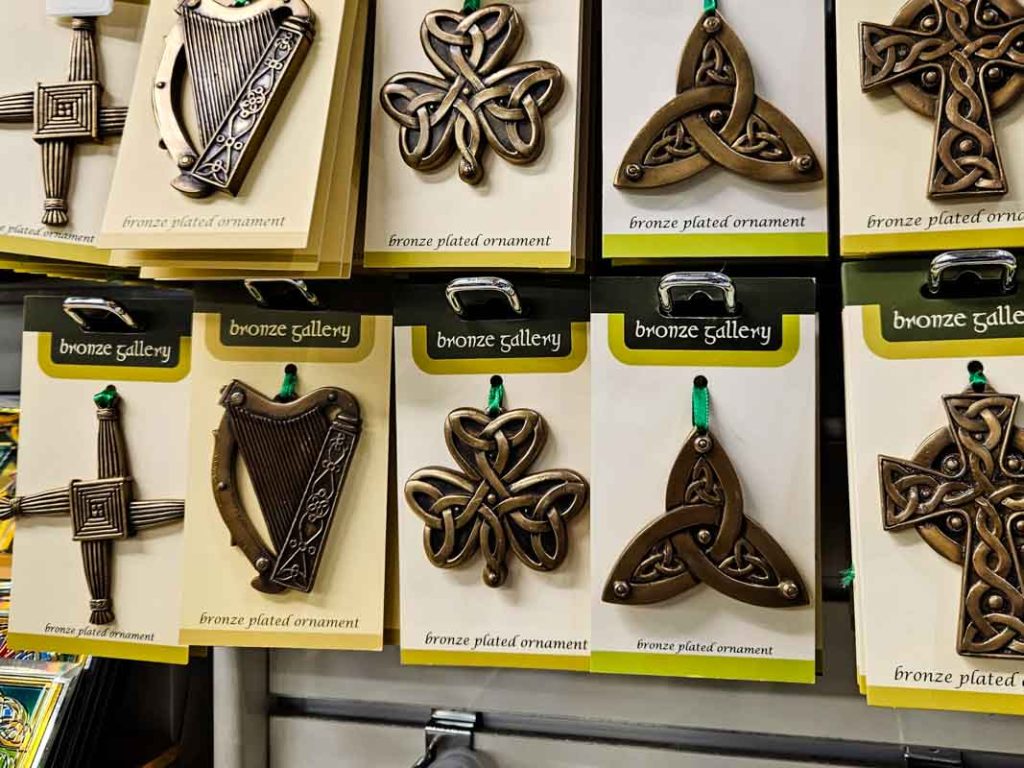
13 Serch Bythol
Irish celtic symbols and their meanings.
Ancient Celtic symbols have been around for centuries, and while many have pagan origins, they were later incorporated into Christian culture and religion and today can be seen across many places such as graveyards, churches, and ancient monuments.
The word “Celt” describes a collection of tribes who shared similar religious beliefs, languages, traditions, and cultures. The tribes were spread across Western Europe and included tribes from France, Spain, Britain, and, of course, Ireland.
While their existence was first documented in the 7 th or 8 th centuries BC, it is believed the Celtic culture began evolving as far back as 1200 BC. The Romans referred to Celts as “Galli” meaning Barbarian.
Celtic culture was strong in Ireland and when Christianity was brought to the Emerald Isle during the 4 th and 5 th centuries AD, many Celtic traditions were incorporated into the “new” religion. It is many of these ancient Celtic symbols that we still see today in all aspects of Irish modern-day culture and symbolism.
Below are 13 examples of ancient Celtic symbols and meanings to shed some light on where many of the symbols you can see around Ireland originated from and what they represent.
1 Celtic Cross
The Celtic Cross predates Christianity and is believed to be a symbolic compass. It represents the four cardinal directions of Earth, Fire, Wind, and Water. It also represents the mind, body, soul, and heart.
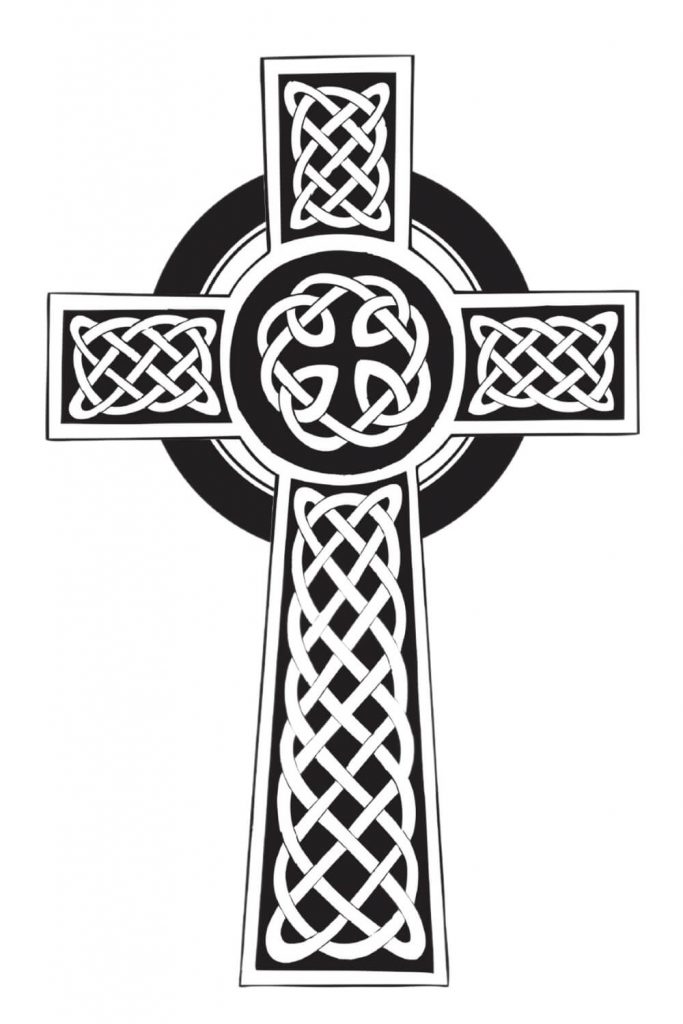
The Celtic Cross emerged in the Middle Ages, and early examples date to around the 9 th century. The oldest High stone crosses still standing in Ireland date from between the 8 th and 12 th centuries.
Notable High crosses with Celtic shapes in Ireland can be viewed at
- Ahenny, Tipperary
- Dysert O’Dea Monastery, Clare
- Glendalough, Wicklow
- Monasterboice, Louth
- Clonmacnoise, Offaly
- Kells, Meath
I’ve seen the High Cross examples on the grounds of the Rock of Cashel, at Glendalough and the three High Crosses at Clonmacnoise (one is pictured below), now housed in the Visitor Centre to protect them from the weather and human erosion. Replicas have been placed outside on the grounds.
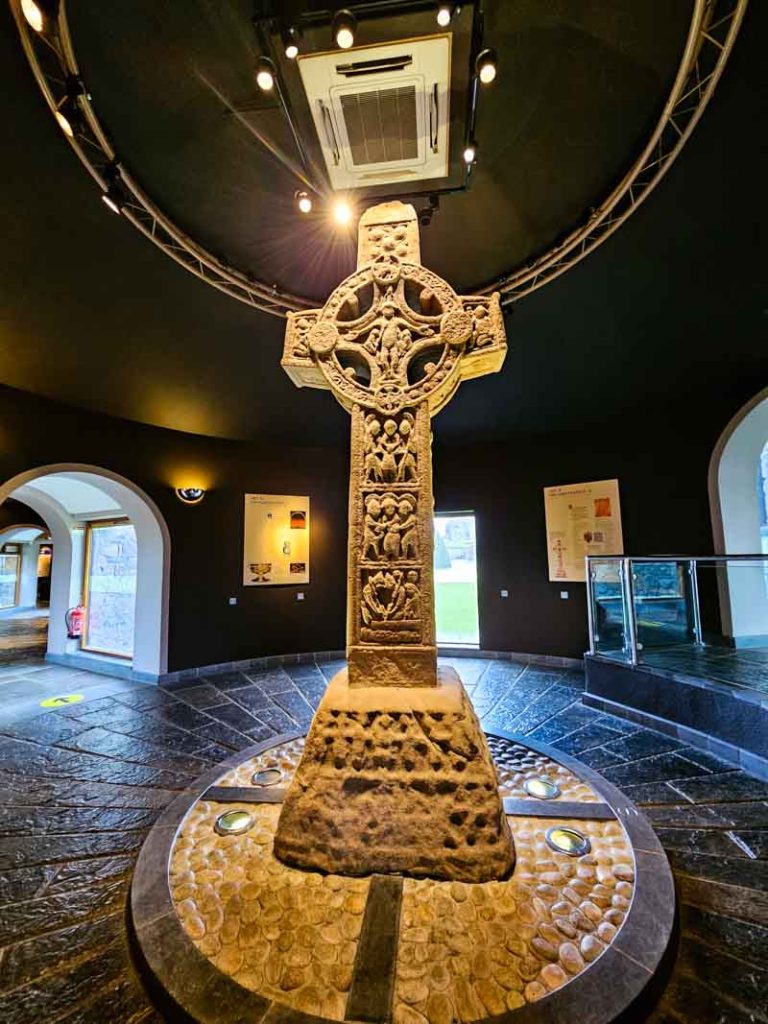
Celtic Crosses were erected on lands in homage to the Christian faith and were popular across Ireland as well as France and Britain. Today, many Church grounds and graveyards across Ireland have examples of it.
Typically, the Celtic Cross is comprised of a Latin cross with a nimbus surrounding the intersection of the arms and stem.
Legend says that the Celtic Cross was introduced to Ireland by either St Patrick or St Declan and that the circle was used to denote the sun to pagans. It was used to appeal to the pagans to convert them to Christianity.
It is said that the Christian cross was placed over the pagan sun to demonstrate the supremacy of Christianity.
The Celtic Cross, as a symbol, represents knowledge, strength, and compassion, while the central ring represents infinite love (god’s endless love) or a depiction of the halo of Christ.
2 Claddagh Ring
The Claddagh Ring is a traditional Irish ring, also called Fáinne Chladaigh in Irish, representing love (heart), loyalty (crown), and friendship (hands) and is something people associate with Ireland as soon as they see it.
It originated in the small Galway fishing village of the same name and was first produced in its current form in the 17 th century. However, it is thought to have been based on an earlier version.
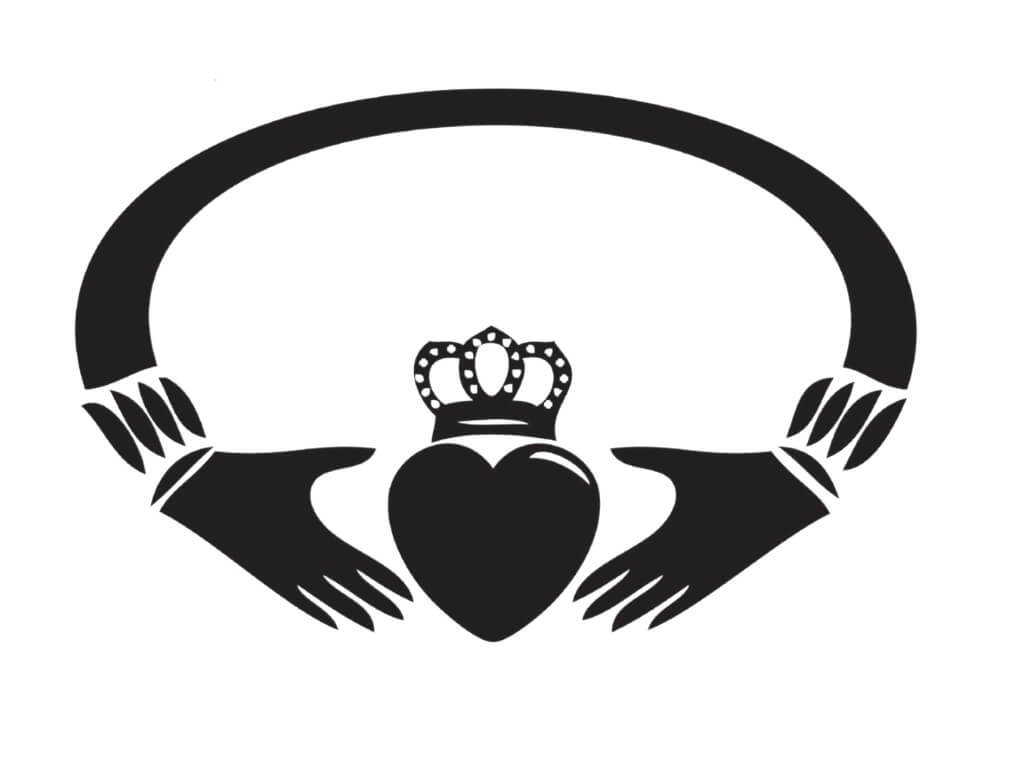
It belongs to a group of European finger rings called fede rings (hands in faith/hands joined in loyalty), which date back to Roman times.
Fede rings were used as engagement and wedding rings in medieval and Renaissance Europe and were based on clasping hands that indicated friendship, love, and betrothal.
The rings became popular from the 12th century and some believed the hands were clasped in faith and prayer.
Nowadays, how the ring is worn conveys the wearer’s relationship status to others.
- Worn on the right hand with the heart pointing to the fingertips denotes the wearer is single and maybe looking for love.
- Worn on the right hand with the heart pointing to the wrist denotes the wearer is in a relationship, that someone has “captured their heart”.
- Worn on the left hand with the heart pointing to the fingertips denotes the wearer is engaged.
- Worn on the left hand with the heart pointing to the wrist denotes the wearer is married.
In Irish tradition, the Claddagh is passed down from mother to daughter and kept in the family for generations. And it is often worn to symbolise Irish identity.
My family have many examples of Claddagh jewellery including rings and necklaces such as the one I own below.
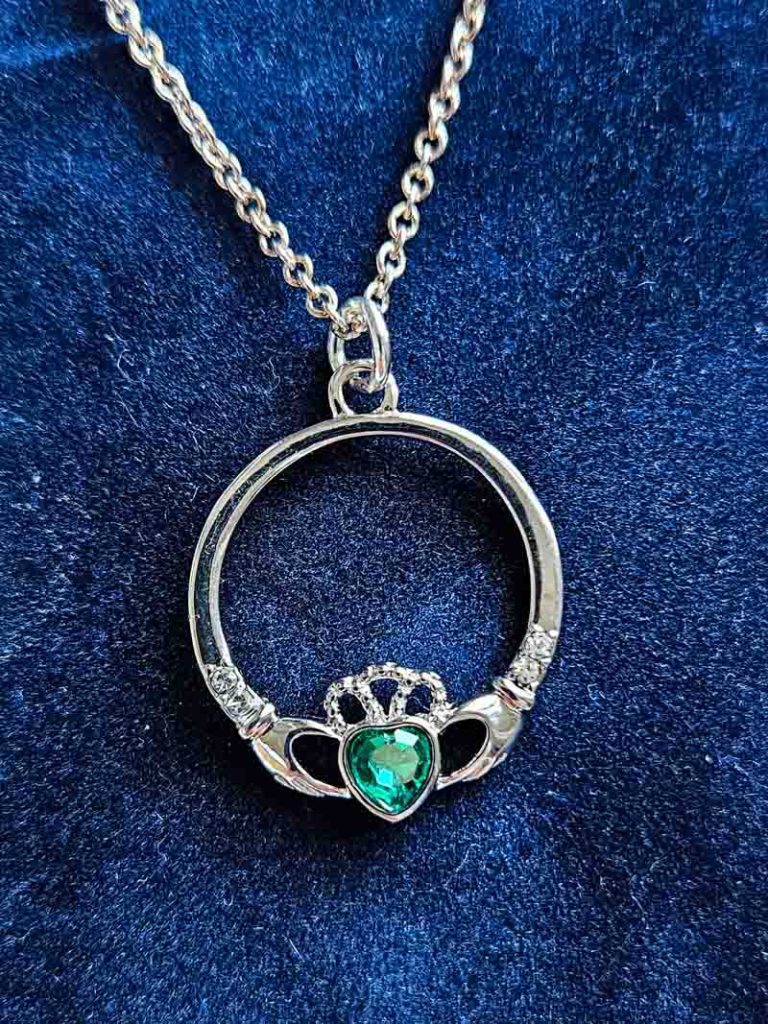
3 Celtic Harp
This symbol is one of the most widely associated with Ireland and was first adopted as the emblem of the Irish Free State in 1922 upon separation from the United Kingdom .
It was registered as the coat of arms of Ireland in 1945 but was used by the Kings of Ireland as far back as the 13 th century.
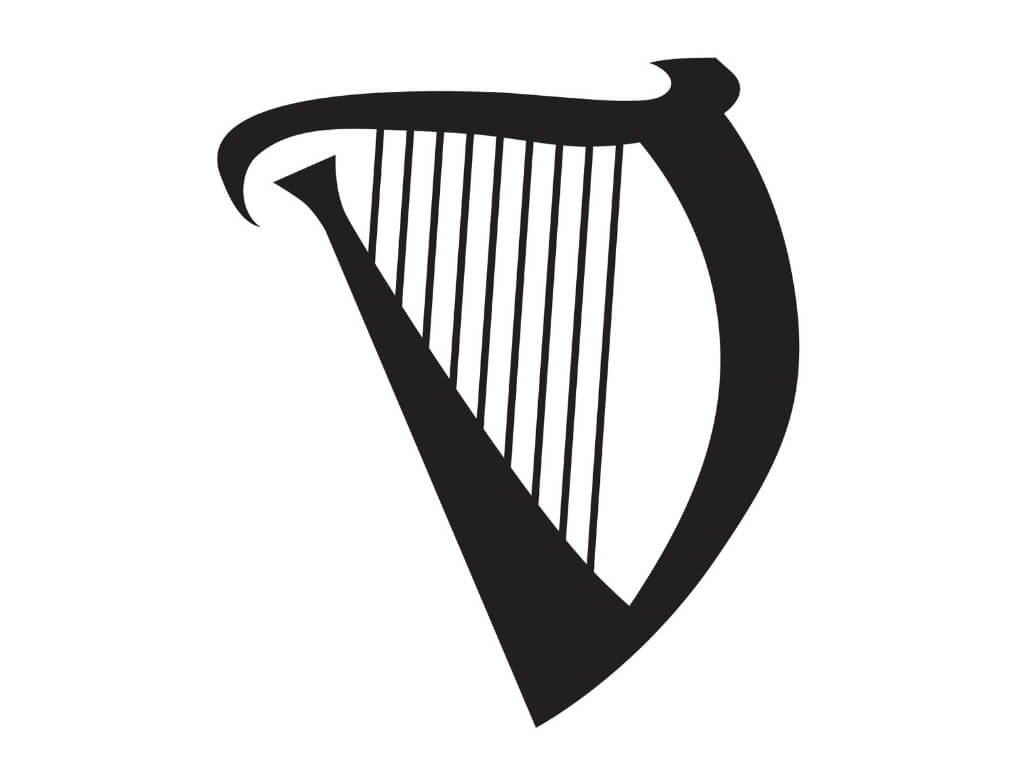
The Harp is the official symbol or emblem of Ireland, and Ireland is the only country whose official emblem is a musical instrument.
The current design is based on the 14th-century Brian Boru Harp, which is one of the oldest harps in Ireland and is now housed in the Long Room of Trinity College . I’ve seen this harp and it is incredible.
Known as the Harp of Erin, the harp was first depicted as a symbol of the Kingdom of Ireland on Irish coins from the mid-16th century.
The Harp was an emblem of resistance against the Crown of England and was banned at the end of the medieval period by Elizabeth I, resulting in a decline in the old Celtic Harp traditions. It took over 200 years for it to find its way back into Irish culture.
The harp is said to symbolise the immortal soul that can pass through death o eternal life.
Today, as well as being the emblem of Ireland, it is also used in the following places
- Guinness symbol (although it is right-facing, pictured below)
- Irish Passports
- Official Government seals and documents
- The back of coins minted in Ireland
The left-facing version is the official emblem of Ireland and is trademarked.
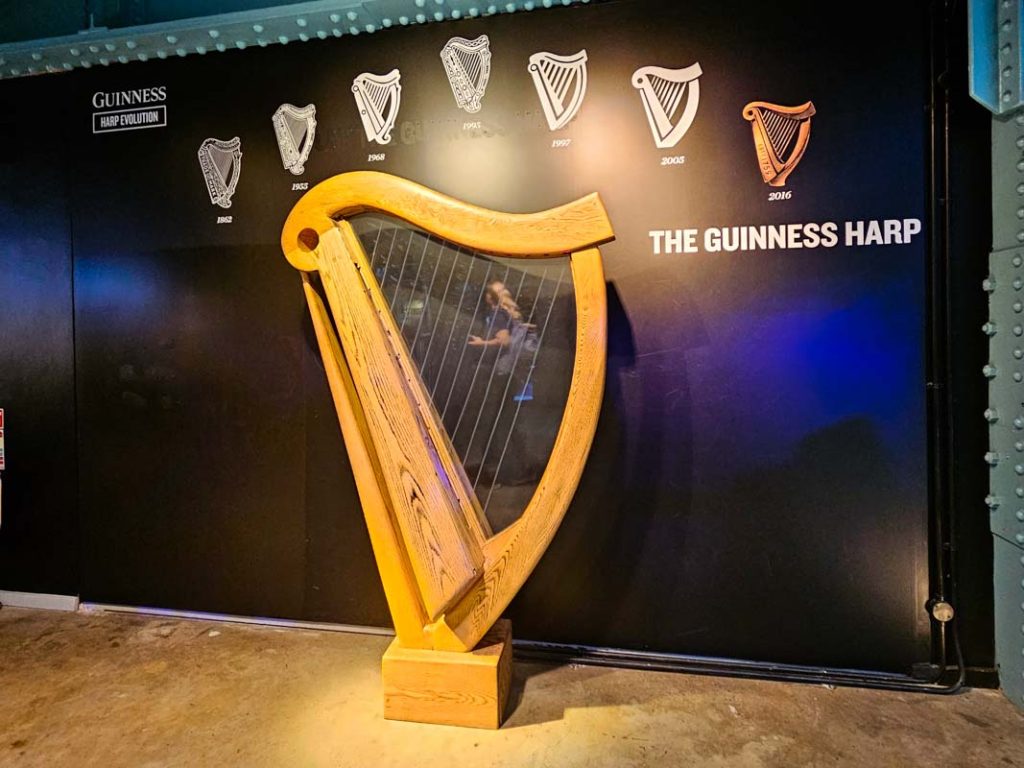
4 Celtic Tree of Life
The Tree of Life symbol has been dated back to the ancient Egyptians who carved it on tombs to symbolise eternal life.
The Celtic Tree of Life, or Crann Bethadh, features in history and religion including Celtic mythology where it was believed to possess special powers.
To Celts, it symbolised strength, long life, nobility, and wisdom. It also symbolised harmony and balance. It can represent rebirth, as the Celts derived the meaning of rebirth from the seasonal changes of trees.
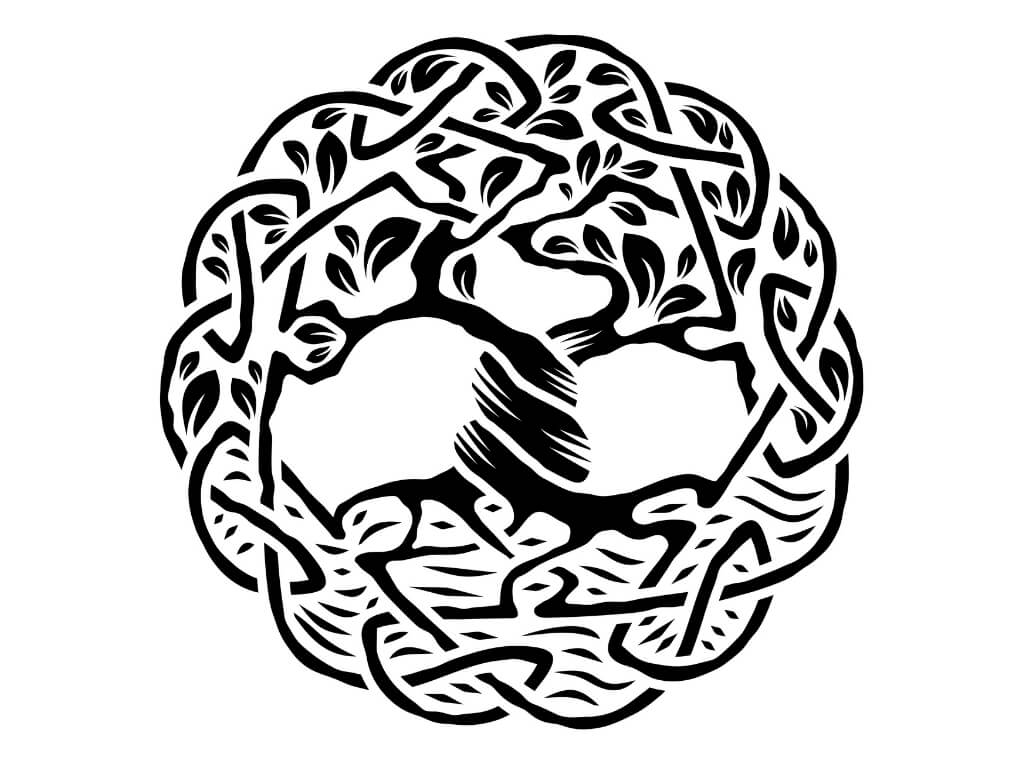
The Tree of Life represents a connection between the lower and upper worlds to the Earth’s plane and symbolised forces of nature coming together in harmony and balance.
Druids believed in the connection between heaven and earth, and the Tree of Life is a symbol of this connection.
Typically the Tree of Life takes the form of an oak tree. The Celts believed trees were ancestors of human beings, with the largest oak considered the most important Tree of Life.
They planted or kept one large tree in the centre of their fields (representing the centre of the world) where they held special meetings and it provided shelter and food for wildlife.
The most sacred tree was the oak and the origin of the word ‘door’ comes from the Celtic name daur . The oak was seen as a ‘doorway’ to the otherworld, the realm of the Fairy.
As well as being a doorway to the spirit world, it acted as a guard on the land. The Celts believed that their enemies were rendered powerless if their sacred tree was felled.
The Tree of Life is a popular Celtic symbol used in jewellery.
💡 Did you know that the Celts’ reverence for trees was the basis for the formation of the Celtic Ogham Alphabet which is also known as the Celtic Tree Alphabet, and also the Celtic Calendar?
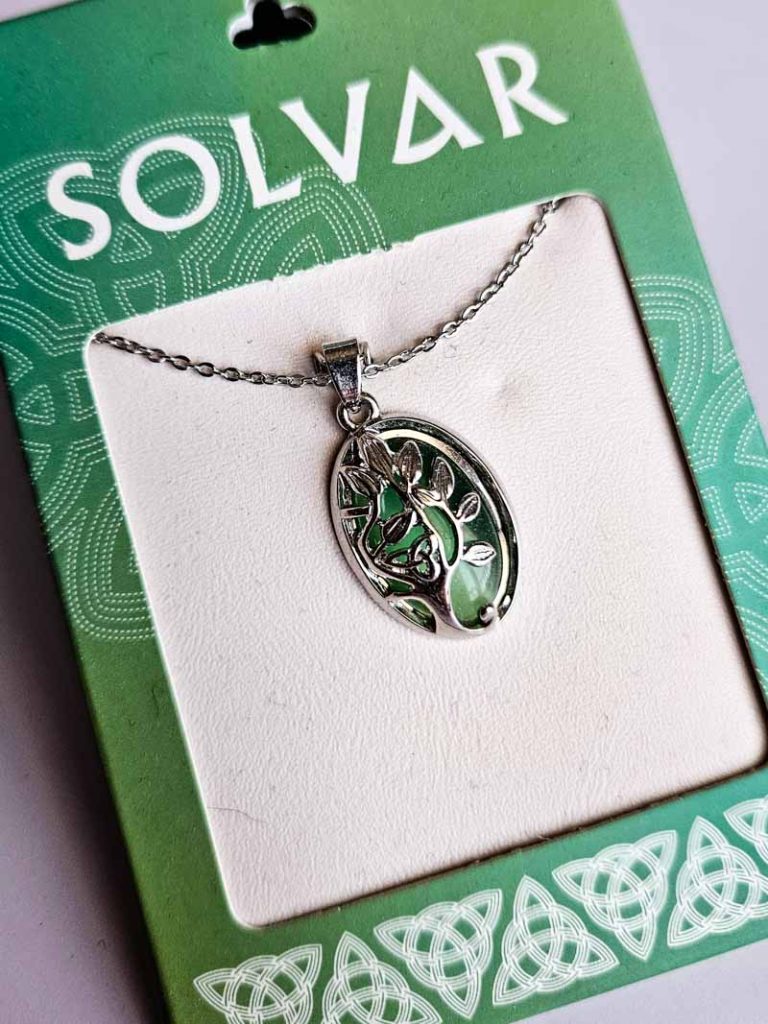
5 Triquetra (Trinity Knot)
The Triquetra or Trinity Knot is composed of three interlaced arcs and is an ancient symbol with multiple meanings across different cultures.
The Latin meaning of a triquetra is three-cornered . It is one of the best-known symbols in Celtic culture and has been seen throughout history since the Iron Age from around the 4th century BC.
It has been used in ornamental design in architecture and medieval manuscripts and is seen often in the Book of Kells. The Triquetra also bears a resemblance to the Valknut , a pagan symbol in Norse mythology.
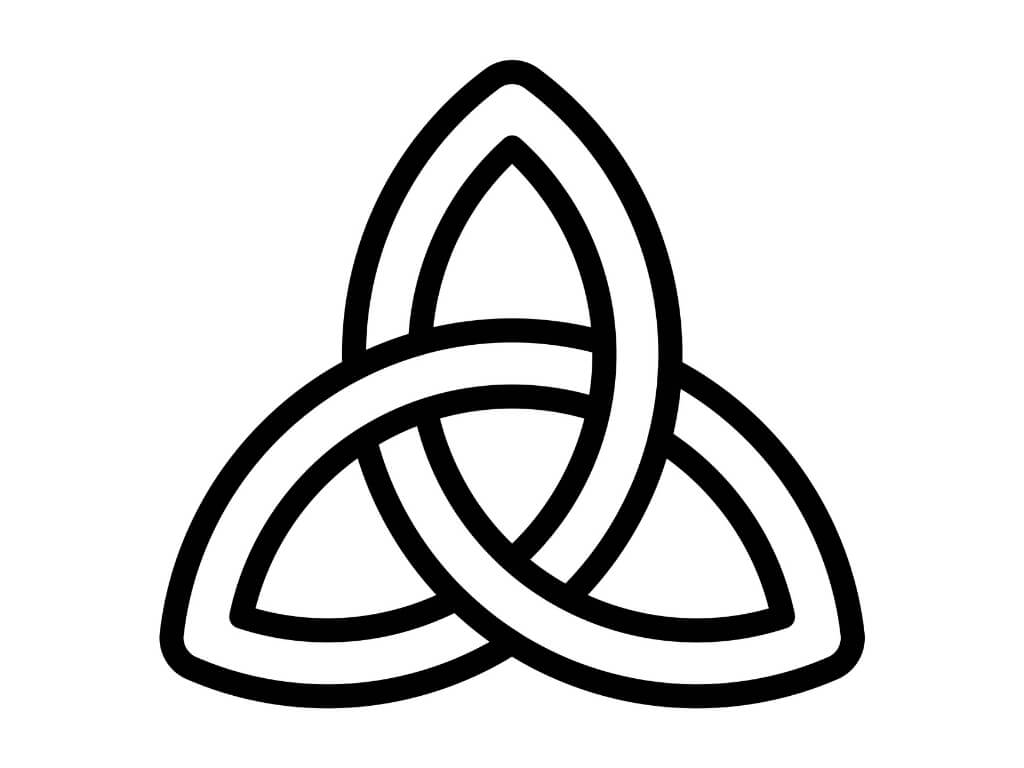
One of the triquetra symbol meanings is as a representation of the neopagan goddess as a mother (creation), maiden (innocence), and crone (wisdom).
For some Celts, it represented the three forces of nature Earth, Fire, and Water, and for others, the three elements of Earth, Sea, and Sky.
The Triquetra was used as an early representation of the Christian Trinity. Other meanings of the Triquetra are
- As a symbol of Ireland’s ancient culture.
- Eternal love (it is also known as an Irish Love Knot).
- To outline the stages of a woman’s life.
- As a gift to convey a wish for longevity, as it represents an uninterrupted life cycle.
Sometimes the Triquetra is encased in a circle as a means to emphasise unity or eternity.
Other times it has an interlaced circle representing a cycle such as life/death/re-birth, past/present/future, and father/mother/child. This is known as the Trinity Knot.
In the 1980s Jim McCabe planted a sylvan Trinity Knot forest for all to enjoy.
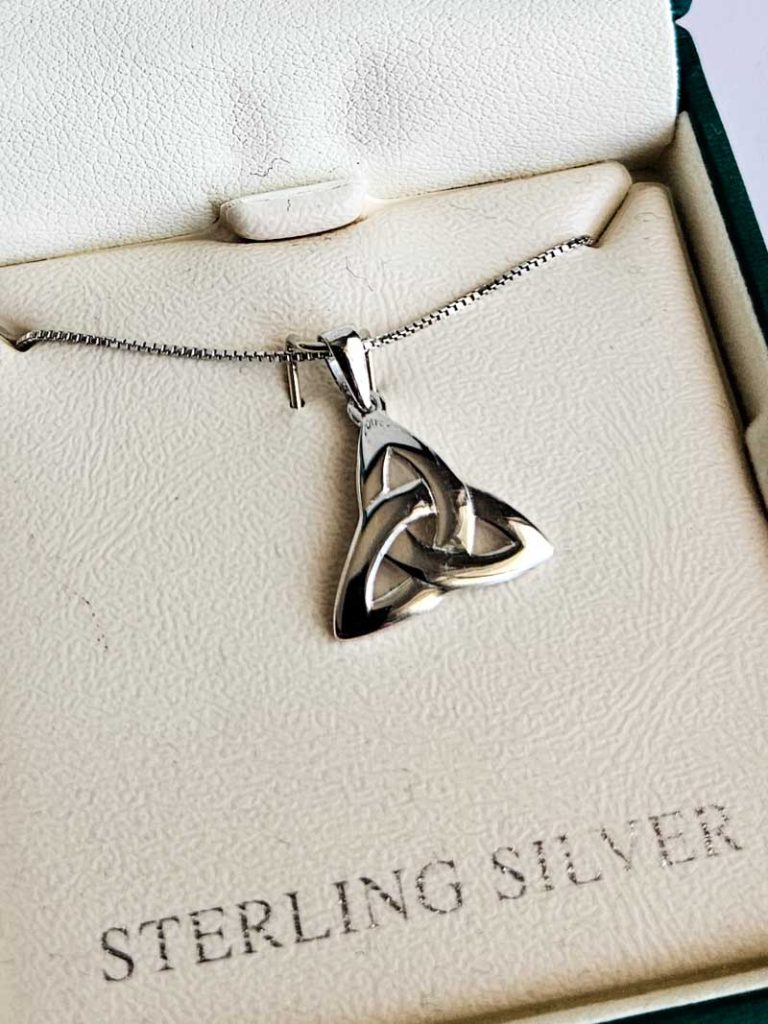
The Shamrock is the national flower of Ireland and is a well-known symbol of Ireland. It is a young sprig and is not to be confused with a four-leaf clover.
The word shamrock comes from the Irish seamróg (seamair óg) meaning young clover or sprig.
The shamrock was an important symbol to the Druids as it represented the triads; sayings or lessons in threes in Celtic wisdom. The plant was respected and also used as an edible healing herb.
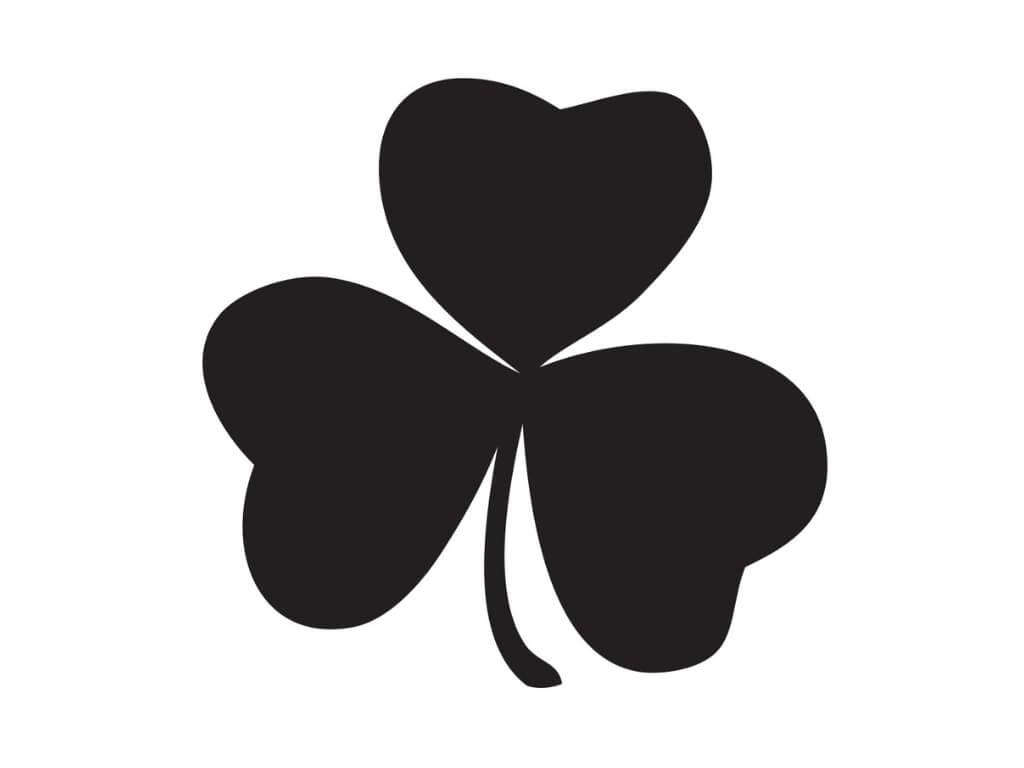
It has been associated with the Celtic goddess Ana/Anu with the three leaves representing her status as maiden, mother, and crone of Ireland.
It is believed to have been used as a metaphor for the Christian Holy Trinity by Saint Patrick .
In pagan Ireland, the number three was a significant number and the Irish had many triple deities, so it is believed the shamrock aided St Patrick in explaining the Holy Trinity to the pagans and converting many to Christianity.
It is chiefly associated with St Patrick’s Day during which there is a tradition of wearing sprigs of shamrocks in hats or lapels.
The shamrock has been a symbol of Ireland since the 18 th century and is used in a variety of places and by a variety of companies including
- Tourism Ireland
- IDA Ireland
- Án Post (regularly feature shamrocks on postage stamps)
- Irish Rugby Union
- Aer Lingus (whose tails bear the shamrock and whose air traffic control call sign is “Shamrock”)
It is also a registered trademark of Ireland, and very popular in jewellery and souvenirs.
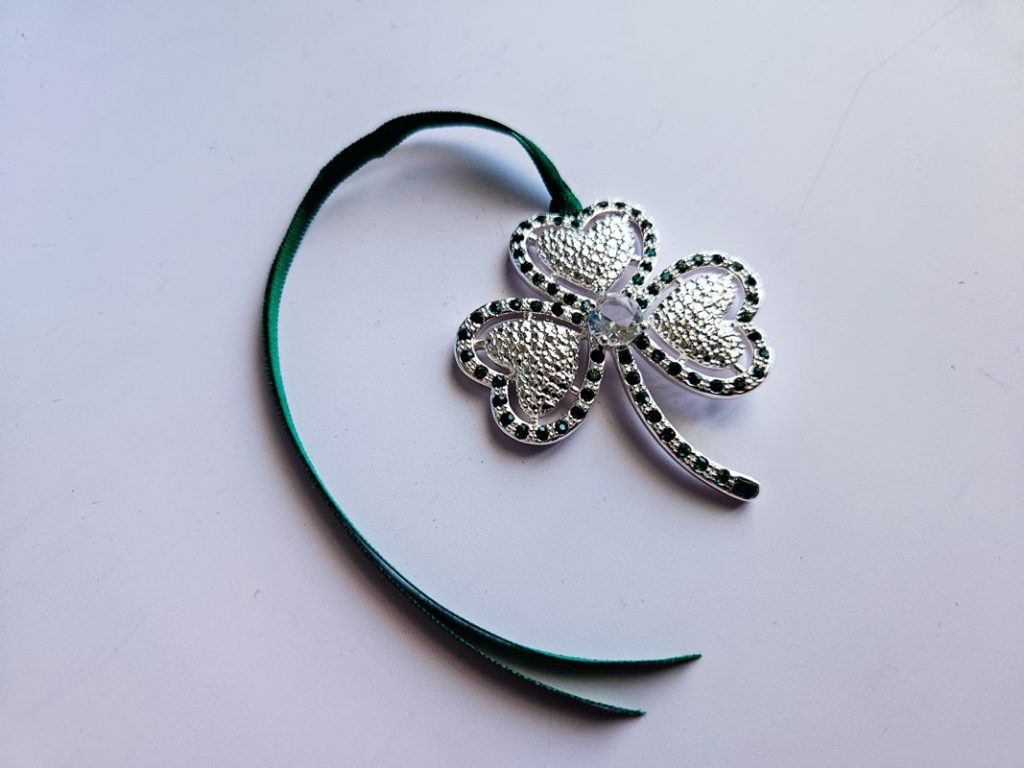
7 Triskele (Triskelion)
A Celtic spiral symbol that is also widely seen in Celtic culture and design is the Triskele. Ir can be found in ancient Celtic carvings and art decorations and has been used since the Neolithic Ages.
Derived from the Greek word Triskeles , Tri meaning three, and Skelos meaning leg, its literal meaning is three legs. It is a complex ancient Celtic symbol and is related to Celtic traditions.
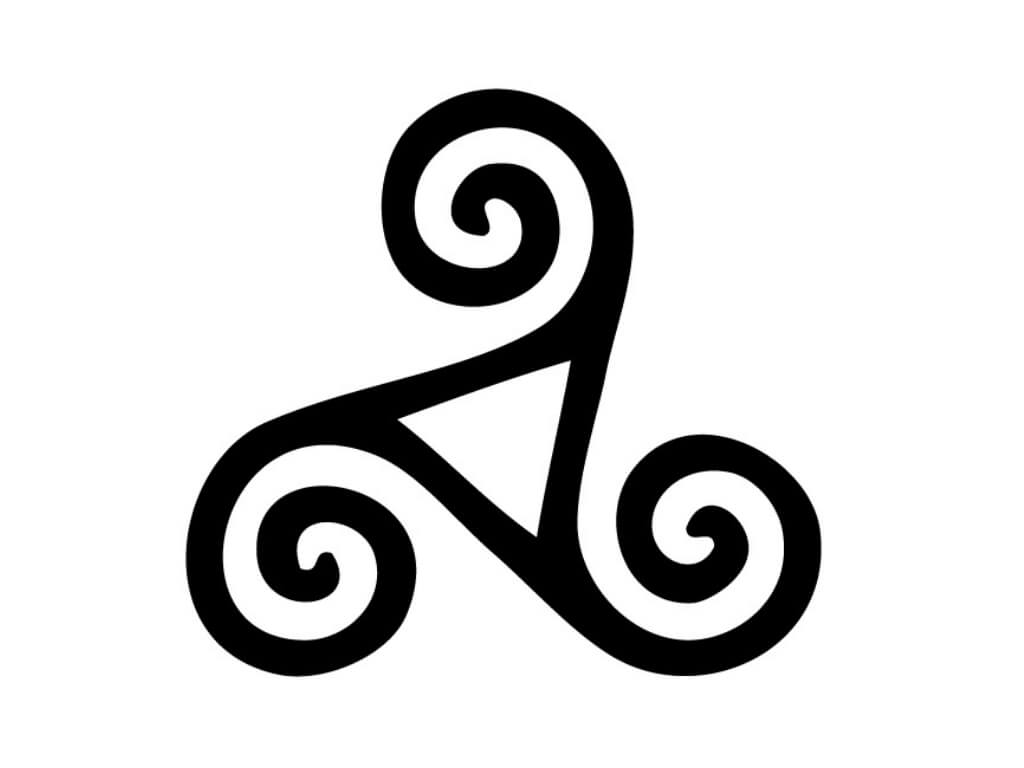
It can be found in artefacts from the European Neolithic and Bronze Age, with some continuation into the Iron Age.
One of the best places to view it is on the entrance stones to the megalithic tomb of Newgrange (dating from 3200 BC, see picture below). The entrance stone has lots of these (see my picture below). There is also one within the tomb itself which you can see, as I did, if you visit.
However, it is older than this, first appearing in Malta between 4400 and 3600 BC.
As one of the oldest Celtic symbols, it reflects many areas of Celtic culture from 500 BC onwards.
In Ireland, it is associated with Manannán mac Lir, the Celtic God of the Sea. It is thought to signify energies and can have different meanings depending on the era, culture, mythology, and history of its use.
Meanings of the Triskele include (some similar to the Triquetra)
- Life, death, rebirth
- Spirit, mind, body
- Earth, water, sky
- Land, sea, sky
- Maiden, mother, wise woman
- Mother, father, child
- Past, present, future
- Power, intellect, love
- Creation, preservation, destruction
- The spiritual world, present world, celestial world
It has also been used to represent the Holy Trinity.
The Triskele is used as an emblem on the flags of both the Isle of Man and Sicily.
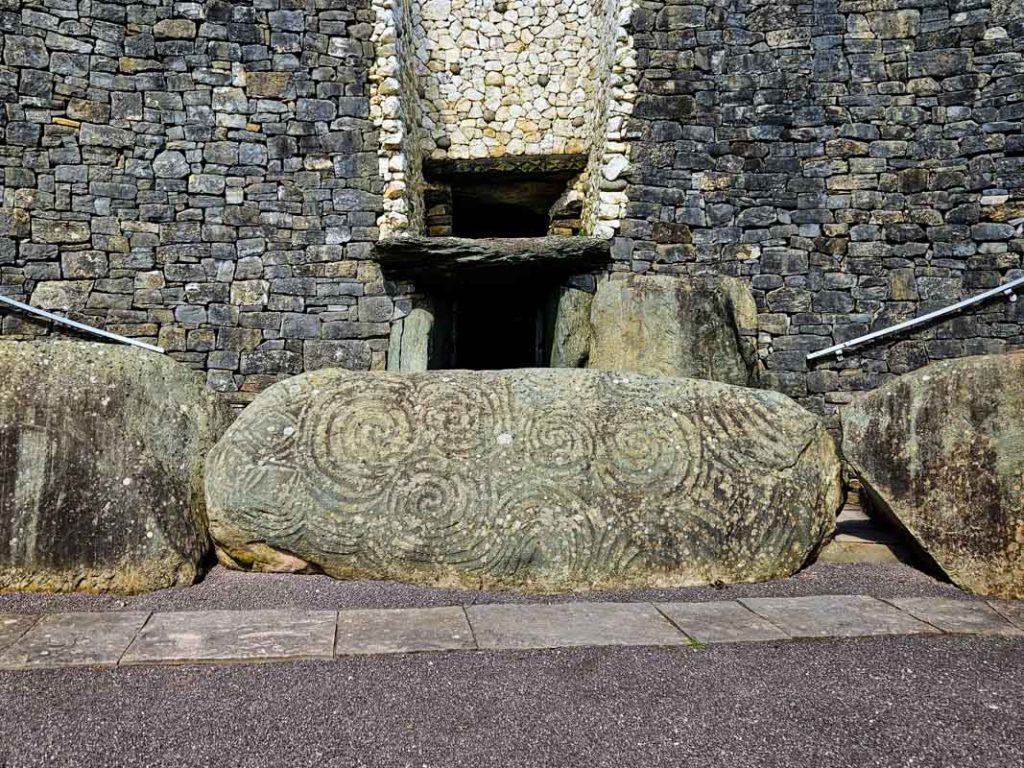
8 Dara Knot
Celtic knots and their meanings are varied but one of the most beautiful is the Dara Knot. This intricate knot resembles a tree and gets its name from the Irish word doire which means oak tree.
It first appeared in the 3rd and 4th centuries and Celtic Knots such as the Dara Knot were used on monuments, in manuscripts, and in temples from the 8 th century. It is one of over eight basic variations of the Celtic Knot.
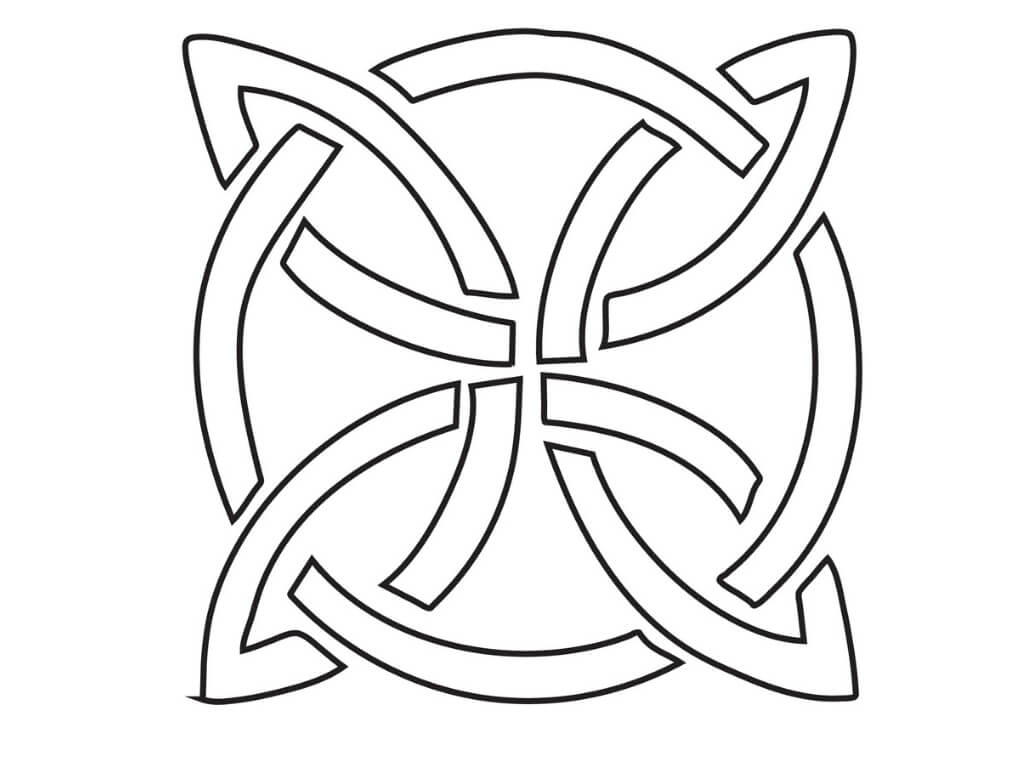
The Dara Knot is characterised by intertwined lines with no beginning and no end. It is a knot said to show the tree and root system of the sacred oak, a common theme through the varieties of this knot.
Oaks, as previously mentioned, were considered sacred in Celtic culture, particularly by the Druids, and the intricate root system is represented in the Dara Knot.
The ancient Celts are believed to have called upon this symbol for strength and wisdom in difficult times and situations. It represented strength, wisdom, power, and leadership. Other meanings of the Dara Knot include
It most commonly symbolises a never-ending life cycle and is said to offer the wearer of such a knot inner strength and divinity.
9 Carolingian Cross
This 9th-century Christian symbol of the crucifixion of Christ is composed of both mixed Christian and Celtic pre-Christian concepts.
It is made from four triquetras or four Celtic unity knots and is a braided variation of the Everlasting Cross. It is often called the Triquetra Cross.
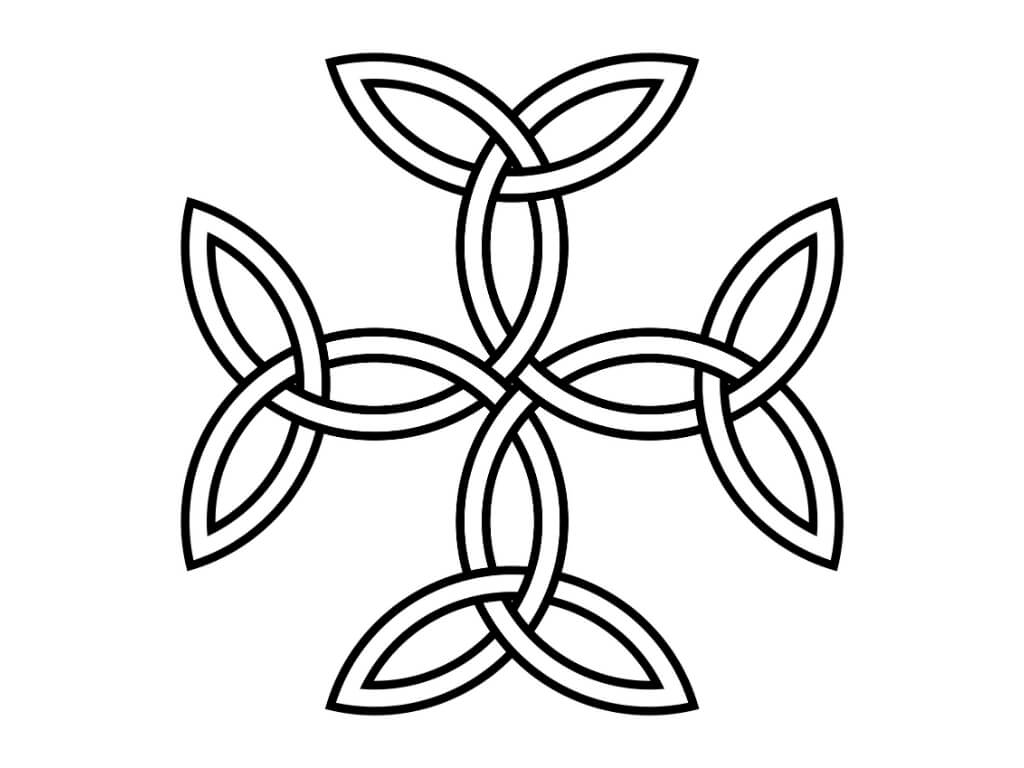
It was named after the Carolingian Dynasty of France, descendants of the 7th century Arnulfing and Pippinid clans who were a Frankish noble family (part of the Celtic Germanic race).
The fusion of the Triquetra and cross shape meant the Carolingian Cross represented a coalition of Christian and pagan groups.
This Celtic Cross symbol is said to represent the ‘eternity of god’. Other meanings include
The four arms have been said to represent the father, son, holy spirit, and the unity of the cosmos, as well as the four seasons.
10 St Brigid’s Cross
St Brigid’s Cross is a Celtic symbol, often seen outside Irish homes on the feast day of St Brigid which is the 1 st of February. It consists of four arms made from woven straw, reeds, or rushes, tied at ends with a woven square middle. We have one at home.
The cross is believed to keep evil, fire, and hunger from the house from which it is hung. Once woven, it is blessed with Holy Water, and the following recanted
May the blessing of God, Father, Son and Holy Ghost be on this Cross and on the place where it hangs, and on everyone who looks upon it.
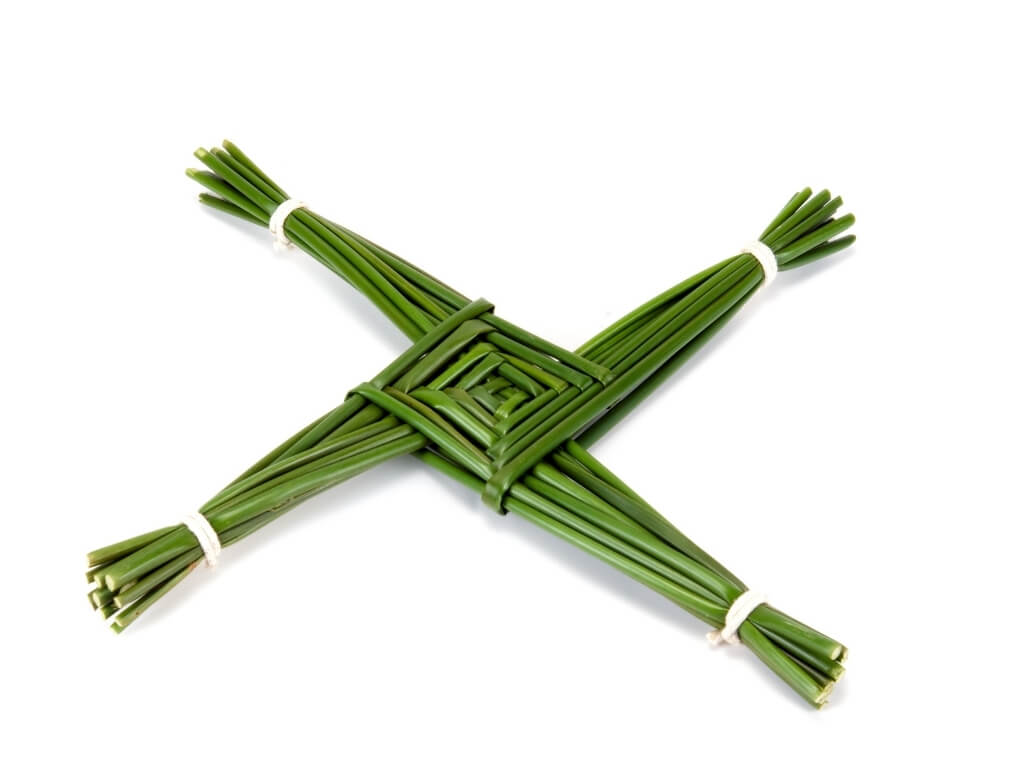
It is attributed to St Brigid, a nun born in Dundalk in 450 AD but it is also associated with Brigid of the Tuatha de Danaan. The Tuatha de Danaan were a supernatural race in Irish Mythology and Brigid was the life-giving goddess.
The Celtic origins lie with the feast of Imbolc, when the Celtic Goddess Brigid was celebrated on her feast day, at the beginning of Spring, halfway between the winter solstice and the spring equinox, and was one of four Gaelic seasonal festivals, along with Bealtaine, Lughnasadh, and Samhain.
In Christianity, it is believed St Brigid weaved the cross at the deathbed of a pagan Lord (or her father) who asked to be baptised upon hearing what it meant. It is St Brigid who is believed to have created the first unique cross at this moment.
Derived from the letter ‘A’ on the Celtic Ogham alphabet where the cross symbolises the letter ‘a’. There are few written records about the meaning of this Celtic symbol.
The symbol is linked with pine, the European silver fir, and occasionally the Cornish elm tree, which were all linked to strength, resilience, and endurance due to their ability to survive adverse weather conditions.
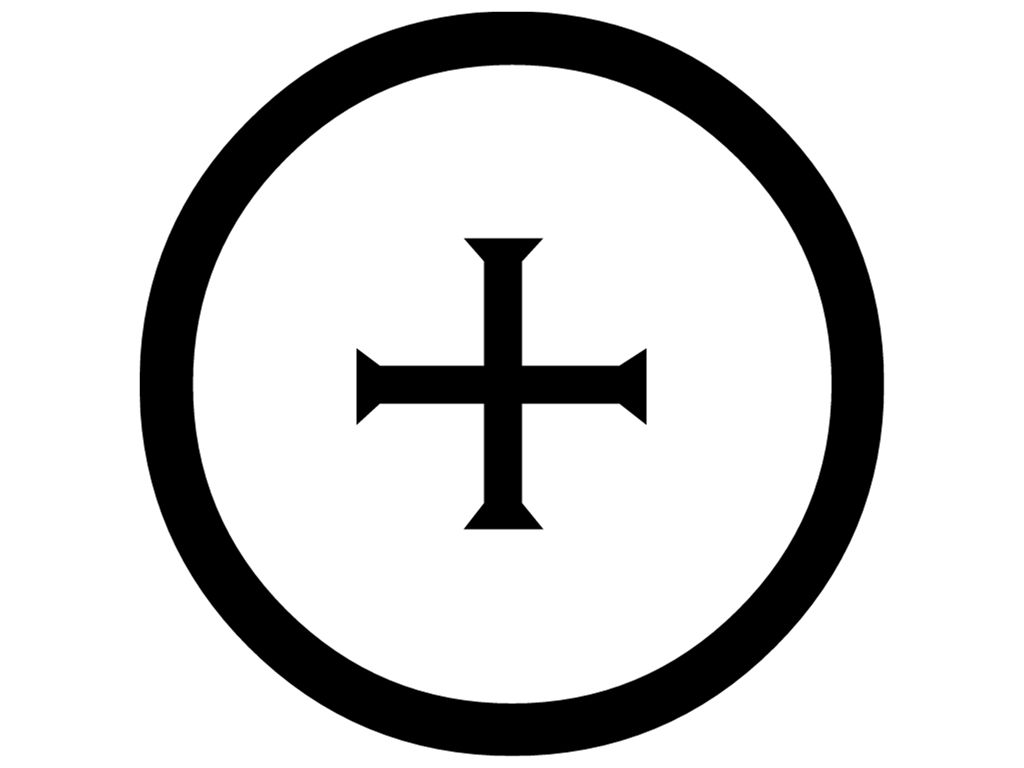
Therefore, the Ailm Celtic Symbol represents strength, resilience, and endurance. Further meanings of the symbol come from the circle surrounding the cross, signifying wholeness and an intact soul.
Together, the meaning becomes pure energy, healing, fertility, protection, and clarity.
12 Celtic Motherhood Knot
The Celtic symbol for motherhood is an adaptation of the Triquetra. It typically consists of two heart-like shapes.
One of the hearts is placed lower than the other and they are intertwined in a continuous knot symbolising eternal love.
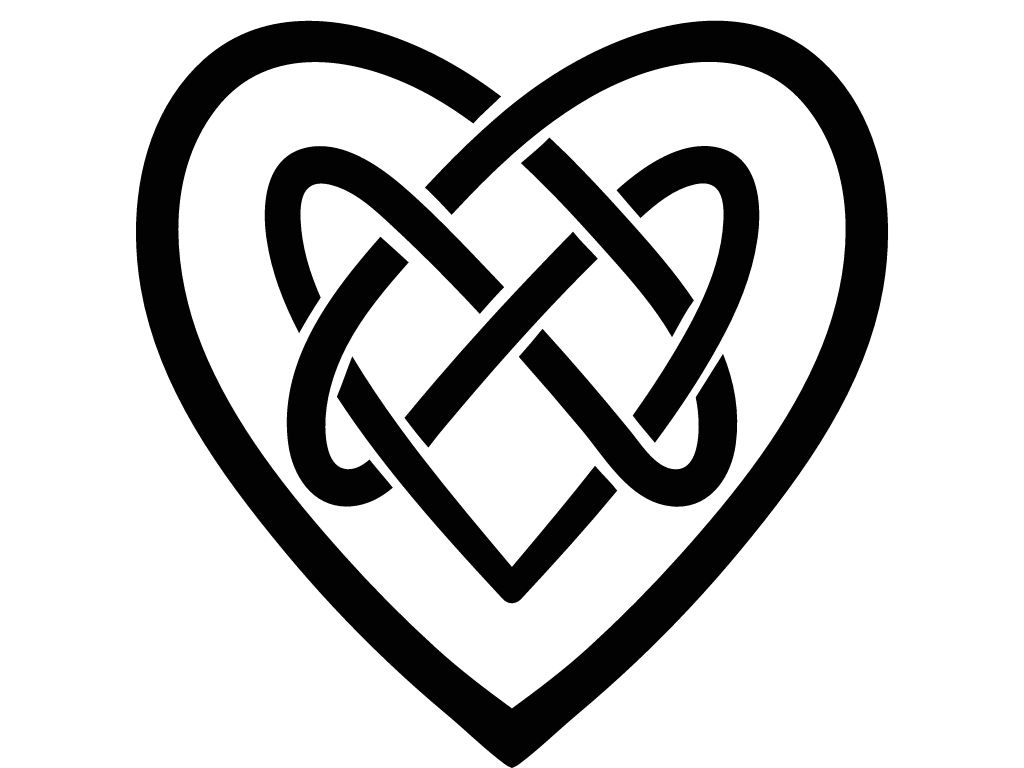
It represents the unending love between a mother and child, both in Celtic and Christian history.
This Celtic symbol has been seen in Christian manuscripts. Since it is based on the Trinity Knot which originated around 3000BC, it is believed this Celtic symbol for motherhood came after.
There can be a few versions of the Celtic motherhood knot, including some that have more than two hearts, and jewellery based on this Celtic symbol are a popular gift on Mother’s Day.
A lesser-known Celtic symbol is the Serch Bythol, which is Welsh for everlasting love (between a couple).
It is one of a few Celtic symbols for family. The literal meaning comes from the words ‘serch’ meaning love, and ‘bythol’ meaning perpetual, meaning it often symbolises the solidarity of family and commitment to family.
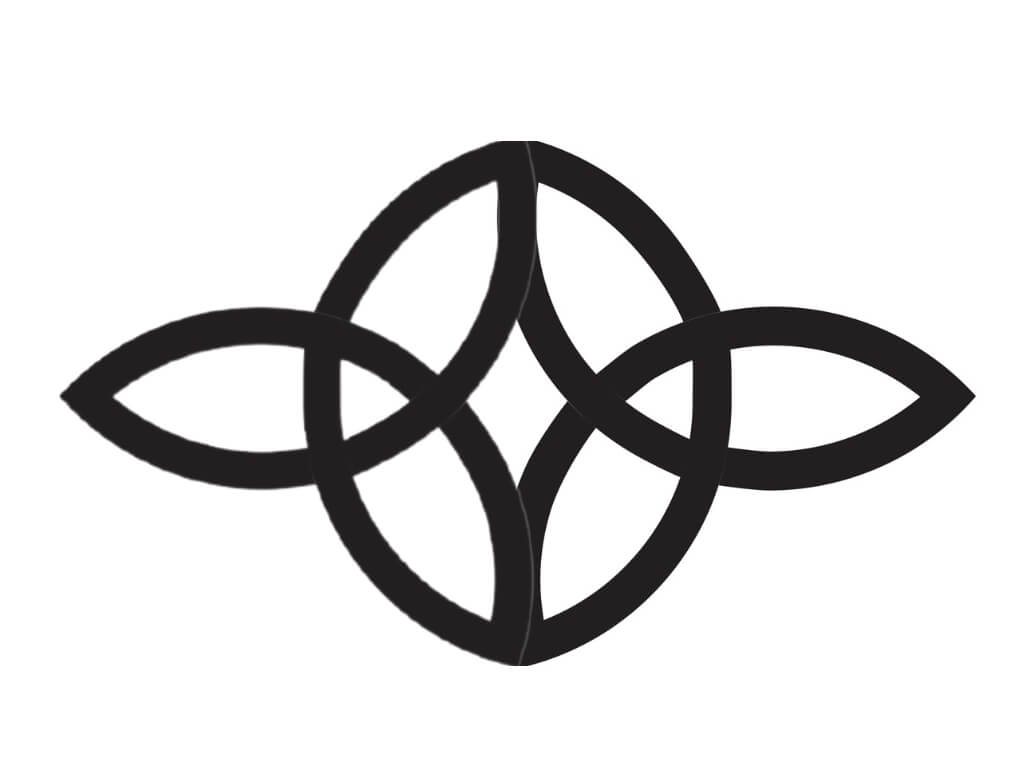
The Serch Bythol is made from two other Celtic knots, the Triquetra or the Trinity knots.
Two Trinity knots are placed side-by-side with the arcs combining to create a central circle. Three arcs of the triquetra represent mind, body, and spirit, and the central circle denotes eternity.
Celtic Symbols FAQ
The Celts were a collection of tribes and communities who lived in mainly 6 Pan-Celtic Nations which included Ireland, Scotland, Wales, Cornwall, Brittany and the Isle of Man, from around 500 BC to 400 AD. Celtic tribes were also known to inhabit parts of Spain. They were of the Iron Age and lived in small villages led by a warrior chieftain.
Celtic symbols arrived with the Celts from Northern Europe around 500 BC. Some Celtic symbols are symbols of Ireland itself.
Druids were one group among the ancient Celts who were high-ranking professional, religious and law-making members of Celtic culture, many of whom used the symbols.
Many Celtic symbols began as pagan symbols before being incorporated by Christianity, many as a way of explaining and representing the Christian Trinity. For example, the Trinity Knot was first seen in pagan culture (Newgrange) before being found in early Christian manuscripts and artwork.
Celtic Knots are complete loops with no beginning or ending and the meanings of Celtic knots include representations of eternity, loyalty, friendship, love and faith. They are a common feature in the Book of Kells.
Each Celtic symbol was handed down through centuries and their meanings were never recorded in writing. Their meanings are interpretations from their use, place of use and fables.
They are, in fact, both as Gaelic is a Celtic language spoken in Ireland and derived from ancient Gaelic.
Last Words on Celtic Symbols
These are just a few Irish Celtic symbols and meanings and are among the most popular, both in ancient times and modern-day Ireland.
They include Celtic knots, crosses, and symbols now synonymous with Ireland. There are also two which are official emblems or symbols of Ireland that are trademarked.
Read more about Irish culture and traditions:
- Irish Mythological Creatures
- What is a Banshee?
- The Best Festivals in Ireland You Cannot Miss
- Best Foods to Try in Ireland
- Best Gifts from Ireland
- What Are the Irish Known For?
- Irish Slang Words and Their Meanings
- 101+ Irish Mammy Sayings
- Facts About Ireland to Know Before You Go
- What is the National Bird of Ireland?
- What is the National Animal of Ireland?
Pin for later!
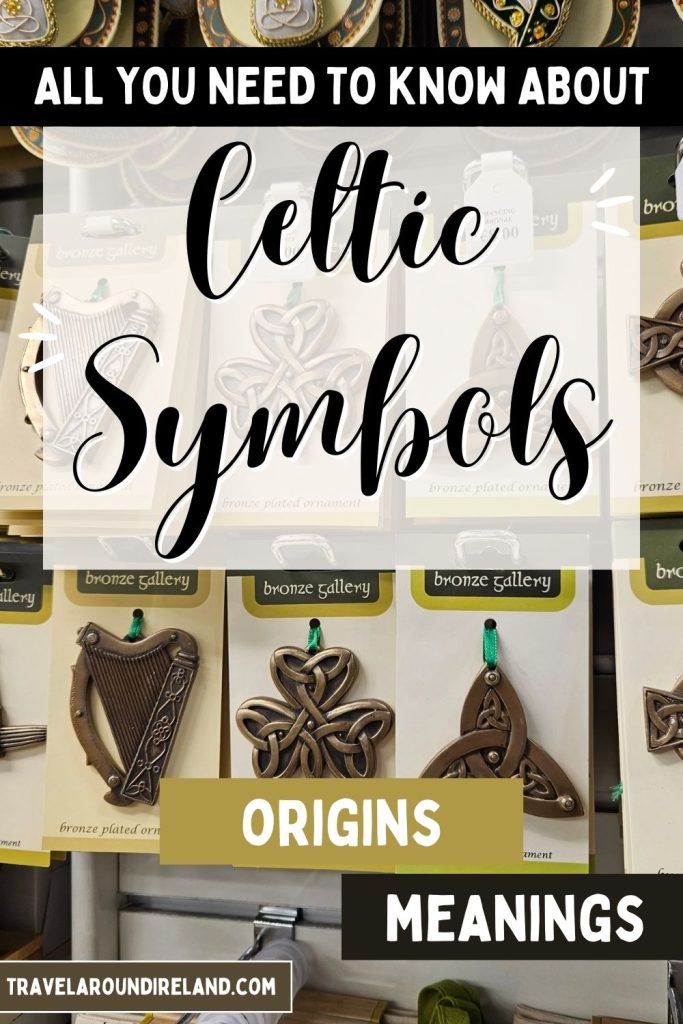
by Cath Jordan
6 thoughts on “13 fascinating celtic symbols and their meanings: a journey into irish lore”.
Fantastic piece. Thank you for explaining some of the beautiful celtic artworks that I have admired since a little girl, right through current times. It has heavily been used in my artwork, and when I get the chance to do more, I will contue to use it. Wonderful article.
How would I get permission to use a symbol?
You cannot use any image from my site. I suggest you source any image you require from a dedicated picture or images supplier such as Deposit Photos.
Hi. The triskelion is actually at Newgrange. Not Newbridge!
Typo! Thanks so much for pointing it out to me!!! Edited.
Recent archeology has proved that the earliest Celtic Cross dates from when Christianity was already firmly established in both Ireland and Scotland, thus it has no connection to paganism or pre-Christian culture.
Leave a comment Cancel reply
Save my name, email, and website in this browser for the next time I comment.
Privacy Overview
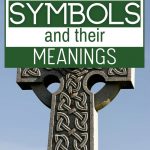

20 Celtic Symbols and Their Meanings
Celtic symbols and their meanings are integral to the culture of Ireland. Many originate from the Iron Age ancient Celts of the emerald isle and are still celebrated in our modern age. Many of these symbols you may even recognize and didn’t realize that they were more than a pretty picture.
However, did you know that some famous Celtic symbols aren’t technically Celtic? They are rather symbols that came later but hold an important place in the hearts and minds of the Irish people, such as the Shamrock and the Irish Harp.
Now, although these symbols aren’t technically Celtic, they are still symbols of the island of Ireland. We’ve included them here because they are integral to understanding Irish culture on a deeper level.
With the uptick in the current Celtic revival, many people with Irish heritage are searching for the deeper meanings of some of the most popular Celtic symbols. Whether they are looking to immortalize their heritage with a Celtic symbol tattoo or just have a passion for Irish history, it’s amazing to see Irish and Celtic history become valuable to everyone once again.
#1 The Celtic Tree Of Life
#2 the celtic shield cross, #3 the dara knot, #4 the ailm, #5 the triquetra, #6 serch bythol, #7 the celtic motherhood knot, #8 celtic sailors knot, #9 st brigids cross, #10 beltane, #11 the eternity knot, #12 the celtic five fold, #13 the green man, #14 celtic spirals, #15 the celtic cross, #16 the awen symbol, #17 the shamrock, #18 the irish harp, #19 the celtic triskelion symbol, #20 the claddagh ring, what do celtic symbols mean, are celtic symbols irish or scottish, what is the oldest celtic symbol, what is the most famous celtic symbol, twenty old and ancient celtic symbols and meanings.
Many Celtic symbols have strong connections to Celtic mythology and belief. Keep reading to discover the symbolic meaning of twenty of Ireland’s most popular Celtic symbols.
However, we’ll quickly point out that not all Irish symbols are of Celtic origin. Many Celtic symbols that we associate with our ancient Celtic ancestors originated long before they arrived on the island of Ireland. Others were designed hundreds of years after they left.
The ancient Celts weren’t the only civilization with a Celtic tree of life symbol. It’s a symbol that you can also find in Viking culture – Yggdrasil – and many others. Nevertheless, the Celtic Tree of Life, also known as Crann Bethadh in the Irish language, played an incredibly important role in Celtic culture.
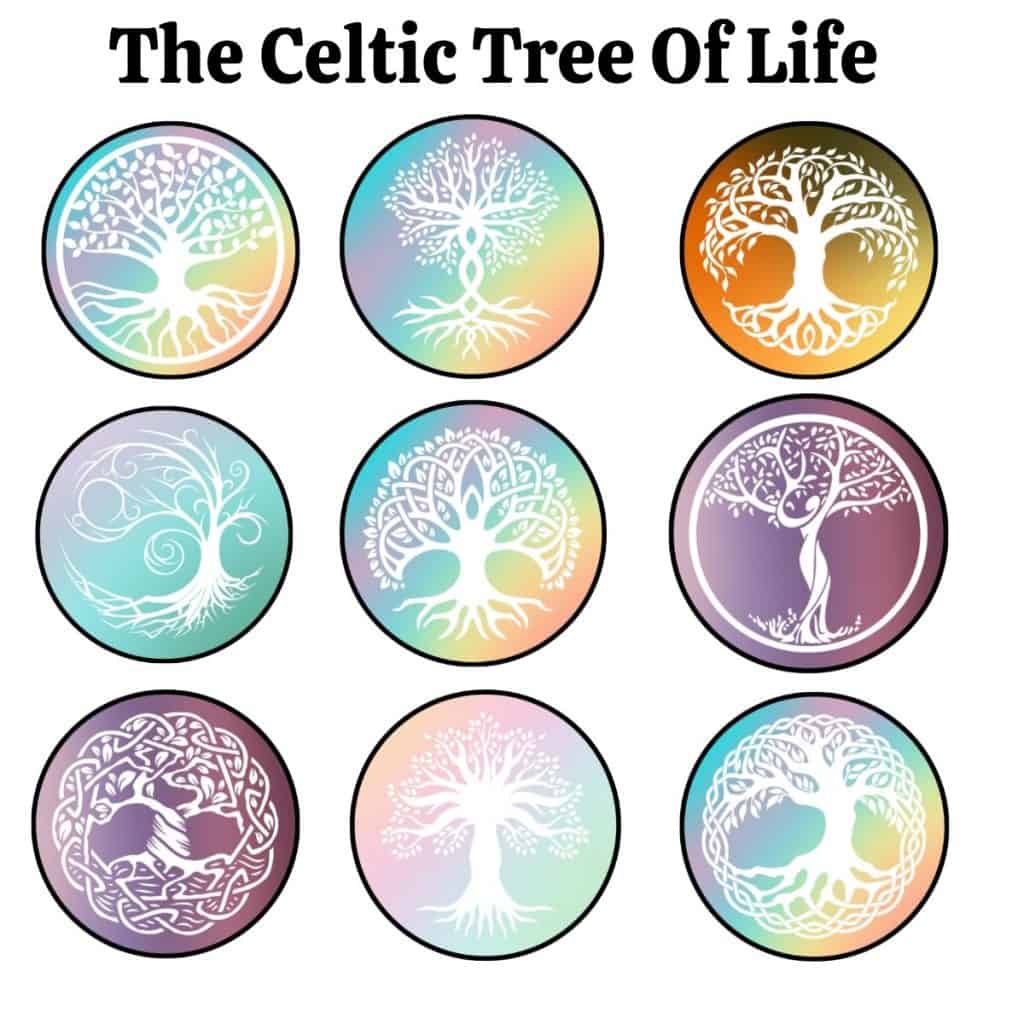
The Celts believed that trees were not only a sacred symbol but also home to many of their ancestral spirits and mythological creatures, like fairies.
The oak tree is known as the king of the forest purely because of its strength, fortitude, and longevity. So, it is no surprise that the Celtic tree of life is depicted as the most sacred of all trees.
The Celtic tree of life depicts an intricately woven oak tree and symbolizes balance and harmony, as well as the druidic belief that the trees were a doorway to the other world where those who had passed now lived. Trees were believed to be a link between our world and the next.
Symbolizing protection and safety, the Celtic shield knot is one of the most easily recognized ancient Celtic knot designs. This powerful Celtic symbol was a common sight on Iron Age battlefields and was often as the name gives away, engraved on the shield of the foursome Celtic warriors.

However, this ancient Celtic symbol had more uses than a protective sigil on the battlefield. The Celtic shield knot was carved in and around the homes of the sick and places of worship. Why? Because the Celtic Shield Knot would ward off evil spirits.
Nowadays, the shield knot is engraved on jewelry, bags, and even journals, just to name a few, but it still maintains its original structure of four-cornered pieces interwoven within each other. It’s seen as a symbol of togetherness these days.
The ancient Celts and their love for their sacred oak tree knew no bounds, and the Celtic Tree of Life wasn’t the only symbol to have drawn inspiration from the forest king. They also had the Dara Celtic Knot .
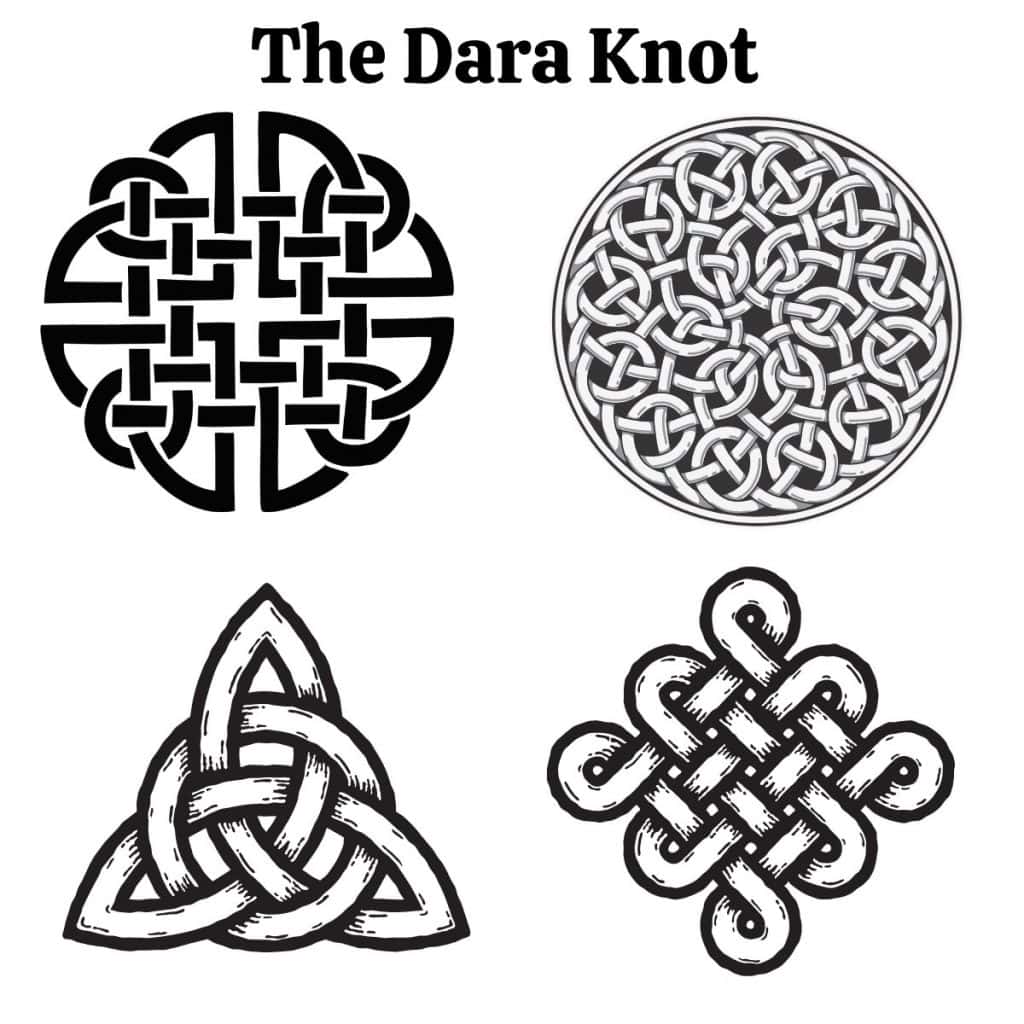
The name for the Dara Knot comes from the Irish word ‘ Doire ‘, which means ‘ Oak Tree ‘. This Celtic Dara knot symbolizes strength, power, and wisdom and features a highly intricate design of intertwined lines that seem to mirror the complexity of the oak tree’s roots.
It’s also impossible to find the beginning or end of the Dara Celtic knot. This is purposeful in its design and symbolizes our interconnectedness with one another but also that this connection has no beginning and no end.
Designed to represent strength and perseverance, the Ailm symbol was derived from the letter A in the ancient Celtic Ogham alphabet. Ogham was a primitive written language that consisted of lines in different formations.

There are few examples of the Ogham alphabet; most examples we have found are mainly of names.
Yes, it is another symbol of strength. However, this Celtic symbol is believed to relate to healing one’s soul. So, not only is the Ailm known as a symbol of strength but also healing. It is thought that the Celtic word Ailm means Conifer or Silver Fir, and in Celtic belief, these trees were associated with the healing of a soul.
Featuring a braided ring, the Ailm also features a strong braided cross. However, unlike the Christian cross, this one has completely equal lengths.
The Triquetra, also known as the Trinity knot, is one of the most easily recognizable Celtic symbols. It is also one of the simplest knot formations of all the Celtic symbols. It features three interlaced leaf-like shapes, sometimes encircled by a simple circular line. However, what it lacks in detail, it makes up for in its possible beautiful meaning.

This ancient symbol may represent eternal life and spiritual unity. However, like many Celtic symbols, it’s hard to know exactly where they began.
Some theories tell us that the meaning of the Celtic trinity knot stems from its name, trinity. There is the idea that the Triquetra was influenced by the holy trinity of the Christian church, the father, the son, and the holy spirit.
However, the ancient Celts also grouped important things into clusters of three. So, the strongest theory is that the trinity knot is an ancient Celtic symbol.
Comprised of two trinity knots, the Serch Bethel, also known as the Celtic love knot may be a lesser-known Celtic symbol. However, it is no less important in Celtic culture. It symbolizes the everlasting love between two people.
The different parts of the Serch Bythol represent the many parts of the union between two people and how they are joined together in mind, body, and spirit. Comprised of two triquetra knots, the Celtic knot of love creates a circular design that symbolizes the endlessness of love.
Its symmetrical look may also hint toward the balance and harmony of the relationship held between two people.
If anything, the Serch Bythol is a more fitting Celtic gift for a loved one than the more popular and traditional Claddagh ring.
Although not technically an ancient Celtic knot, the Celtic Motherhood Knot is a stylized design that draws inspiration from the intricacies of true Celtic knots. It has become a popular design for mothers, especially if they want to get a Celtic-inspired tattoo to honor their daughters.
This particular design is a variation of the Triquetra, also known as the Trinity knot, which is meant to symbolize the love between a mother and her daughter.
Even though the motherhood knot isn’t a real Celtic knot, this Irish symbol is still beautiful and loved for its stunning design.
The Celts would often ferry the seas, sometimes for months on end, and it is possible that the Celtic sailor’s knot was born from the need to pass the time on the ship.
Using two pieces of rope, this inter-woven design is simple and intricate. Unlike many other Celtic knots, the Celtic sailor’s knot has a more rectangular look to it.
Not only did the Celtic sailors’ knot symbolize the love the sailor had for their loved ones who were often left behind but it also symbolized strength and fortitude, and the Celts believed in keeping the sailors safe while they were at sea.
Although St Brigid’s Cross is a widely used Christian symbol, the story behind this particular Celtic knot is tied to the story of Brigid of the Tuatha Dé Danann, the pagan Gods of Celtic Ireland.

Brigid, in Irish mythology, was the Goddess of poetry and was referred to as a woman of wisdom. Brigid was also respected for her protective powers as a woman of healing.
As Christianity forced its way through Ireland, St. Brigid’s Cross became part of the story of St. Brigid of Kildare. A female priestess is also well known for healing knowledge.
St. Brigid’s Cross is usually made from rushes, although occasionally they are made from straw, and features a square knot in the center with four arms reaching out from the center, much like a Celtic Cross. This Celtic knot is thought to ward evil, hunger, and fire from the home.
Beltane is the word for the beginning of Summer in the Irish language and can be spelled in many different ways – Beltine, Beltaine, or Belltaine. In the age of the Celts, Beltane was the Celtic symbol celebrating the return of the warm months and the sun.

Lighting bonfires on the eve of Beltane was a ritual that was supposed to protect farming livestock from disease and was a well-respected tradition still observed well into the 19th century.
Aside from bonfires, Beltane is often symbolized using scenes of Maypole dancing, which was a common Beltane activity.

Also known as the Celtic love knot, the eternity know is one of the oldest Celtic knot designs we know of. With no beginning and no end, this ancient knot resembles two interlocked hearts, and it is believed that the Celts would exchange these knots as we exchange wedding rings these days.
Nowadays, a more stylized version of the Celtic love knot can be found engraved on jewelry. This modern version has a more obvious heart shape to it.
The eternity knot represents the undying love that two people have for one another and it is often seen sitting within an oval shape in more modern designs.
Oddly enough, the Celtic Five Fold symbol isn’t unique to Ireland. It can be found among many ancient cultures, including Ancient Greece. The five interlaced rings may remind you of the Olympic Rings, that’s how similar they are.
However, instead of the rings placed in two horizontal lines, the Celtic Five Fold symbol features a singular ring in its center with the remaining four linked in the directions f north, south, west, and east.
Also known as the Borromean Cross, the Celtic Five Fold represents heaven, faith, spirituality, and the universe. However, it has taken on extra meaning with the arrival of Christianity, God.
This particular symbol is also very similar to the pagan pentagram and is often associated with protection.
Other things the fivefold may symbolize are nature’s seasons or the four elements, fire, water, earth, and fire.
Appearing as many different characters across ancient cultures, the Green Man was an important symbol in Celtic culture. He symbolizes rebirth, vegetation, and the connection between man and nature.
The life of the Celts revolved around nature and its importance to everyday life. Paganism was a nature-based faith, so it’s not surprising that the Celts had their own version of the Green Man.
In Druidic paganism, the green man was called Cernunnos, nature and fertility God. It was typically believed that the Green Man retreated during the winter months only to reappear in spring, encouraging the growth of the countryside.
The Green Man was a pagan symbol that the Christian Church didn’t try to wipe from history. Considering they were strongly opposed to most pagan beliefs, this was impressive. You may even notice that depictions of the Green Man have been carved onto Christian places of worship all over Europe.

Spirals are one of the most ancient forms of symbols that we have examples of throughout multiple ancient cultures across Europe and beyond. However, some of the oldest spiral examples have been found in Ireland.
Celtic spirals themselves aren’t Celtic symbols. However, they can be found throughout Irish Celtic art unless you’re talking about the Triskelion. Yet they heavily feature in symbolic Celtic art.
It’s hard to decipher a specific meaning for Celtic spirals but some meanings that make sense are the interpretation of the anti-clockwise spiral. It may symbolise the passage from the inner to the outer self.
As well as the clockwise spiral you can find the double spiral, the single spiral, and the double-centred spiral in many Celtic symbols.

The Celtic Cross is possibly an Irish symbol but not a Celtic one. Although, we know for sure that this Celtic Cross came long after the Celts inhabited Ireland. No one knows for sure exactly where the Celtic cross originated. Theories include Wales, Scotland, and even England as its place of design.
One story says that St Patrick created the Celtic cross with Celtic designs to convince pagan priests to convert to Christianity, but as with most stories from that time, it’s hard to say whether it’s true.
Either way, the Celtic Cross is a Christian symbol with a Celtic influence, as is the same with all Celtic crosses, including the Carolingian Cross. However, it has become a favorite for those who love the Celtic design and Celtic traditions.
Featuring a traditional cross, the Celtic cross has engraved Celtic knots and is surrounded by a circle. It is thought that the circle represents the eternal love given by God and the hope of salvation.
Another so-called Celtic symbol is the Awen symbol. This particular Celtic-inspired symbol was actually a Neo-druid symbol designed by the Welsh poet and antiquarian Edward Williams in 1792. It was designed as a sigil for his society of welsh poets, Gorsedd Cymru.
Some believe that the Owen symbol is far older, but there is no proof that the Awen pre-dated Williams.
Featuring a simple design of three rays pointing up towards three dots and surrounding by one or two circles. There have been many interpretations of the meaning of this symbol. However, the consensus is that it symbolizes the symbolic harmony of the opposites within the universe. Think good and evil, man and woman.

Another Irish symbol that often finds itself mistaken for a symbol of the ancient Celt. It is possible that the Celtic Druids saw this three-leaved as a representation of the triads and how everything important was grouped in clusters of three.
In most recent years the Shamrock has become a symbol of Ireland itself. During the 19th Century, the Shamrock became a symbol of Irish nationalism and the rebellion many Irish nationals fought against British rule. Those caught wearing the Shamrock were often executed.
The Shamrock is also a symbol of St. Patrick and many of those who celebrate St. Patrick’s day will proudly wear clumps of shamrocks or paint them on their faces.
The Irish Harp has become the official emblem of Ireland, and you can find it printed on coins and even within the Guinness logo. Once again, this Irish symbol isn’t of Celtic origin. However, it has come to symbolize the spirit of the people of Ireland.
It is believed that harps arrived in Ireland way before Christianity broached its shores, where it was a common trading item. Over the years, the Irish people put their own spin on it, creating the well-known Irish Harp.
In fact, the Irish Harp was such a strong symbol that in the 16th Century, the British crown ordered the destruction of all harps and the people that played them. Luckily for us, the Irish were stronger than that. The Irish Harp has made a revival with many young harpists showing up on the music scene.
The Triskelion, also known as the Triskele, is one of the most well-known Irish symbols and one of the oldest. However, the triple spiral’s age makes it impossible for this triple spiral to be a Celtic symbol.

The Triskelion features three interlocked anticlockwise spirals.
The neolithic tomb of Newgrange is over 5,000 years old and on its entrance stone sits a stunning Triskelion, perhaps even one of the most famous triple spiral examples.
The triskelion is another symbol that can be found in many other cultures and it may symbolize the importance of the number three, motion, the interconnectedness of life, and even the life cycle itself. Yet because of its age, it’s difficult to pinpoint a definite meaning of this ancient symbol.
We know that the number three was an incredibly important Celtic symbol, which may be why they adopted the Triskelion when they arrived in Ireland around 1000BC.
Believed to have originated in a small fishing village in Galway in the 1700s, this traditional Irish ring, although not a Celtic symbol, evokes the spirit of Ireland.

However, it didn’t garner its name until the middle of the 19th century, when it became more commonly known as the Claddagh ring – named after the place where the River Corrib meets Galway Bay.
The Claddagh ring has three distinct parts. The hands represent friendship, the heart represents love, and the crown represents loyalty. Symbolizing this love, loyalty, and friendship, the Claddagh ring is often given from one loved one to another.
There are even different ways of wearing your Claddagh ring to convey your relationship status to others.
For example, if the wearer has the ring on their right hand with the heart pointing towards their fingertips, it means they are single and looking for love.
How To Wear Your Claddagh Ring
- On the right hand with the heart pointing towards the fingertips – the wearer is single and looking for love
- On the right hand with the heart pointing towards the wrist – the wearer is in a relationship
- On the left hand pointed towards the fingertips – The wearer is engaged
- On the left hand pointed towards the wrist – The wearer is married
Irish and Celtic symbols are loved the world over but not everyone knows exactly what many of them mean and it can be tricky to tell the true Celtic symbols apart from ones that have just been influenced by Celtic design.
We hope this article has helped to illuminate your mind and break you into the symbolism and meaning behind many of the most popular Irish and Celtic symbols.
Below are some more questions we see regularly asked about ancient Celtic symbols and meanings, how they are connected Celtic mythology and Celtic culture.
Although there are many different Celtic symbols and they have unique meanings, there are some symbolisms that these Celtic knots and spirals all share.
Many of their designs feature threes or patterns of threes, this is because the number three was a sacred number to the Celts. They often have themes of interconnectedness and eternity intertwined within their own meanings.
This is usually represented by the knot designs with no beginning and no end and the always connected spirals.
Here are some popular Celtic symbols and their meanings:
- The Celtic Tree Of Life – Balance, Harmony, and the doorway to the otherworld
- The Celtic Shield Knot – Protection and Togetherness
- The Dara Knot – Strength, Power, and Wisdom
- The Ailm – Strength and Healing
- The Triquetra – Eternal life and Spiritual Unity
- Serch Bythol – Everlasting Love
- Celtic Sailors Knot – Love, Strength, and Fortitude
Although many Celtic symbols are considered Irish, and these symbols conjure images of the emerald isle, Celtic symbols are both Scottish and Irish.
The Celts didn’t only inhabit Ireland. They also moved on to Scotland and Wales. So many Celtic symbols, such as the Triquetra, Celtic knots, and Celtic spirals, can also be found in Scotland.
However, some Irish symbols that have been inspired by Celtic design are only Irish, such as the Irish Harp, the Claddagh ring, and the Celtic Triskelion.
This is a hard one to answer. Many believe the Triskele, or the triple spiral, to be the oldest Celtic symbol but, as we now know, the triple spiral predates the Celts by thousands of years.
If we are only considering Celtic symbols that originated with the Celts themselves, the eternity knot could likely be the oldest Celtic symbol.
The most famous Celtic symbol is likely to be the trinity knot. This Celtic symbol features one single line that weaves around itself in a three-leaf-like structure. Symbolizing eternal spiritual life, the trinity know is a common appearance in ancient Celtic designs and modern Celtic-inspired artwork.
It is even thought that the Triquetra could be the oldest symbol of spirituality in the world. This Celtic symbol appears in the famous Book of Kells, which was written in the 9th Century. Although it holds no religious significance in the book and seems to be there purely for decoration.

Natasha Peters
I am a British-born copywriter who moved to Ireland over a decade ago and have been captivated by Irish culture, landscape and folklore. I enjoy sharing my passion for Ireland through my writing as a freelancer.
- 8 Spectacular Day trips from Dublin by train
- The Do's And Dont's of Wild Camping in Ireland
- 8 Fun and Unusual Things To Do in Sligo For Couples
- The Luck Of The Irish: Are They Really That Lucky?
Leave a Comment Cancel reply
Save my name, email, and website in this browser for the next time I comment.
Privacy Policy

20 Celtic Symbols: Ancient Irish and Druid Meanings
An exploration of 20 common and lesser-known Celtic symbols. Learn about their meaning and their origins.
Table of Contents
The Celts are thought to have originated in parts of Northern Europe, they first arrived in Ireland around 500 BC. The ancient Celts had a profound connection to nature and spirituality. This bond influenced their artistry, as they used patterns and symbolic motifs to express their beliefs.
The symbols of a culture are like a window into its past. They are visual reflections of ancient beliefs and practices. In this article, we will examine 20 different symbols associated with Celtic culture. We’ll look at their origins, meanings, and the stories behind them.
Celtic Cross
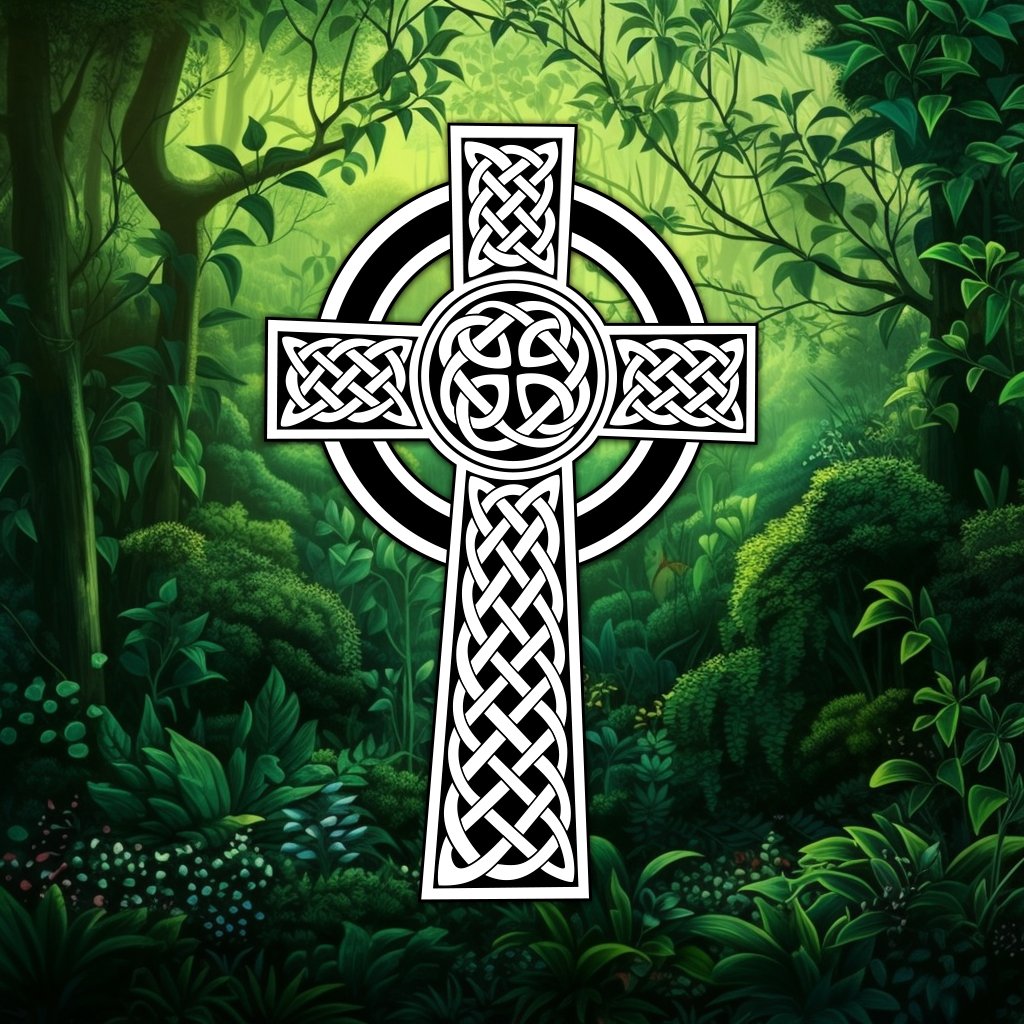
The Celtic Cross is a symbol that tells a tale of two cultures. Christianity greatly influenced Celtic symbols, and the Celtic Cross is a prime example. This unique emblem fuses the Christian cross with the pagan sun wheel, symbolizing both Christ’s crucifixion and the life-giving power of the sun.
The symbol first emerged in Ireland during the Early Middle Ages. According to a popular Irish legend, Saint Patrick introduced the Celtic cross. This was to help pagan followers understand the cross’s importance. It gained popularity through its use in the stone high crosses erected across the islands, primarily in regions evangelized by Irish missionaries.
The Celtic Cross made a comeback during the 19th century as part of the Celtic Revival movement. This movement aimed to promote and preserve Celtic culture.

The Triquetra is a centuries old Celtic symbol. It beautifully symbolizes eternity and interconnectedness. Its design consists of three-pointed loops drawn in a triangular shape, with each point corresponding to a corner of the triangle.
The Triquetra embodies several triads within Celtic cosmology and theology. For instance, it represents the division of the world into the realms of Land, Sea, and Sky. It also stands as a symbol of Celtic triple goddesses, such as The Morrigan , the goddess of battle and strife.
The Triquetra also signifies the trinity of life, death, and rebirth. This theme echoes through many Celtic symbols and reflects the Celts’ deep spiritual connection with the natural world.
Carolingian Cross (Cross of Triquetras)

The Carolingian Cross, also known as the Cross of Triquetras, is an intricate symbol composed of four triquetras. Each of these is an interlocking loop forming a three-pointed shape.
The Carolingian Cross is a christian symbol representing Christ’s sacrifice and resurrection, combined with the pagan concept of the tree of life. The Carolingian Cross also has a temporal aspect, representing the past, present, and future, all intricately wound together.
Celtic Tree of Life (Crann Bethadh)
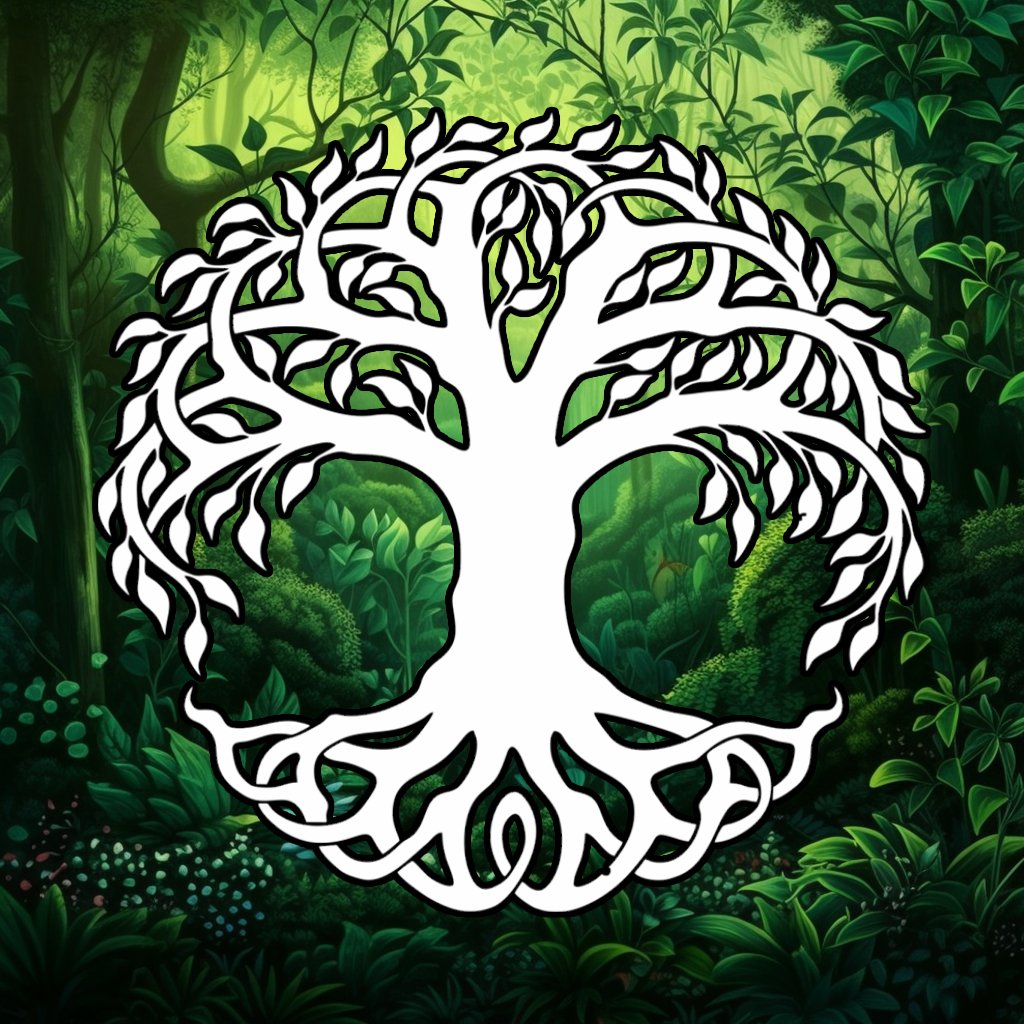
The Celtic Tree of Life, or Crann Bethadh, is a symbol of resilience. It signifies how the forces of nature come together to maintain balance in the universe. The symbol embodies strength, wisdom, and endurance, just like a tree that grows tall and strong, adapting to the changing seasons.
Beyond representing strength and growth, the Celtic Tree of Life also symbolizes the three stages of life: birth, death, and rebirth. This cycle mirrors the changing seasons, as the tree sheds its leaves in autumn, becomes dormant in winter, and sprouts new leaves in spring.
The symbol is often associated with the mighty oak tree, sacred to the Celts and believed to house their gods and ancestors. It was customary to plant a tree, known as Crann Bethadh, in the middle of a new settlement in Ireland.
The Celtic Tree of Life represents strength, wisdom, and resilience in facing life’s challenges.
Triskelion (Celtic Spiral)
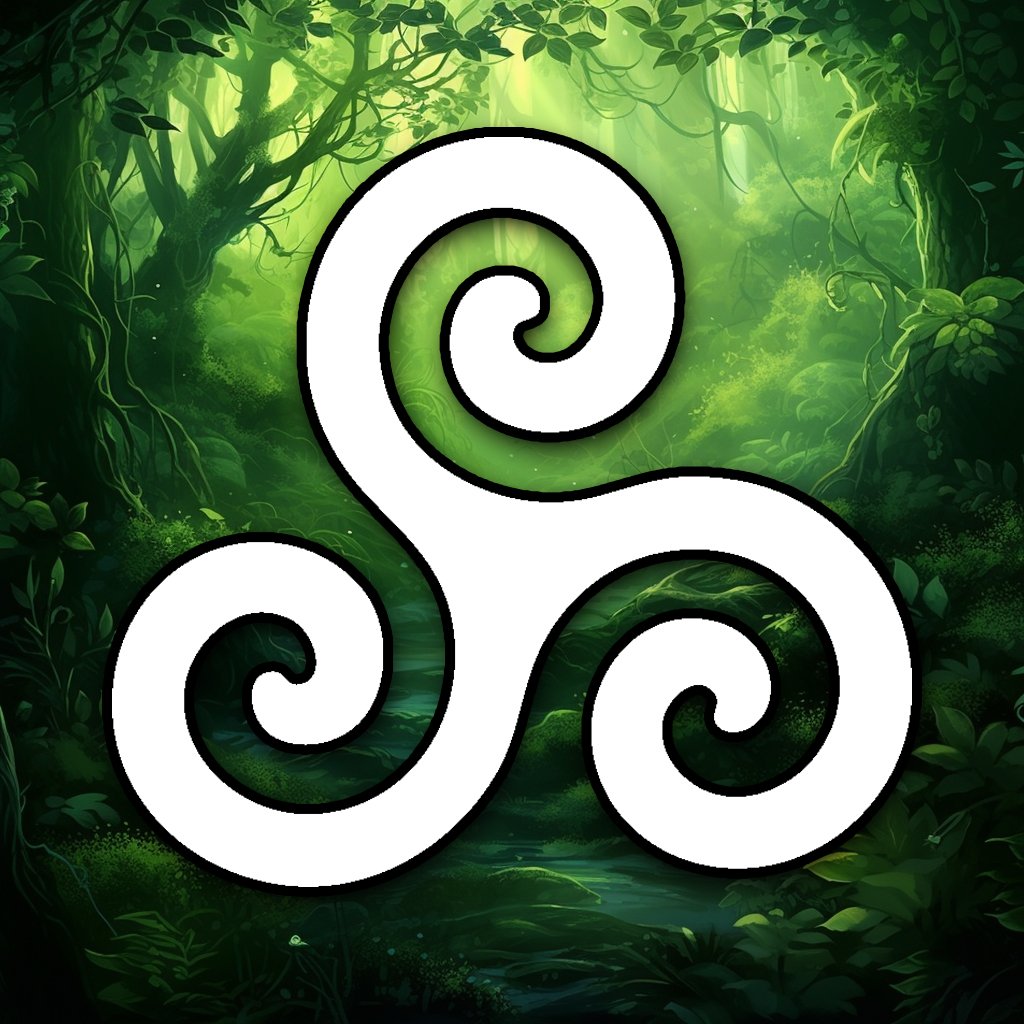
The Triskelion, also known as the Celtic Spiral, is a symbol made up of three interconnected spirals. Although the Triskele wasn’t invented by the Celts — it predates their arrival in Ireland by over 2,500 years — it became a significant part of their symbolic language.
The Triskelion represents the Celts’ belief that everything happens in threes, or “the third time’s the charm.” It symbolizes the three worlds: the celestial, physical, and spiritual. It also represents the stages of the life cycle: birth, life, death, signifying the cyclical nature of existence.
In a different interpretation, the Triskelion symbolizes the dynamic elements: water, air, and fire, with the earth as its center. It’s also seen as a representation of time, flowing through the past, present, and future.
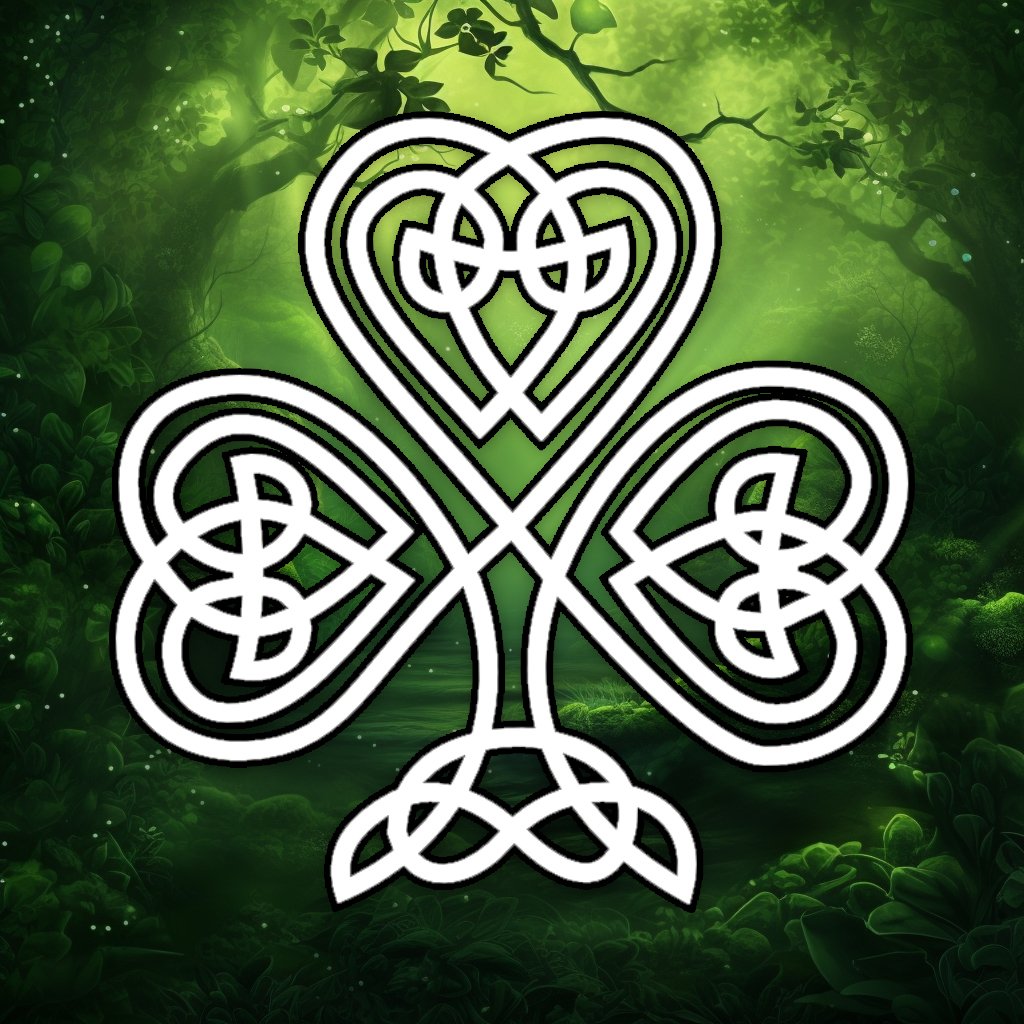
The Shamrock, a three-leaved clover native to Ireland, is a revered symbol in Celtic culture. Known as “seamróg” in Irish, the Shamrock was a sacred plant to the Druids — ancient Celtic priests.
The Druids believed the number three had mystical power. They thought the Shamrock could ward off evil spirits. This belief in the power of three was prevalent in many aspects of Celtic culture and spirituality.
In the 5th century, St. Patrick brought Christianity to Ireland and used the Shamrock to explain the concept of the Holy Trinity (the Father, the Son, and the Holy Spirit) to the pagan Celts. This association with St. Patrick and Celtic heritage made the Shamrock a symbol of Irish culture and a part of their national identity.
The Shamrock’s triad also represents ideals like faith, love, and hope.
Wheel of Taranis
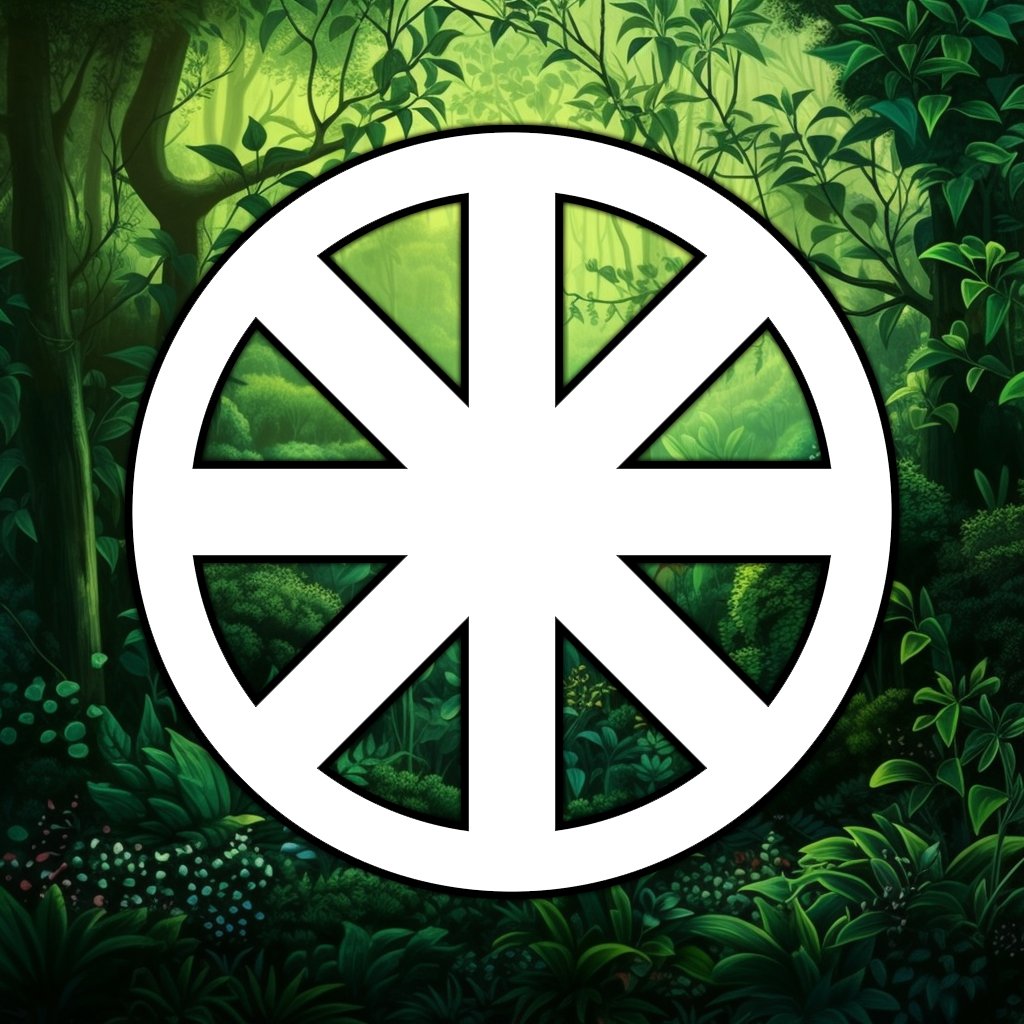
The Wheel of Taranis is an important symbol in historical Celtic polytheism. It’s a chariot wheel with six or eight spokes, associated with the god Taranis. He was known as the wheel-god, identified as the sky, sun, or thunder god.
This wheel is a classic Druid symbol. The hub of the wheel signifies the center of the universe. The Wheel of Taranis symbolizes the cyclical nature of life, the universe and the concept of eternal return, reflecting the Celts’ deep respect for the natural world and its cycles.
Some people choose to wear the Wheel of Taranis as an amulet. It is believed to be a defensive measure against evil or harm.
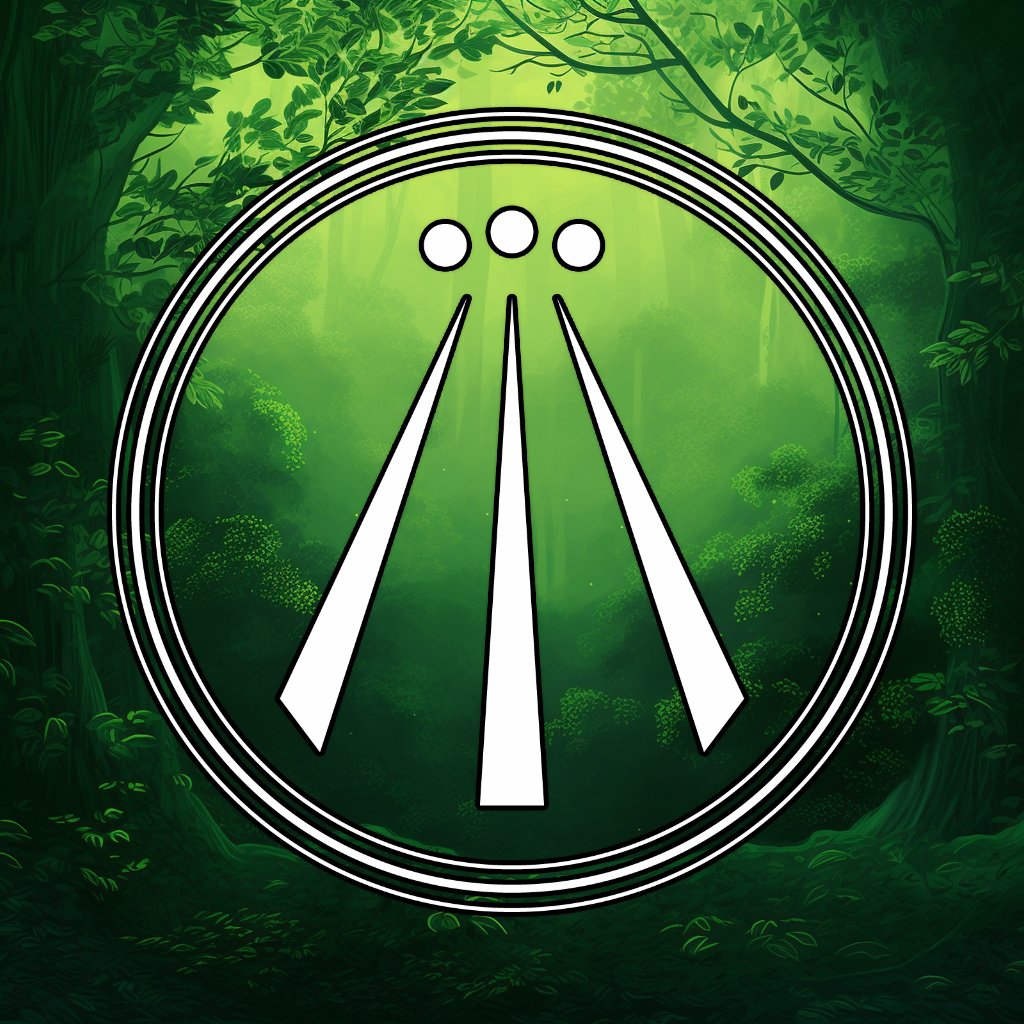
Awen, a word from Welsh, Cornish, and Breton, translates to “inspiration,” typically of the poetic kind. It was a symbol of inspiration and creativity in Celtic culture, often associated with dreams and artistic prowess.
Celtic society attributed the skills of artists and creative writers to Awen, seen as a muse-like figure that appeared in dreams. Modern Druidic groups and individuals interpret Awen in various ways, but its essence remains the same: it’s a source of divine inspiration.
The Awen symbol features three rays of light representing different aspects of the divine or the natural world — earth, sea, air — body, mind, spirit — love, wisdom, truth.
Serch Bythol
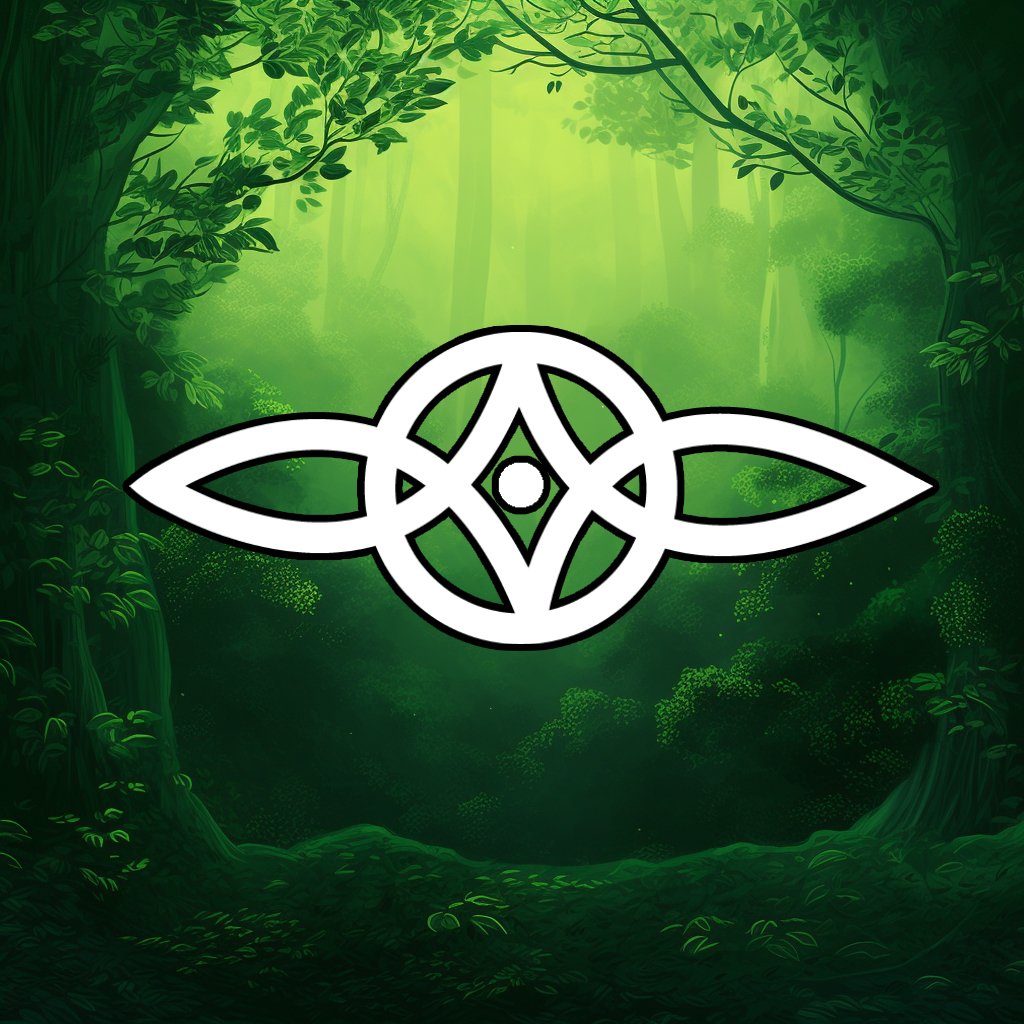
The Serch Bythol is a symbol of love, loyalty, and friendship. This traditional Welsh symbol has a heart-warming meaning. Serch Bythol translates to “everlasting/eternal love” in Welsh. It represents a bond that can never be broken.
The symbol itself is made from two triskeles. These are symbols with three legs or lines radiating from a center point. The two triskeles in the Serch Bythol represent two people who are joined forever in body, mind, and spirit.
Claddagh Ring
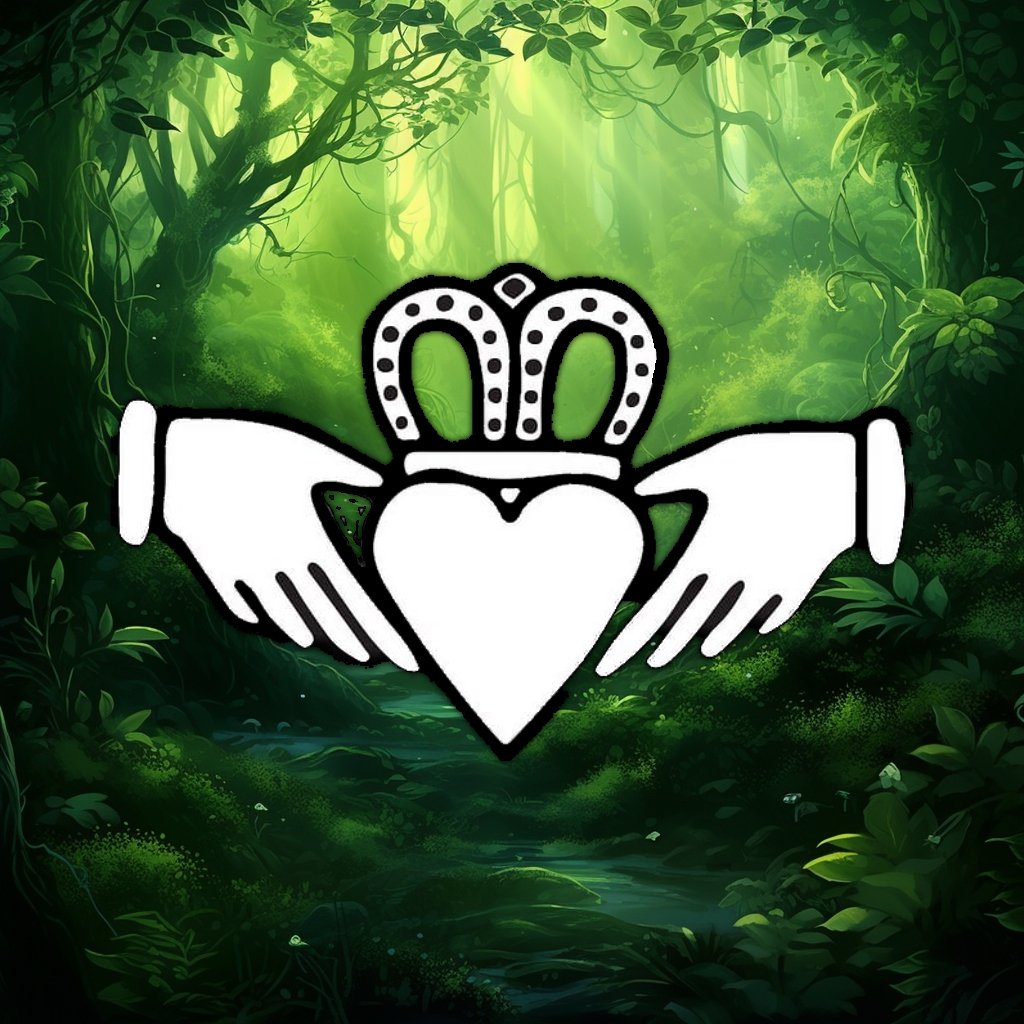
The Claddagh ring is not a Celtic symbol, but has become part of a popular Irish tradition that represents love, loyalty, and friendship. Originating in the 17th century in the fishing village of Claddagh, near Galway City, the ring features a heart for love, a crown for loyalty, and two hands for friendship.
The Claddagh ring has a unique way of being worn to signify one’s relationship status. If single, wear it on the right hand with the heart facing outward from your body. This shows you are open to love. If in a relationship, wear it on the right hand with the heart facing inwards. This indicates that you have given your heart to someone. During engagement, it is worn on the left hand with the heart pointing outwards, signifying commitment to marry your partner. Once married, the ring is worn on the left hand with the heart pointing inwards, showing loyalty to your spouse.
Brigid’s Cross
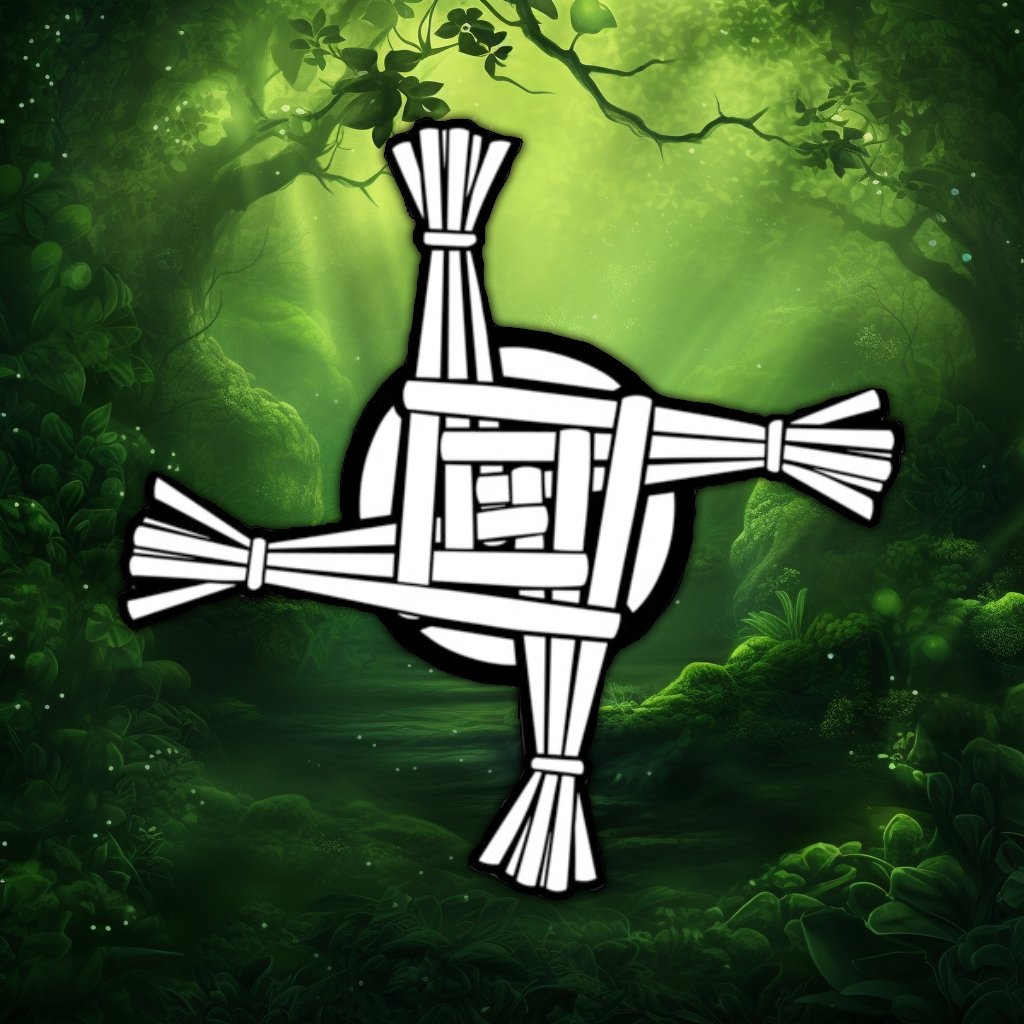
Brigid’s Cross, presents the blend of pagan and Christian beliefs within Irish culture. Originally, it was associated with the goddess Brigid. In Celtic mythology, Brigid of the Tuatha de Danaan was a life-giving goddess associated with the onset of spring, creativity, wisdom, healing, and poetry. She also had a connection with fire, representing both its productive uses and destructive power.
When Christianity arrived in Ireland, Brigid transformed from a pagan goddess to Saint Brigid of Kildare. Brigid’s Crosses, intricately woven from rushes or straw, continued to adorn the doors and rafters of Irish homes, often in the kitchen, warding off fire and evil. Placing a Saint Brigid’s Cross above a home’s entrance is believed to protect the household from harm.
Druid Sigil
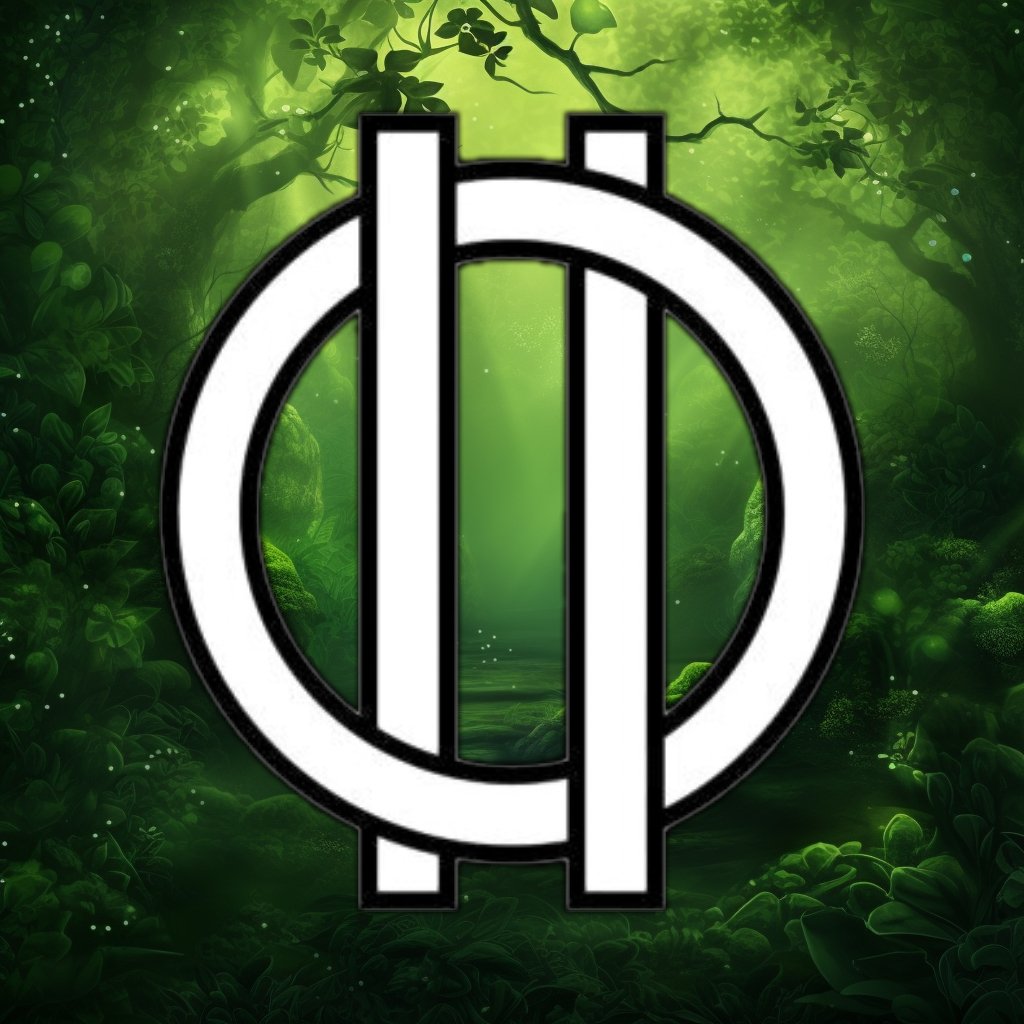
The Druid Sigil, a circle intersected by two vertical lines, is the symbol of the Reformed Druids of North America, formed in 1963. Reformed Druid worship is directed towards Nature, drawing inspiration from Celtic paganism.
The meaning of the Druid Sigil isn’t officially codified, but many interpret it as representing the balance between male and female, or the three realms of land, sea, and sky. This symbol reflects the Druids’ deep reverence for nature and their belief in maintaining a balance between different elements of life.
Five Fold Symbol
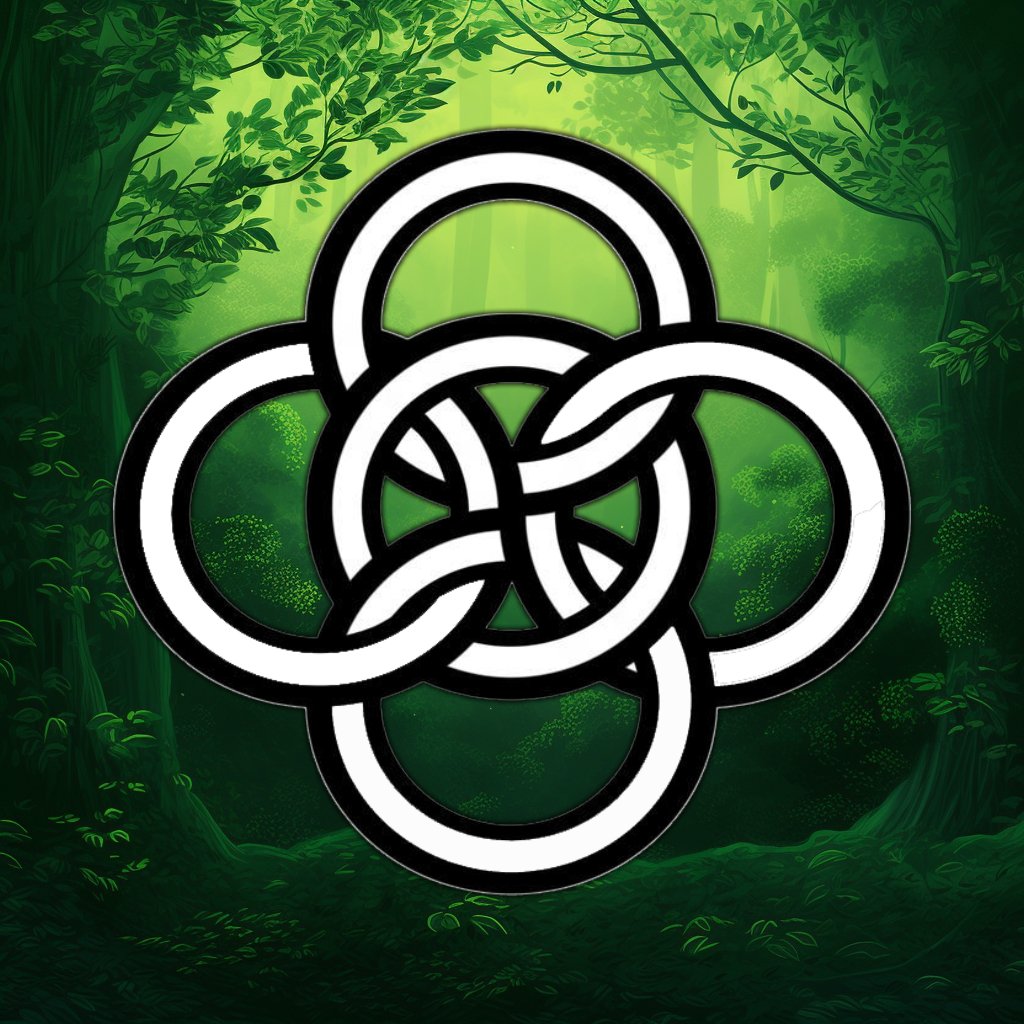
The Celtic five-fold symbol consists of five rings, with a central ring surrounded by four others. Each circle has profound spiritual significance. Linked with the Tuatha De Danann, or the children of the Irish goddess Danu , the central circle represents Danu while the surrounding rings stand for her offspring: Nuada, Lugh, Dagda, and Fal. These deities bestowed gifts upon the Celts, such as the sword, spear, cauldron, stone, and cord.
The five-fold symbol also serves as a beacon for enlightenment. Druid beliefs emphasize that meditating upon this symbol leads to heightened awareness and understanding. Through this meditative process, the five aspects of nature merge with human consciousness.
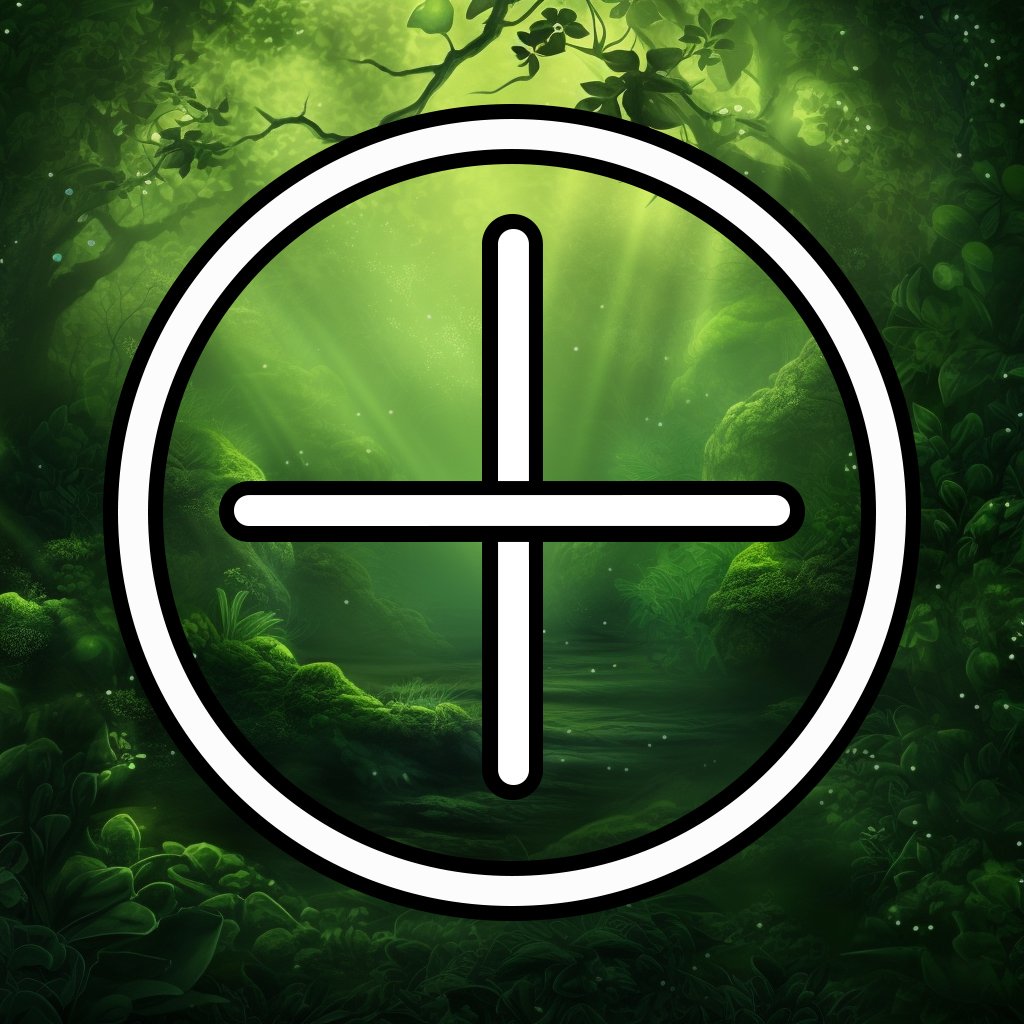
The Ailm, a symbol resembling a cross or a plus sign, sometimes encircled, is one of the letters of the Ogham alphabet, which the ancient Celts used to write their language. Representing the letter A, the Ailm is often linked to the pine, fir, or sometimes the elm tree.
In Celtic symbolism, the Ailm represents the spreading of light, allowing us to see clearly in the dark. It signifies foresight and planning to discern the path forward. The Ailm symbolizes a spiritual journey, embodying not only physical strength but also spiritual and mental resilience. The conifer or silver fir trees, associated with the Ailm, were once believed to have the power to heal our spirit or inner soul.
The Ailm is also a symbol of connection to the divine. The silver fir tree was sacred to the Druids, the priests and teachers of the Celts. They utilized its branches for rituals and ceremonies. The Ailm serves as a bridge to our inner wisdom and spiritual guidance, reminding us of a deep-rooted connection between nature and the divine.
Celtic Harp (Irish Harp)
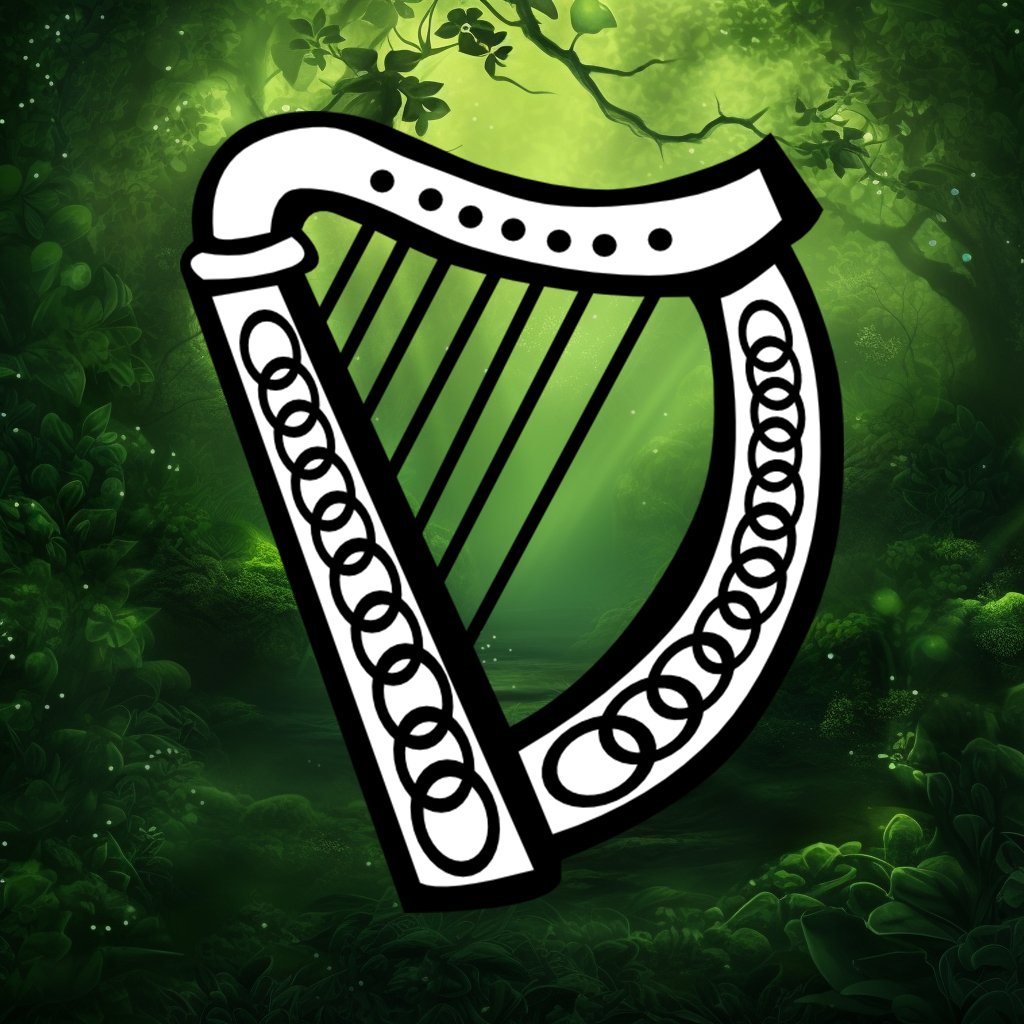
The Celtic Harp became a symbol of Ireland when the Kingdom of Ireland was established in 1541 with Henry VIII becoming its king. A famous example of a Celtic Harp is the Brian Boru Harp held at Trinity College. The symbol of the harp is thought to represent royalty and the immortality of the soul.
The Green Man
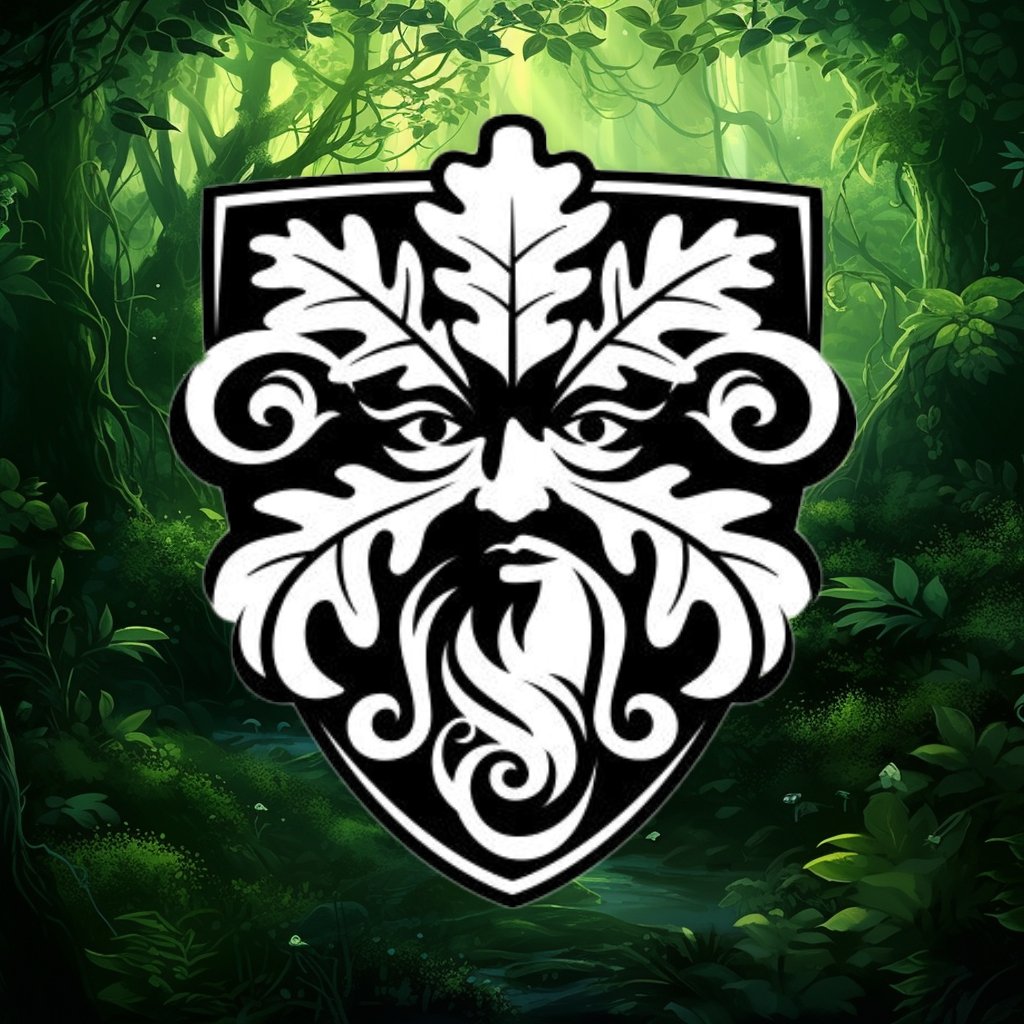
The Green Man is another vital Celtic symbol — it is a symbol of rebirth, the fertility of the land, and the arrival of spring and summer. It also represents the strong bond between nature and humanity. The Green Man is a motif depicted as a head made of leaves. The imagery of a green man can be found on many churches and other buildings in Ireland and Britain.
The Shillelagh
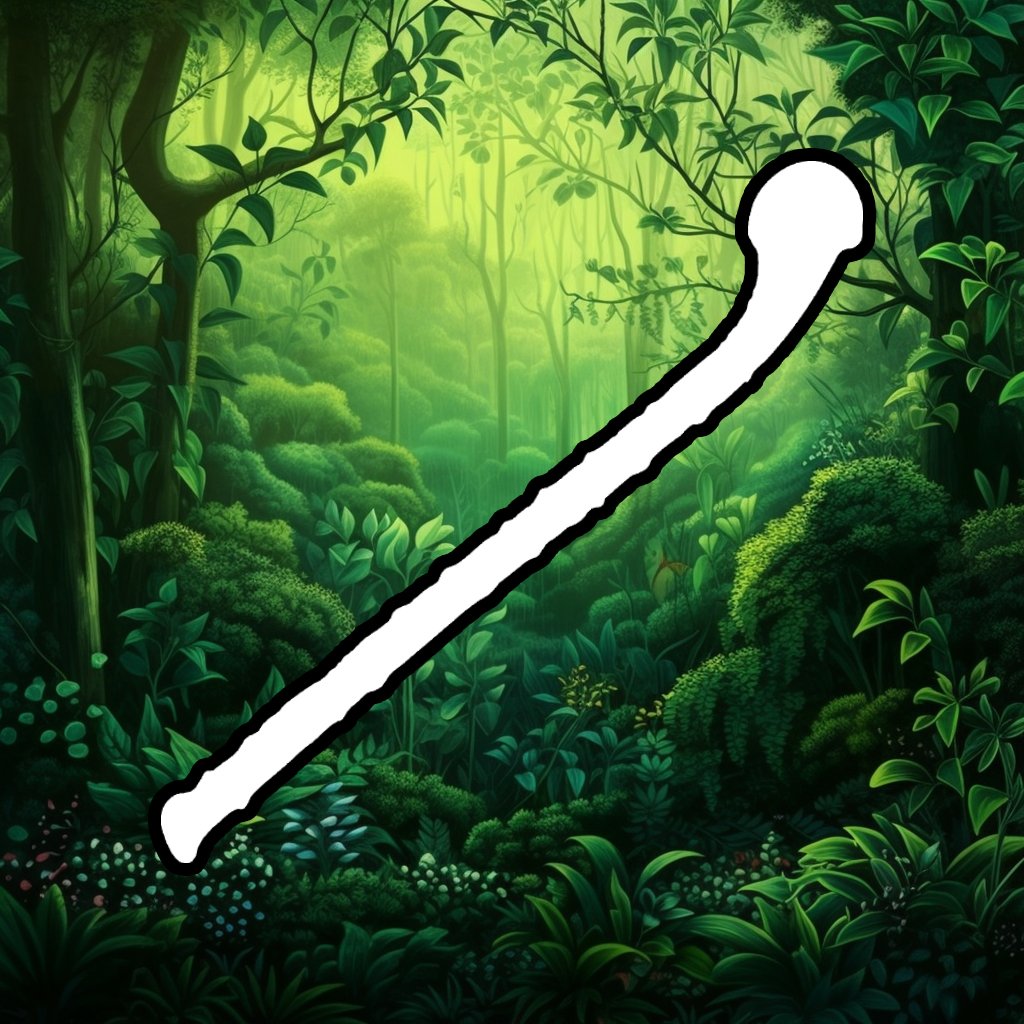
The Shillelagh embodies the spirit of the Irish people: their strength, their resilience, and their fight for freedom.
Shillelaghs are Irish walking sticks or clubs. They are made from the sturdy branches of trees. They are shaped into a heavy end with varying lengths of handle. In the past, these clubs had a use in warfare. Irish rebels used Shillelaghs as weapons against the British. This use of the stick made it a symbol of Irish resistance and independence.
Celtic Dragon
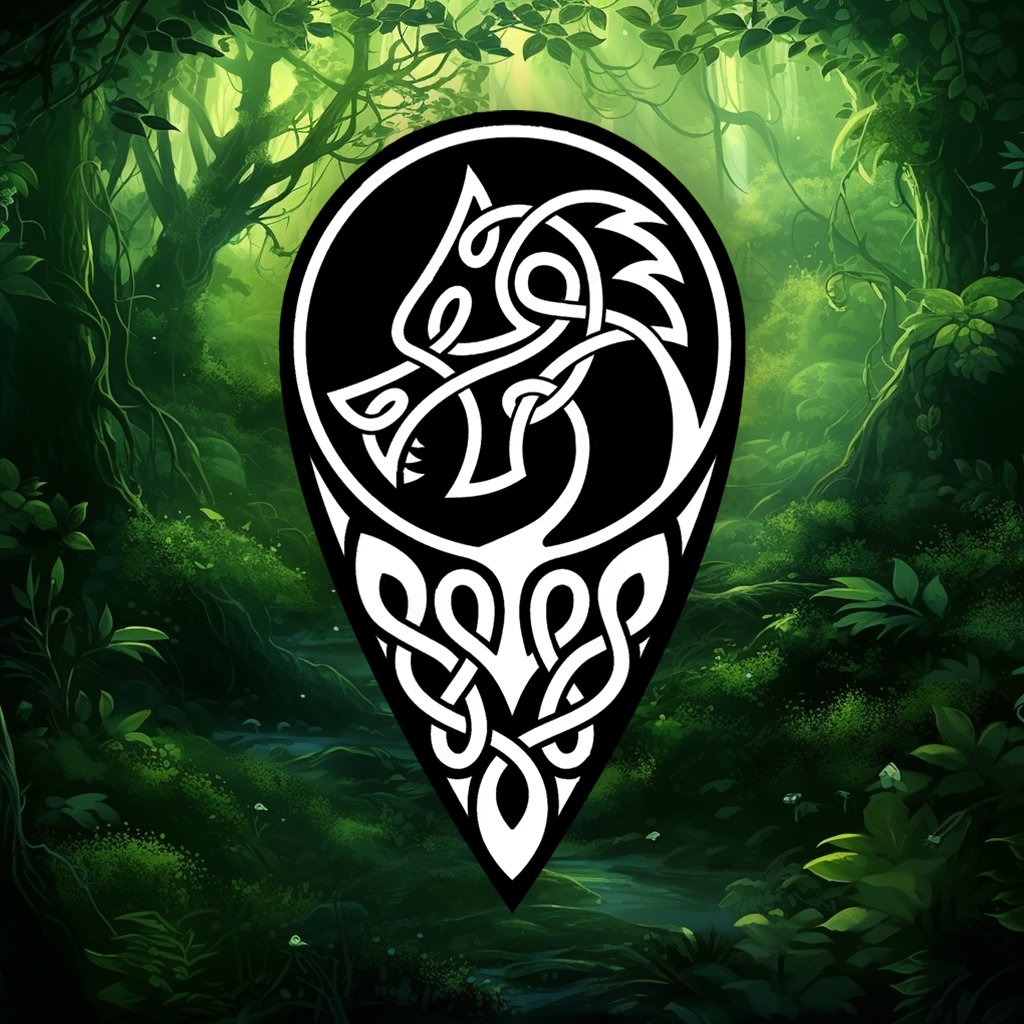
The dragon in Celtic mythology stands for power, strength, and magic. Celts believed dragons came from a world parallel to ours. Dragons were thought to have a strong bond with both the universe and the earthly realm. They were revered and respected for this connection.
Celtic dragons were believed to guard treasures. They were seen as bringers of good luck to those who respected them. Thus, the dragon was a symbol of power, wisdom, and fortune in ancient Celtic culture. It embodies the awe and wonder that the ancient Celts had for the mysteries of the universe.
Celtic Griffin
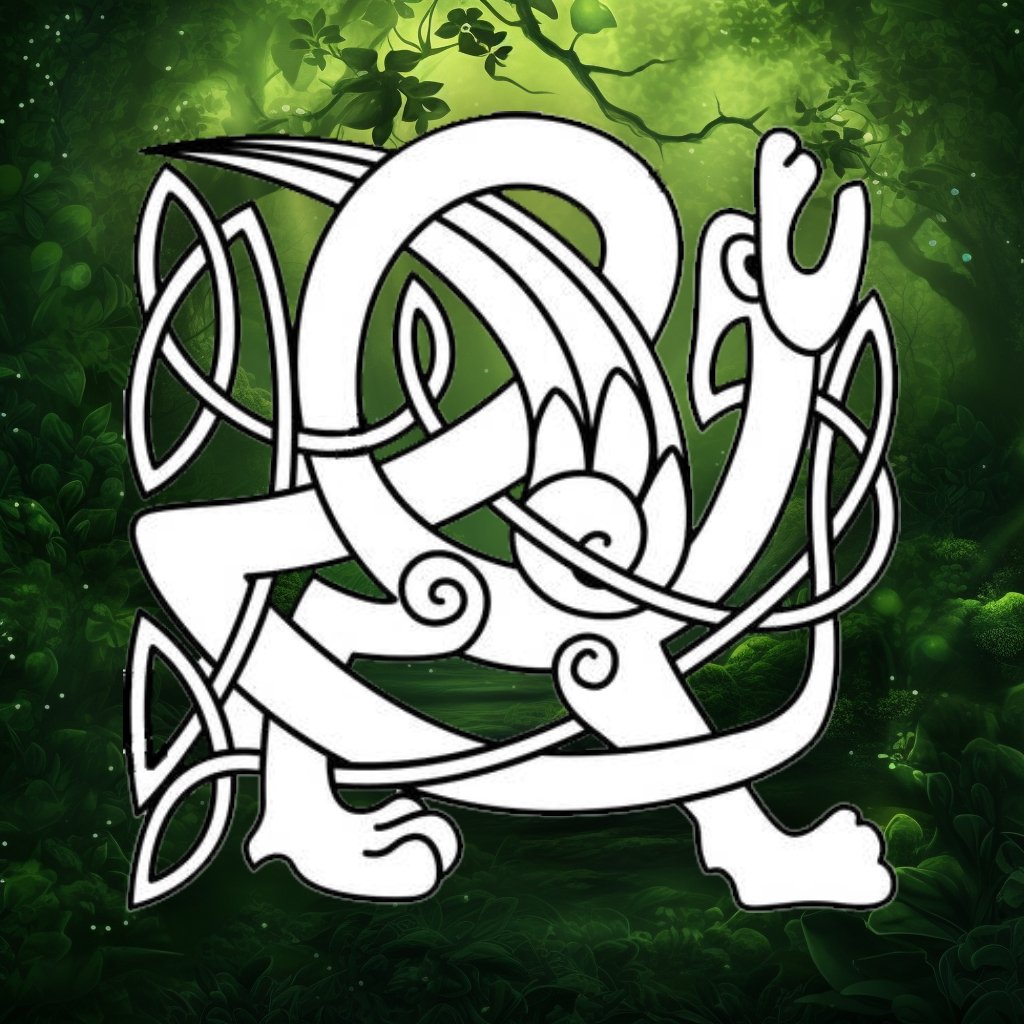
The Celtic Griffin is a mythical creature. It has the head and wings of an eagle and the body and tail of a lion. This creature is a symbol of strength, ferocity, balance, protection, and divine power. It represents the balance between light and darkness.
The Griffin can be seen as a protector in the journey into the afterlife. It is a symbol of protection, both in life and in death. The Griffin’s dual nature, being part lion and part eagle, represents balance. It symbolizes the blend of earth and sky, body and spirit. The Griffin is also a symbol of strength and protection in the face of life’s challenges.
Celtic Boar
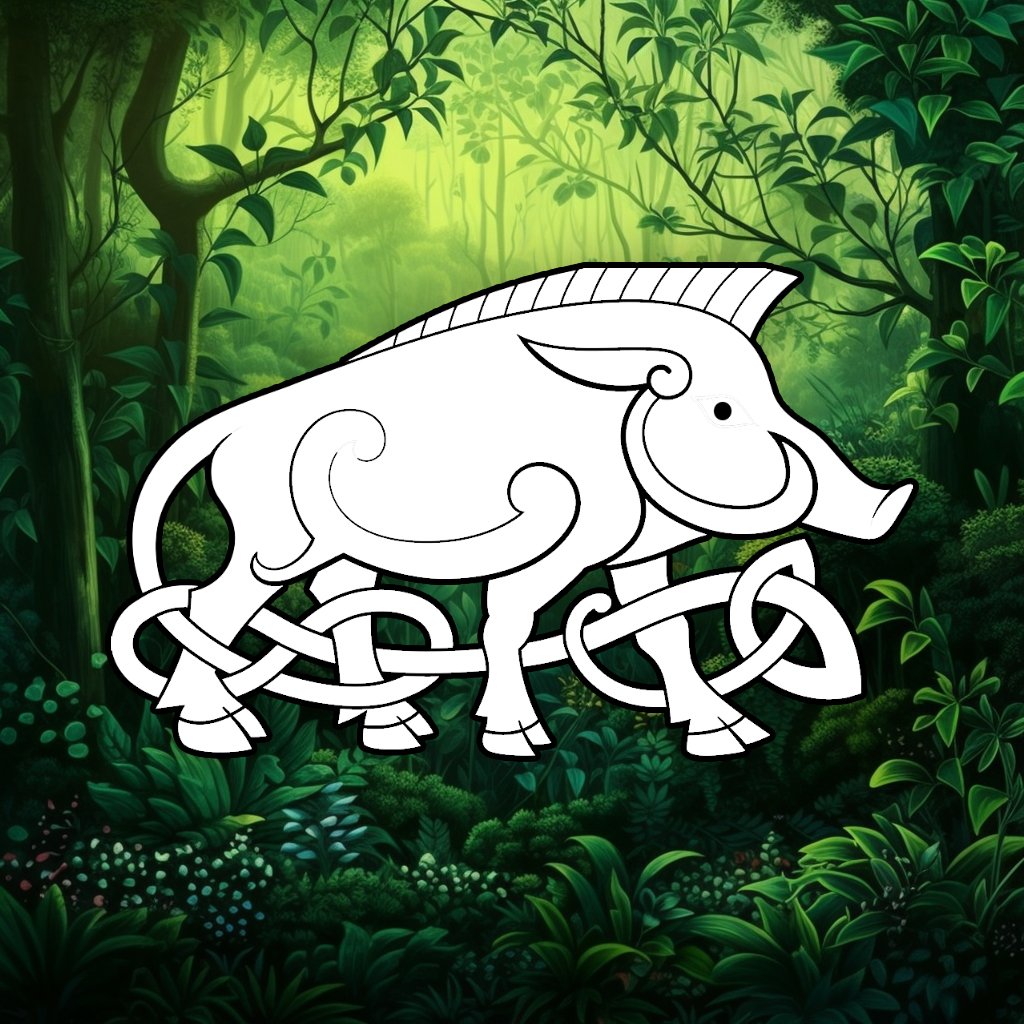
The Boar is a symbol of strength for the Celts. It stands for valor and fierceness, which made it a favorite amongst warriors. The Boar symbol often appeared on warriors’ helmets.
The origins of the boar symbolism in Celtic culture can be traced back to the god Moccus. Moccus is a swine god that was revered as the god of fertility and life.
The boar was one of the most popular animal symbols for the Celts.
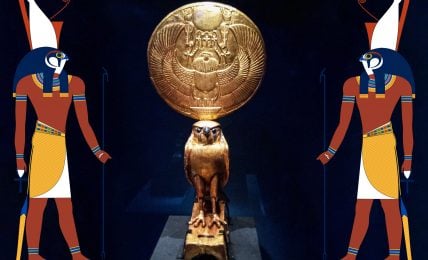
5 Roles of the God Horus in Ancient Egyptian Mythology
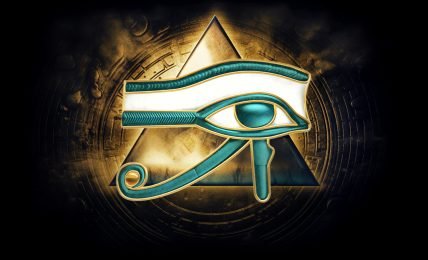
Eye of Horus vs. The All-Seeing Eye — Symbols of Power
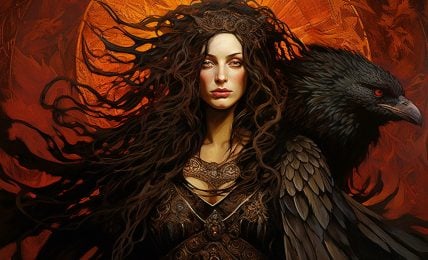
The Morrigan — The Triple Mystery of a War Goddess
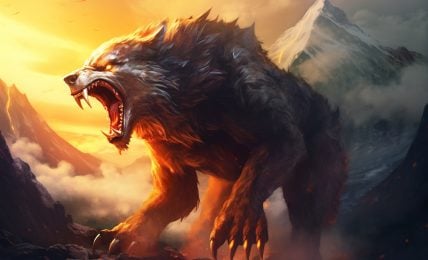
Fenrir — The Great Wolf of Norse Mythology
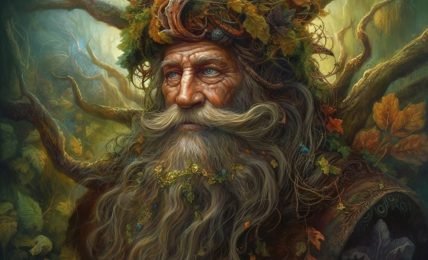
10 Powerful Gods & Goddesses of Celtic Mythology
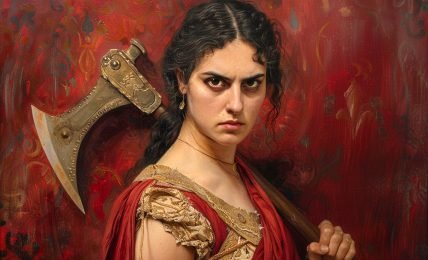
A Modern Perspective on Clytemnestra and Agamemnon

Celtic Symbols: Your Complete Guide to the Origins and Meanings
By: Author Nils Beese
Posted on Last updated: October 8, 2023
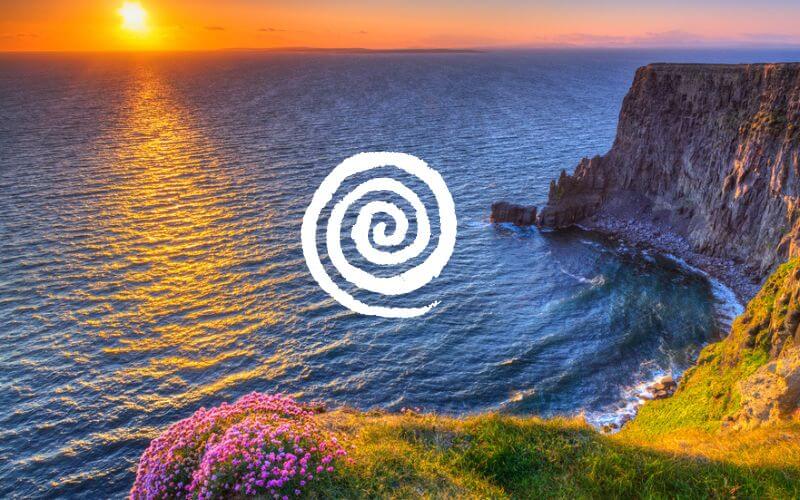
Table of Contents
- 1 Celtic Symbols and their Meanings
- 2 Celtic Symbols
- 4 Celtic Knots
- 5 Triskelion
- 6 Triquetra or Trinity Knot
- 7 Celtic Tree of Life or Crann Bethadh
- 8 So-called Celtic symbols
- 9 Frequently Asked Questions
Celtic Symbols and their Meanings
The Celtic Revival in the mid-19th century sparked people’s interest in Celtic Culture, Celtic mythology, and of course Celtic symbols.
It is undeniable that the Celts have left a lasting impression on many different cultures across Europe, least of all Ireland.
One important point that must be clarified is that Celtic symbols are often mistakenly thought of as symbols of Ireland and its culture. This is simply not the case.
What is the difference between Celtic Symbols and Irish symbols?
Celtic symbols are older than Irish symbols.
The origin of Irish Celtic symbols date back to the Celtic tribes who first settled in Ireland about 500 BCE. These people left an impressive cultural artistic legacy through their design and artwork, not only in Ireland, but also areas of Europe as well.
Symbols, like the Irish harp, the shamrock and the leprechaun have evolved associations with the Emerald Isle, Irish people and Irish culture in more recent times after the existence of the Celts.
If you want to read about Celtic Knots , then our article is a great place to start.
Celtic Symbols
The Celts were highly skilled crafts people, who have left a remarkable legacy of artwork in their wake.
Their Celtic symbols may have originated, or at least been in part inspired by the artwork of the older Neolithic period.
(If you would like a quick recap about who the Celts were and the origins of their artwork and designs read the FAQ at the end of this post ).
List of Celtic Symbols:
- Celtic Spirals
- Triskelion or Triskele
Celtic Knots
- Triquetra or Trinity Knot
- Celtic Tree of Life
So-called Celtic Symbols
- Celtic Cross
Spiral of Life
- Awen
Spirals are one of the most ancient symbols and have developed in several cultures across the globe.
In fact, some of the oldest examples of spirals in the world have been discovered in Ireland .
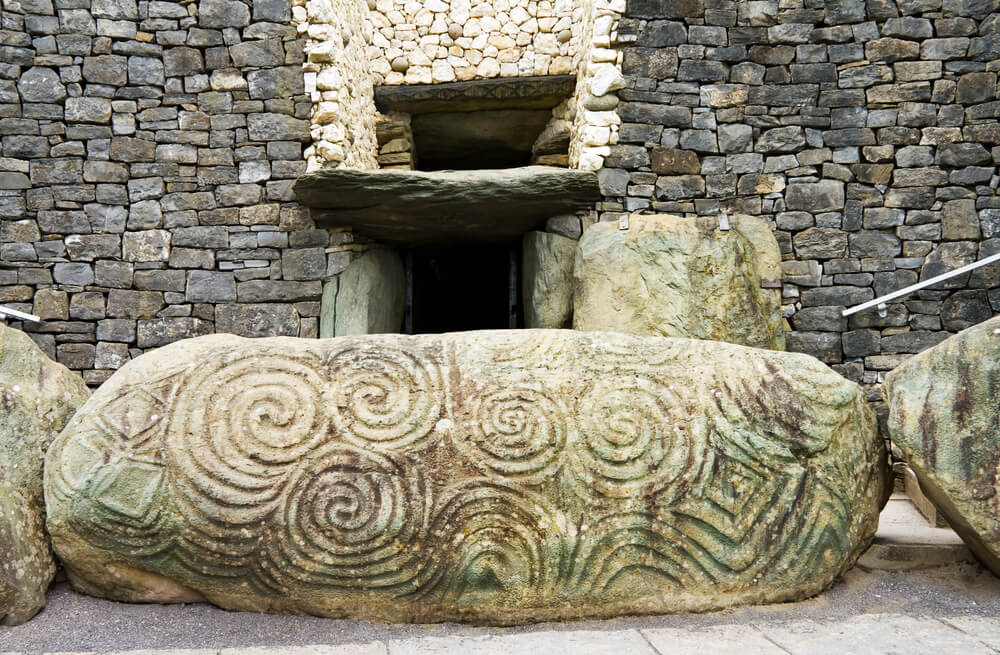
These are found in the Neolithic artwork of the Newgrange burial tomb in County Meath, Ireland from about 3200 BCE (and predate the Pyramids).
The Celts only arrived in Ireland about 500 BCE, so these spiral design symbols predate them.
Types of Spirals and their Meanings
Spirals are a common feature of Celtic art and there are a number of different kinds.
Please be aware that spirals in Celtic art should not be confused with the term “Celtic Spirals”, which often refers to the triple spiral symbol of the Triskelion or Triskele.
As with all Celtic signs, deciphering the exact meaning is difficult as there are no written records.
Based on the research of scholars in the field, there are solid interpretations as to what they might symbolize.
Single Spiral
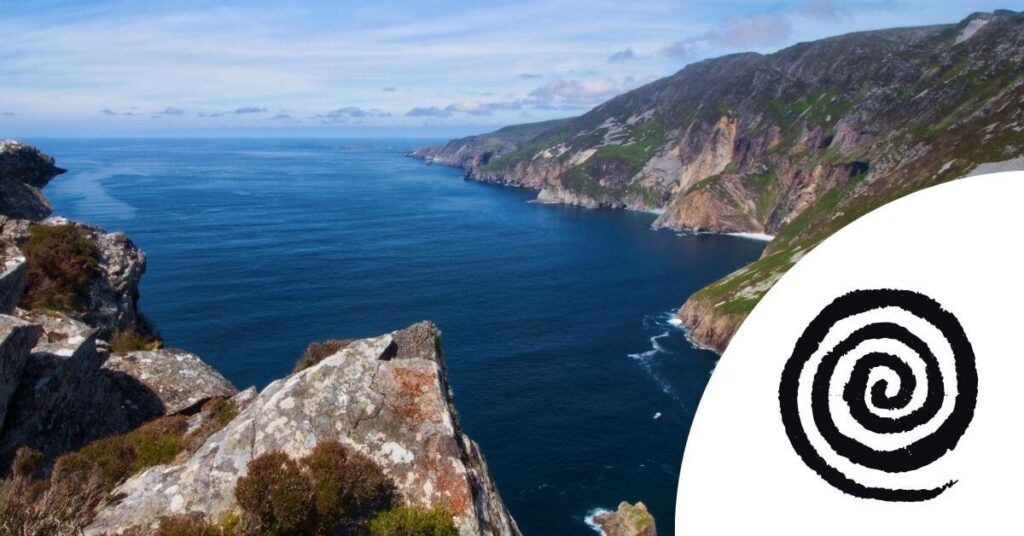
An anti-clockwise spiral is thought to symbolize the passage from the inner self to the outer soul.
This Celtic single spiral is thought to show the development, or growth of a person over time and maybe connected with cosmic energy.
These single spirals have been most commonly found on archaeological burial sites and on dolmens in Ireland and France.
Clockwise Single Spiral
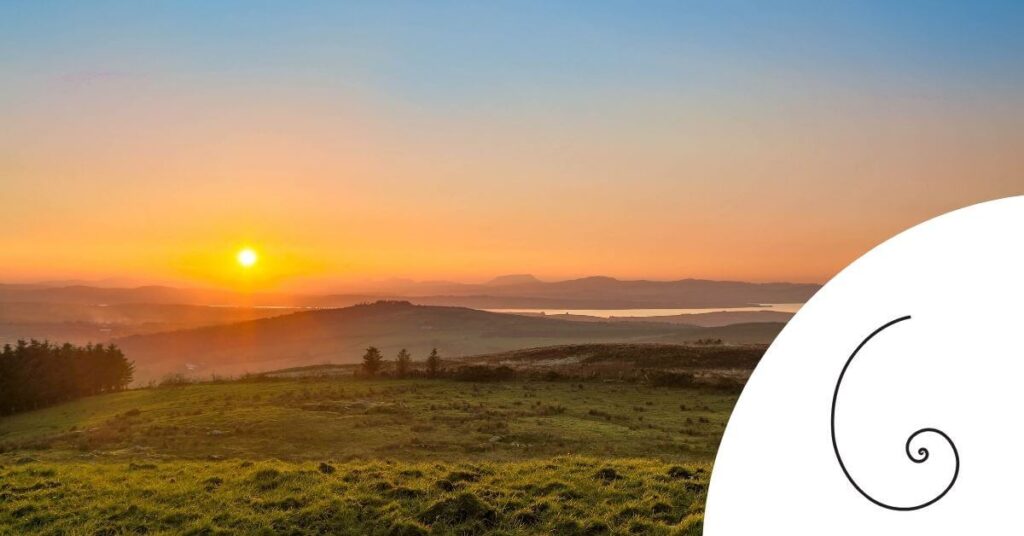
A loose right-winding spiral has been commonly associated with the element of water.
While there is no Celtic symbol for power, this might be one of the closest representations.
It is also somewhat connected with independent movement and tribal migration.
Double Spiral
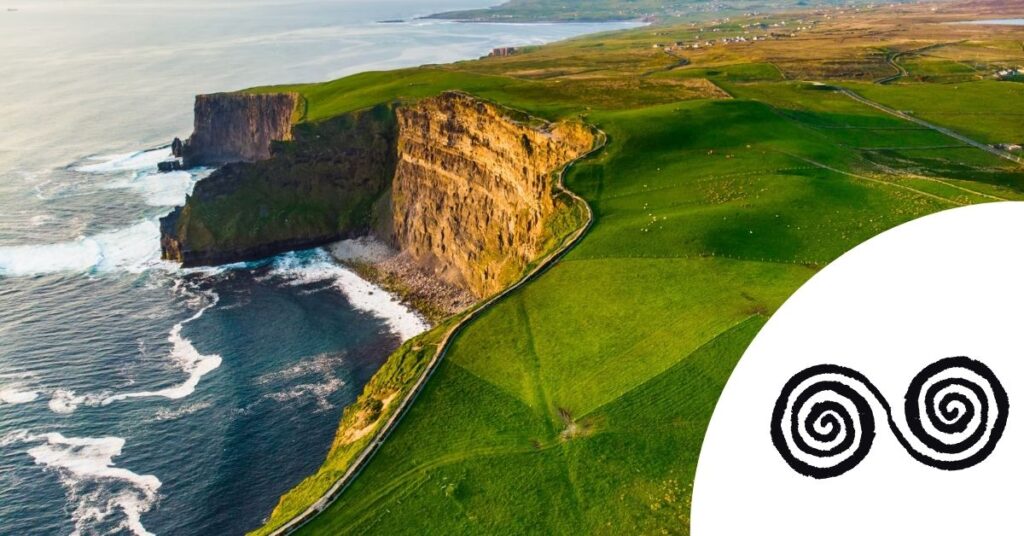
By combining two single spirals the double spiral is formed. The spirals are not a mirror image of each other, but rather wind in different directions.
The double spiral can be seen as a symbol of becoming and traversing from one point to another.
The spiral starts in one direction (clockwise) and changes direction (anti-clockwise) while still moving forward.
As well as being symbolic, the double spiral is often used for decorative purposes in Celtic art.
Double Centred Spiral
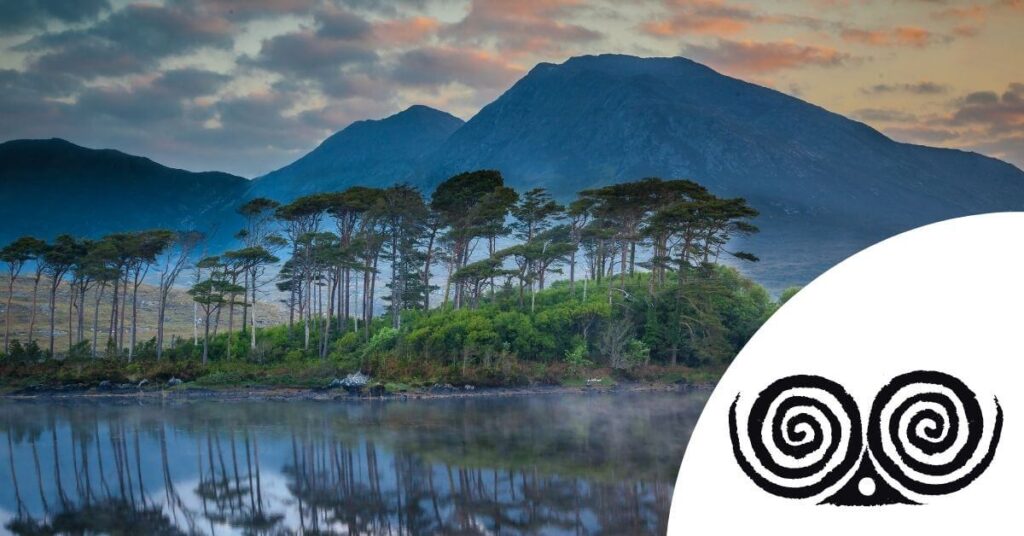
The double centered spiral is a more elaborate symbol that is thought to symbolize the moon, as well as the number two.
It is also thought to stand for balance and harmony through the two-foldedness of nature.
This book is a useful source to find out more about spirals. It is an in-depth, academic reference book, which provides brief, but thorough background to Celtic Spirals, as well as the significance of spirals in many other aspects across the world.
Celtic knots are one of the most recognisable of all Celtic symbols. ( Read here for a detailed overview about Celtic Knots )
Due to the appearance of similar knots, such as in floor mosaics from the late Roman period and early Byzantine Empire artwork in the 4th century, it can be difficult to exactly date the origins of Celtic knots.
Prior to the arrival of Christianity in Ireland in about the 5th Century, Celtic art generally consisted of patterns of spirals, lozenges and other geometric designs.
From roughly about 600 CE, Celtic knots became a regular feature of Insular art (or Hiberno-Saxon art) that developed in Britain and Ireland around this time.
The artwork from this period tends to focus on linear patterns incorporating loops and braiding of one continuous line to create complex spatial designs.
What are Celtic Knots?
Celtic knots consist of an interlaced pattern of loops that are without a beginning or end.
They are commonly seen in illuminated manuscripts, metalwork and stone carving throughout Ireland from about the 7th-12th century.
What do Celtic Knots Symbolize?
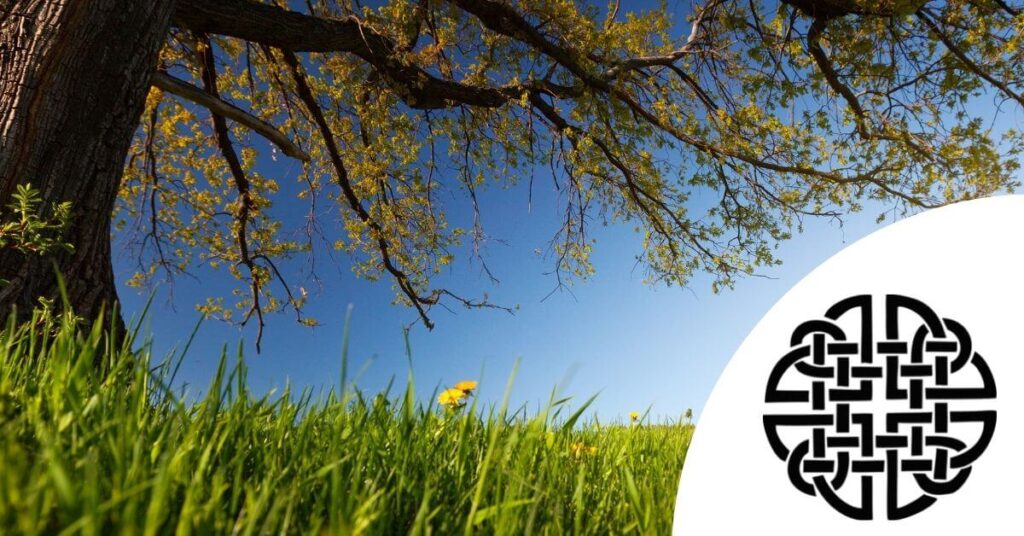
The endless nature of a Celtic knot without a start or finish point is thought to symbolize eternity and unity.
This symbol is particularly well aligned with the popular representations of everlasting love, friendship and loyalty.
However, due to the largely oral tradition of the Celts, Celtic knot meaning and the exact origins have been left open to scholarly interpretation.
Popular Types of Celtic Knots and Celtic Patterns
There are several different Celtic Knots and Celtic patterns.
These patterns of knot Celtic design work would have been used on decorative manuscripts, as well as stone carvings and metalwork design.
Today, many are often incorporated into Celtic jewelry designs.
List of Celtic Knots:
- Celtic Spiral Knot or Triskelion
- Celtic Trinity knot
- Celtic Love Knot or Serch bythol
- Celtic Sailors Knot
- Dara Knot
- Celtic Shield knot
- Celtic Motherhood Knot
Celtic Knotwork interlace, Celtic spirals, step patterns and basic knot patterns form some of the basis for Celtic patterns and Celtic knot pattern designs.
Triskelion
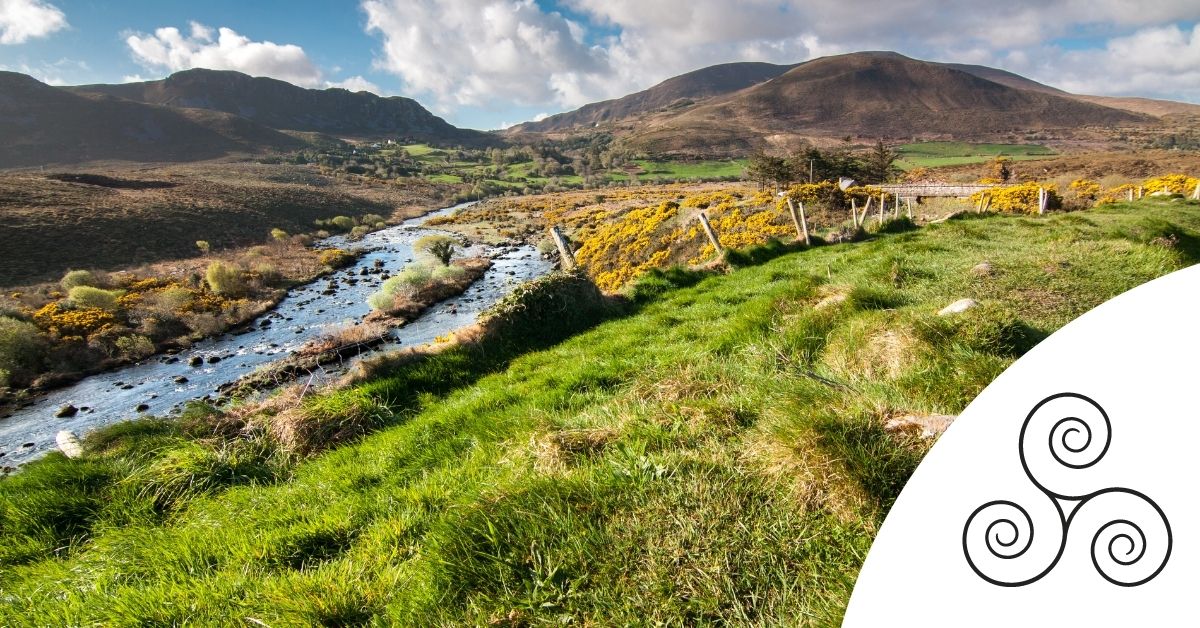
The Triskelion, Triskele or threefold spiral is an ancient symbol which features an interlocked triple spiral.
It can appear that the symbol has three legs, which is where the Greek origin of the word “Triskele” stems from.
Although the word Triskele is older in origin, the Triskelion is commonly used.
Triskelion is the diminutive form of the word and had its first appearance only in the 19th century.
The Triskelion Origin
It is worth noting although this is considered to be one of the ancient Celtic symbols, the Celts were not the first people to use it.
Similar designs have been found in Malta, as well as in the Neolithic burial tomb of Newgrange in County Meath in Ireland.
The Triskelion Meaning
As all things related to the number three were held in high regard, it is likely that the Celtic Triskelion held great significance for the ancient Celts.
The Triskelion is thought to be a symbol of the druids of the Celtic culture.
There is a connectedness in this triple spiral symbol as there appears to be a motion to the outer spirals and returning flow to the inner center.
This is sometimes associated with life in the form of becoming and death at the end.
Other ideas behind the Triskelion spiral include that it stands for three distinct worlds:
- The physical world where we live
- The spiritual world home to ancestors, spirits and the gods
- The cosmic world consisting of the sun, moon, stars and other planets
Or perhaps that the Triskelion symbol represents three domains: the earth, sky and water.
Triquetra or Trinity Knot
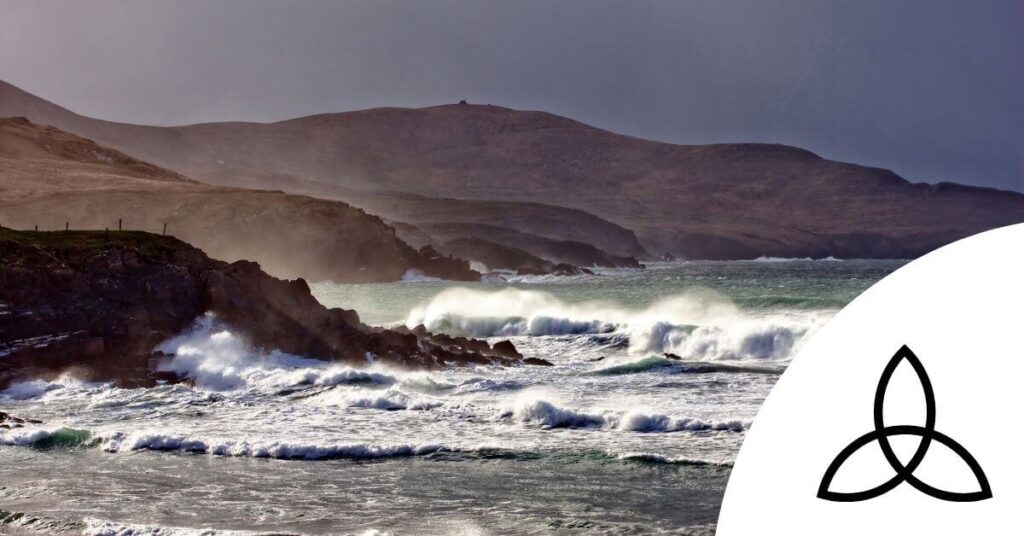
The Triquetra or Trinity knot is the simplest knot and is composed of three interlaced arcs.
It is also sometimes known as the trefoil knot (named after the three-leafed clover or trefoil) or simply the Celtic Trinity knot.
In some designs, a circle is present either outside or weaving inside the three arcs.
This reinforces the concept of eternal life and spiritual unity associated with the knot and was likely added by Christians.
The Celts were not the only culture to use this symbol as the triquetra is also a feature of the Buddist tradition in Japan.

What does the Trinity Knot Mean?
Like most Celtic symbols, there is speculation about the original meaning of the Trinity Knot.
One popular belief behind the Trinity Knot meaning can be seen in its name. It represents the concept of the Holy Trinity in Christianity.
It contains three separate, but united parts within one symbol which aligns with the belief of the Father, Son and Holy Spirit being one.
It is highly possible that this symbol actually predates Christianity and the original Triquetra meaning as one of the Celtic pagan symbols has been lost over the course of history.
What is known though is that Celts tended to cluster important things in groups of three, for example the world around them consisted of earth, sky and water.
This is a recurring concept that can be seen in Celtic art and Celtic culture and is also seen in the Triskelion .
Modern Uses of the Trinity Knot
The Trinity knot is often seen as a symbol of the ancient culture of Ireland and is possibly the best known Irish Celtic symbol.
It frequently adorns Irish Celtic jewelry, wedding rings, ornaments and souvenirs.
Due to its endless design representing unity and eternity, the Trinity knot design has become associated with the Celtic symbol for family in modern culture.
The Celts themselves did not have specific Celtic symbols for family, but as meanings become blurred, people (and many savvy businesses) have created their own interpretations into Celtic symbols.
Celtic Tree of Life or Crann Bethadh
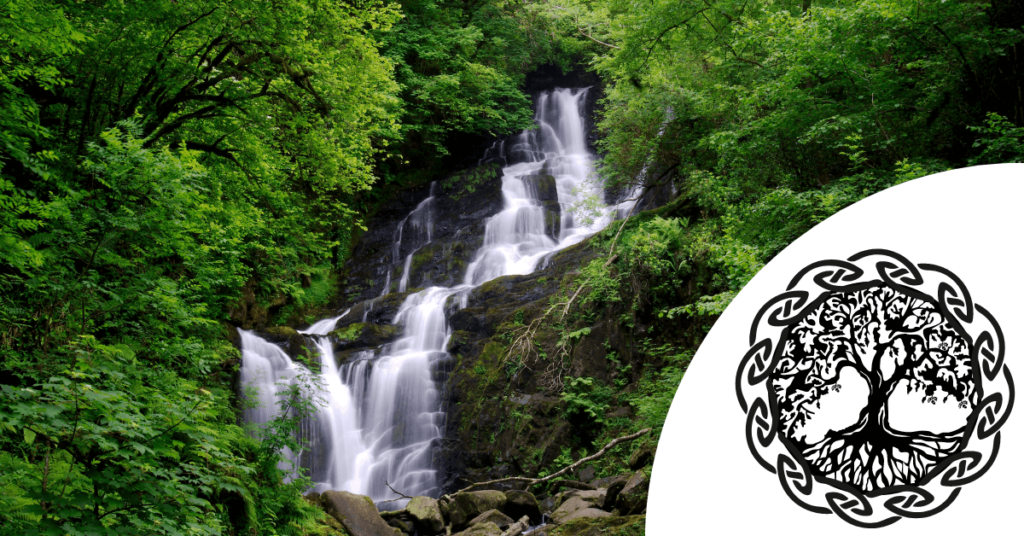
Throughout the world, the tree of life is seen as an important symbol in many cultures.
The Celtic Tree of Life, Gaelic Tree of Life, or Crann Bethadh as it is known in the Irish language, was held in particularly high regard by the ancient Celts.
There is a lot of information about the Celtic symbol Tree of Life online.
Unfortunately, as with nearly all Celtic Symbols, it can be difficult to separate fact from fiction in some cases and many things are disputed. Please be selective of what you read and believe.
(This is one of the most authoritative books on the subject. It is quite in depth and detailed, like all the books in the Aidan Meehan design book series)
What is clear is that trees played a very important role in the lives of Celts.
The Celts believed that trees acted as sacred symbols, were home to their ancestral spirits and could act as doors to the Otherworld.
Trees were also valued by the Celts for their medicinal properties, as well as being life-giving sources of food, shelter and timber.
They were also thought to protect against evil spirits.
Oak trees were considered by the Celts to be the most important of all tree species.
It is therefore no surprise that the sacred tree species shown in the Celtic Tree of Life is an oak.
What is the meaning behind the Celtic Tree of Life symbol?
The most commonly held belief behind the meaning Celtic Tree of Life is that it brings balance and harmony by connecting the different worlds together.
The Celtic Tree of Life symbol depicts an oak tree with its branches reaching up towards the heavens, a strong, stable trunk standing firm and roots that ground the tree into the earth and connect with the Otherworld.
This connection between different worlds is closely associated with the natural cycle of life through birth, death and rebirth and fits with the Celtic circle of life.
The two native Oak trees in Ireland (Common Oak and Pedunculate Oak) bud new leaves in spring, flourish over the summer months and lose their leaves in autumn leaving the trees barren and empty in winter until the entire cycle starts again.
What does the Celtic Tree of Life Symbolize?
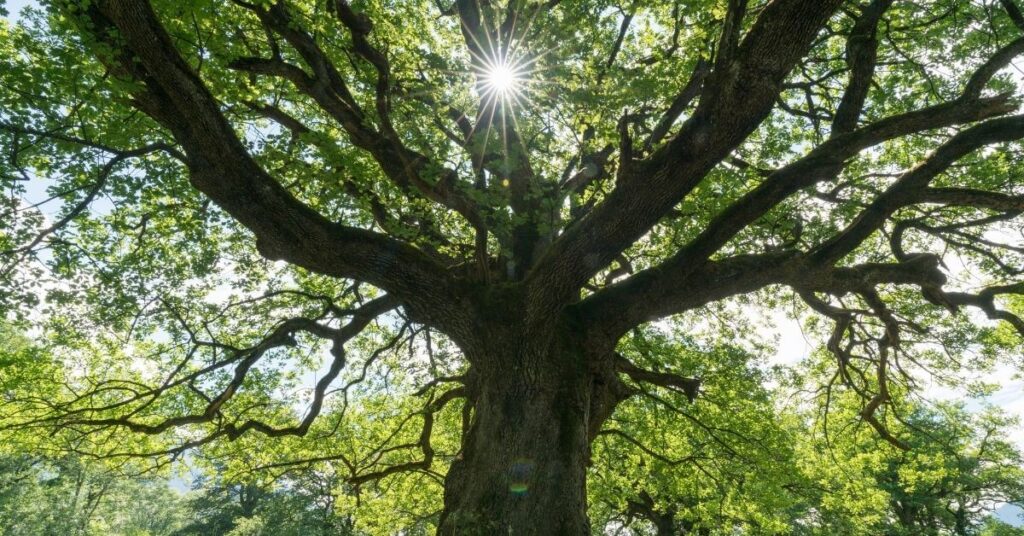
The Celts’ Tree of Life is a very powerful Celtic symbol for strength, wisdom and longevity.
Given the correct environmental conditions, oak trees can live for several hundred years.
Thanks to this longevity, the Celts believe that an oak tree would accrue vast amounts of knowledge and wisdom over its lifetime.
The slow growth of oaks also contributes to the high quality of its timber.
Oak is a strong, hardwood that is heavier and denser than other softwoods. This appealing and valuable characteristic of oaks was revered by the Celts.
There are now many different variations and stylistic interpretations of celtic ancient symbols, including this one. The Celtic Tree of Life is a very popular design for Celtic jewelry.
In the most basic form of the Celtic Tree of Life, the branches are spread wide above the tree stretching up- and outwards and the roots tend to mirror this pattern in the ground beneath the trunk.
Some variations of the Celtic Tree of Life symbol use one continuous line in an interwoven knot pattern to create the Celtic Tree of Life knot.
This pattern symbolizes endlessness due to the fact Celtic knots have no beginning and no end.
So-called Celtic symbols
Not all things that are labelled “Celtic” are Celtic in the true sense.
Here are some commonly seen examples:
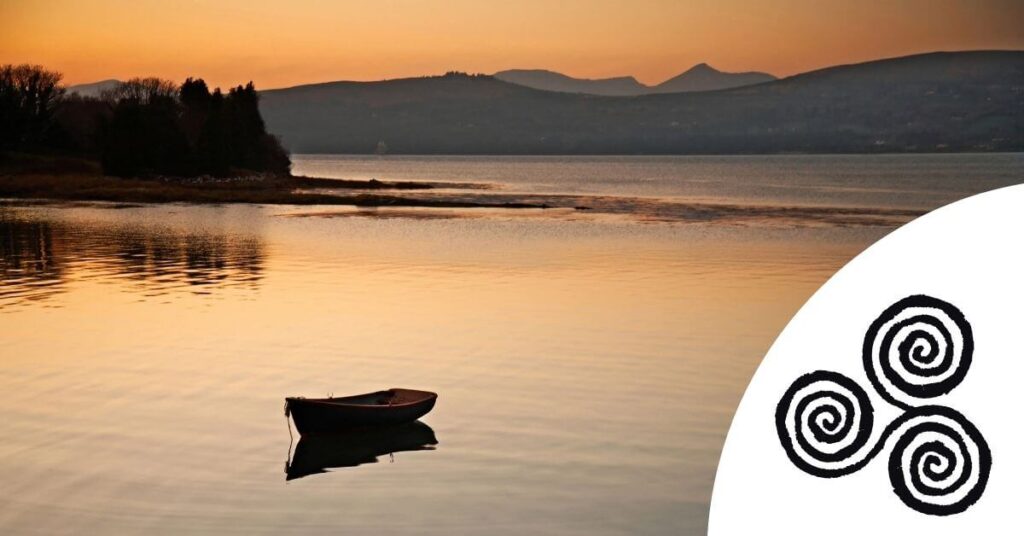
The Spiral of Life is often denoted to be an ancient Celtic symbol, but in fact the origin of this ancient symbol predates the Celts.
In fact the oldest record of this symbol is inside the passage of the burial chamber in Newgrange, County Meath in Ireland.
This specific carving dates from the Neolithic Period (ca. 3200 BCE) and was created long before the arrival of the Celts in Ireland (ca. 500 BCE).
It is thought to symbolize the sun, which is of significant importance in Newgrange.
(The tomb entrance is aligned so that sunlight enters the chamber through the passage only on the days around the winter solstice.)
Given the importance of the number three to the Celts, they may have adopted this symbol, or a variation of it, for their own purposes.
Due to its endless design, it has been suggested that this version could stand for the threefold goddess.
Brigid is one of the most famous of the Celtic triple goddesses .
Celtic Cross
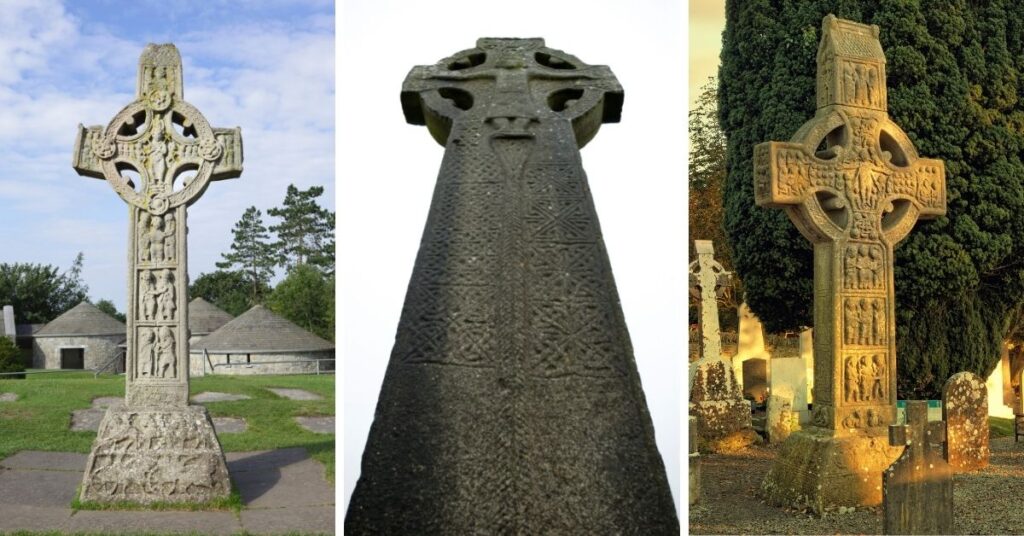
The Celtic Cross , Irish Cross , Celtic High Cross or simply High Cross, as it is most often known, is a very recognisable symbol often associated with Ireland.
However, it is not entirely correct to call it a Celtic symbol, Celtic sign or even a Celtic Christian symbol. It is more accurately described as a Christian symbol that incorporates elements of Celtic design.
A Celtic Cross differs from the usual depiction of a Christian Cross through the use of a circle around the intersection of the cross. It is often ornately carved using Celtic patterns.
These types of crosses are found not only scattered across Ireland, but in other areas where the Celts were prominent, including Scotland.
Most are found in the ruins of old monasteries, such as the Monastery of Clonmacnoise that was founded by Saint Ciaran on the banks of the Shannon in the 6th Century. The Cross of the Scriptures is found at this location.
Another excellent example of an Irish Celtic Cross is Muiredach’s High Cross Monasterboice, County Louth.
The symbol of the Awen contains three separate lines with wider bases and tapering tops usually encircled within a ring. In some forms there are dots above each line.
It is used in modern Druidism as a symbol for inspiration, but is not an ancient Celtic symbol.
There is sufficient evidence to believe that this symbol was created by the known forger, Edward Williams , who usually went by his bardic name of Iolo Morganwg.
Frequently Asked Questions
This sections will come in useful if you would like to learn more or just have a refresher in Celtic history and art.
Who were the Celts?
The Celts were tribes of people who expanded westward across Europe from roughly 700 BCE. They were a warrior culture with exceptionally good design and craftsmanship skills.
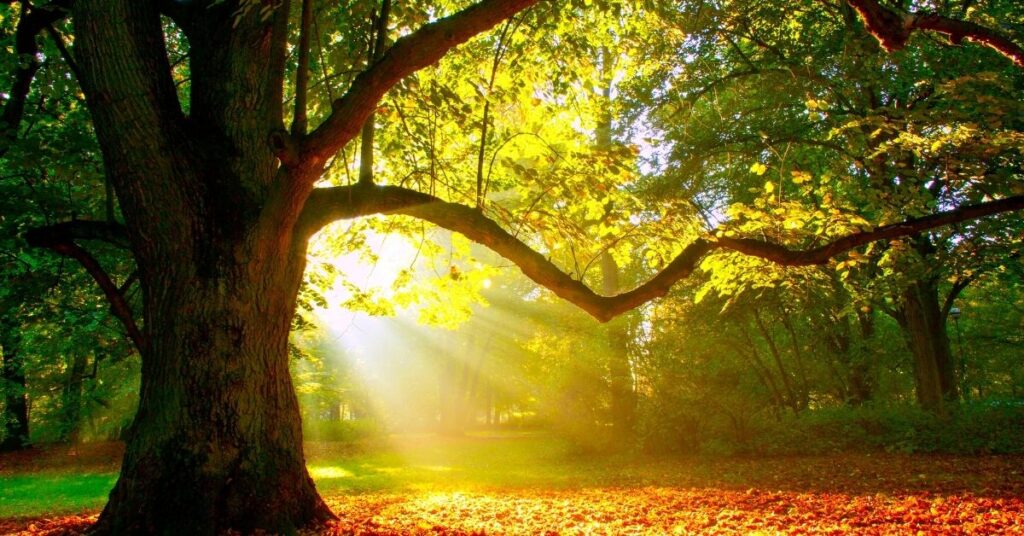
When did the Celts arrive in Ireland?
Experts believe that the Celts arrived in Ireland around 500 BCE at the end of the Irish Bronze Age. from neighboring Celtic areas in central western Europe.
What is Celtic Art?
The influence of Celts and their Celtic artwork can be seen throughout Europe during the pre-Roman times. (The history of Celtic art is quite extensive so this is the bite-sized summary.)
During the La Tène period from ca. 450 BCE to 1 BCE, Celtic artwork flourished. The patterns they created were often inspired by nature and featured geometric patterns, spirals and triskels.
Celtic Insular art (or Hiberno-Saxon art ) is from the post-Roman era and refers to the artwork produced in Ireland and Britain. These artworks commonly feature interlace patterns, which is a typical pattern that many people associate with “Celtic Art”.
This style of Celtic art reached its artistic peak in Ireland during the 7th-9th centuries and declined once the viking raids started to take place. It is thought to have extended to about the 12th Century in Ireland.
Intricate interlace patterns are seen in the Book of Kells , which is probably the best example of a manuscript from this time.
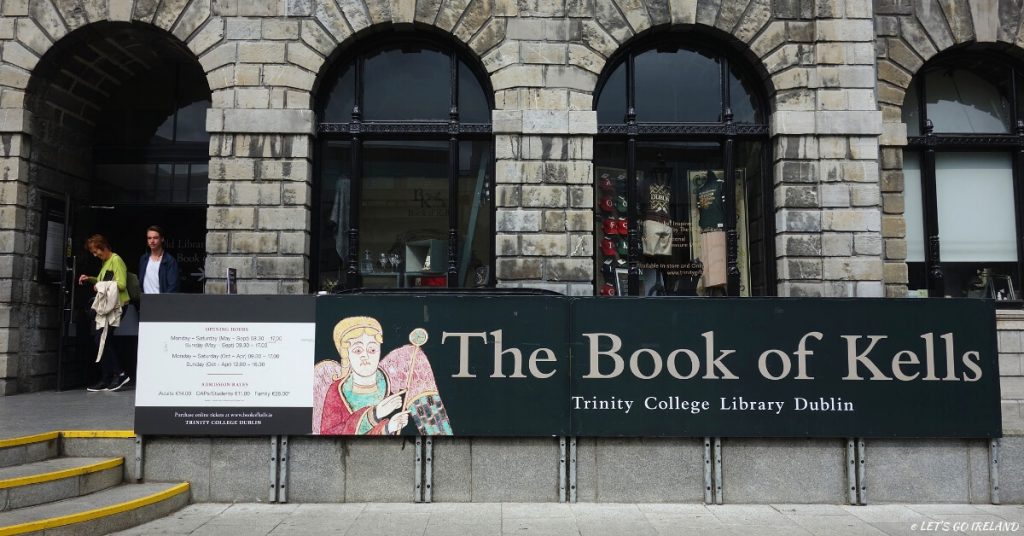
Is it possible to accurately interpret the meanings of Celtic Symbols ?
Celtic traditions and knowledge were passed down by word of mouth from one generation to the next.
Even druids, who were thought to have been literate in some cases, did not leave written accounts. This is probably because they were forbidden to do so.
Without written sources it is difficult to verify whether the traditions and symbols Celtic that people created may have changed or have lost their original meaning over time.
The meanings behind the symbols that are given today are based on the research and guesswork of scholars.
For example, the late artist George Bain was a pioneer in untangling the intricacies of Celtic art and knotwork in the mid-20th century.
It is worth keeping in mind that many of the meanings behind Celtic symbols were only attributed relatively recently during the Celtic Revival (in the mid-19th century).
There is a vast amount of information available on the subject of Celtic symbols online. However, the large majority of information about Celtic Symbols available online tends to be either not true or not entirely accurate.
For example, if you were to believe everything you read, you would think that there is a Celtic symbol for new beginnings (which there is not).
Please remember this and be critical of the information you read, even from so-called “reputable” websites (especially if you are searching for a Celtic symbol tattoo).
With this in mind, we would like to state that this article has been researched to the best of our abilities.
For further reading on this subject, please check out the following:
- Spirals and Vortices: In Culture, Nature and Science, Eds. Kinko Tsuji and Stefan C. Müller – Interesting information about the origin of spirals
- The Methods of Construction by George Bain – A slightly dated, technical guide about how to draw Celtic designs. (It is not for beginners, but interesting for people who like the subject.)
- The Celtic Design Book by Aidan Meehan – This is a useful artistic guide about Celtic designs and meanings.
Looking for Celtic Knot Tattoo and Celtic Symbol Tattoo Motifs?
One of the most popular reasons people research Celtic symbols is when they are looking for Celtic tattoo ideas.
The decision to get a tattoo is a very personal one. Aside from aesthetic reasons, there are many other grounds why people opt for Celtic tattoo designs.
For some people, celtic knot tattoos may enhance the connection to their Celtic heritage.
Others may search for the Celtic symbol for strength or the Celtic symbol for inner strength in the belief that it may help their own resilience.
Family members are also often the motivation behind Celtic symbol tattoos with Celtic knot for family, the Celtic symbol for mother and son and the Celtic symbol for mother and daughter being popular.
Others may identify with a Celtic Cross tattoo as a representation of their faith.
Whatever the reason, it is important to know that a lot of information online about Celtic symbols and Celtic knots is not true or accurate.
As the Celts did not keep written records, the meanings behind the symbols cannot be completely verified and are largely based on interpretations .
Some of these interpretations have been made by scholars who researched the available facts and knowledge of Celtic culture and customs.
Other interpretations behind the meaning of Celtic symbols come from less reliable sources.
It is worth investing time before getting a Celtic design inked on your body that the symbol, word or phrase used is the celtic knot tattoo meaning that you want and expect.
This book may be of some help if you are looking for exact and relevant translations of English words and phrases into the Irish language.
Although it does not focus on Celtic designs, it is related and does give useful insights into Irish and Irish expressions.
Whatever the reasoning behind getting any tattoo, be sure to do your research before getting something inked on your body.
Find out more about Celtic Knot designs here.
I nterested in finding out more about Ireland and its Celtic heritage?
If you would like to see ancient Irish metalwork and Celtic design, then a trip to the National Museum of Ireland for Archeology is a must.
Find out more about it and other things to do in Dublin here.
This post may contain affiliate links. If you click on one of them, we might receive a small commission (at no extra cost to you). Thanks for your support!

(Irish and Celtic Culture Aficionado, Literature Buff)
Nils Beese co-founded LetsGoIreland.com driven by his love for Ireland’s rich culture and captivating Celtic traditions. Holding a PhD in Irish literature, he’s spent time in Dublin and Cork, immersing himself in local tales and traditions. As a lecturer and guide, Nils seamlessly blends his German roots with his deep appreciation for Irish and Celtic culture. Through his writings, readers are invited into the vibrant and enchanting world of Irish stories and Celtic lore.

Triskelion / Triskele Symbol: Meaning, History + Celtic Link
By Author Keith O'Hara
Posted on Last updated: June 1, 2023

The Celtic Triskelion (AKA the Triskele or the Celtic Spiral) is a very ancient symbol.
And, in fact, it isn’t actually one of the Celtic symbols as it can be traced in Ireland to around 2,500 years before the Celts arrive in Ireland.
In the guide below, you’ll find its history, different designs along with the most accurate Triskelion meanings.
Table of Contents
Some quick need-to-knows about the Triskelion symbol

© The Irish Road Trip
Before you scroll down to read about the various Triskelion meanings, take 20 seconds to read the points below as they’ll get you up-to-speed quickly:
1. It predates the Celts
We can say with confidence that the Triskele symbol wasn’t invented by the Celts. We know this as the symbol was found on the Newgrange tomb in Meath. This tomb predates the arrival of the Celts in Ireland by over 2,500 years.
2. They did, however, use it
So, although the Celts didn’t invent the Triskele symbol, they used it extensively in their carvings, artwork and in some metalwork. It’s likely that they adopted the Triskelion symbol as it has three distinct sections (Celts believed that everything of importance came in threes).
3. A variety of meanings
The Triskelion meaning receives a lot of debate online. Some say that it symbolises strength and progress and the ability to move forward (see why below) while others say it represents the physical realm, the spirit world and the celestial world of the sun, moon, stars and planets.
4. One of the world’s oldest symbols
The Triskelion symbol is old – very old. It’s believed that the Celtic Triskele is around since the Neolithic times, which is roughly 3,200 years BC! It’s for this reason that the Triskelion meaning is so heavily debated.
A brief history of the ancient Celtic Spiral

As mentioned above, although it’s often referred to as the ‘Celtic Spiral’, the Triskelion symbol pre-dates the arrival of the Celts in Ireland by thousands of years.
Although its true origin is known, the Triskele can be traced back to different periods of time.
Early evidence
The Triple Spiral popped up in many cultures across the globe between the Neolithic to Bronze Age. One of the earliest occurrences took place between 4400–3600 BC on the island of Malta.
It was also found carved into the tomb of Newgrange in Ireland, which was constructed around 3200 BC. Interestingly, it was also found on Greek ships from the Mycenaean phase of the Bronze Age.
Greek and Italian usage
The chances are you may have see the ‘Triskeles proper’, which is the symbol you see above, but with three legs instead of the spirals. This was found in Greek pottery, shields and coins as far back at the 6th century.
In Syracuse in Sicily, the Triskelion symbol was used as far back as 700 BC. It was used by rulers of the city (possibly due to the island of Sicily having three headlands).
Appearances across Europe
The Triple Spiral made many appearances across Europe over the years. One of the more notable examples is in a carving in a settlement in the northwestern regions of the Iberian Peninsula.
There’s also evidence of the symbol in Gothic architecture which was popular during the 12th to 16th century.
The different Triskelion meanings

As is the case with many Celtic Knots and symbols, the Triskele meaning varies greatly, depending on what you ready and who you speak to.
Records from back when these symbols were used are light to say the least, so interpretation plays a big part in deciphering the Celtic Triskele symbol meaning.
Possible meaning 1
If you read our guide to Celtic symbols and their meanings , you’ll know the Celts believed that everything that was truly important came in threes.
As you can see in the photo above, this Celtic spiral symbol has three clockwise spirals, each of which connects from a central hub. It’s for this reason that many believe this is the Celtic symbol for family .
Possible meaning 2
Another possible Triskele meaning is that the three spirals represent the three worlds:
- The present physical realm
- The spirit world of ancestors
- The celestial world of the sun, moon, stars and planets
Possible meaning 3
The flowing knot design represents the Celt’s all-important number three along with endless lines with no visible point of start or finish.
Some believe the Celtic Triskelion meaning revolves around strength and progress and the ability to move forward and overcome extreme adversity (represented by the appearance of movement in the symbol).
FAQs about the Celtic Triskele
We’ve had a lot of questions over the years asking about everything from ‘What is the Celtic Spiral meaning?’ to ‘What design is good for a tattoo?’.
In the section below, we’ve popped in the most FAQs that we’ve received. If you have a question that we haven’t tackled, ask away in the comments section below.
What does Triskele symbolize?
The Triskele, which is one of the oldest symbols, is believed to symbolise everything from family and the three worlds (present, spirit and celestial) to strength and proggress.
What is the meaning of the Triskele?
The meaning of this symbol, as mentioned above, is open to interpretation. For some, it means strength and family unity. For others, it represents the different worlds.
Keith O’Hara has lived in Ireland for 35 years and has spent most of the last 10 creating what is now The Irish Road Trip guide. Over the years, the website has published thousands of meticulously researched Ireland travel guides, welcoming 30 million+ visitors along the way. In 2022, the Irish Road Trip team published the world’s largest collection of Irish Road Trip itineraries . Keith lives in Dublin with his dog Toby and finds writing in the 3rd person minus craic altogether.
This site uses Akismet to reduce spam. Learn how your comment data is processed .
Friday 9th of September 2022
Thanks so much for sharing my father told me all about your culture and how beautiful the symbolism is so when he died I got a Triskelion tattooed at the base of my neck love it
Monday 8th of November 2021
Thanks for the information! I got a bit confused about how to determine whether a Triskelion is clockwise or counterclockwise though. Do you start from the centre of a spiral and follow it to the central hub of the Triskelion, or the other way round? (I tried to find that out on other websites as well, but found both ways.) Thanks. :)
Friday 25th of March 2022
I was thinking the same thing. I see on pictures of Newgrange that it turns counter-clockwise. I just hope that all pictures of the kerbstone in Newgrange have not been flipped and are shown in mirror view. One can do that with pictures obviously :) But - for now - I trust that it is counter-clockwise!
Lisa Thornton
Tuesday 6th of July 2021
Thanks for the info!
Ancient Celtic symbols and their meanings
Love, family, strength - there's an ancient celtic symbol for almost anything.
Celtic symbols can be beautifully intricate and in some cases filled with intense mystery as to the various meanings behind them.
The symbols held incredibly meaningful powers in the lives of those living from approximately 500 B.C. to 400 A.D.
Historically, we have very little to go off when attempting to grasp the true sense behind them. Many of the recurring themes in the meaning of Celtic symbols are love, loyalty, energy, wisdom, and war.
We have created a list of some of the most well-known Celtic symbols to learn a little more about the language and their intention.
Sign up to IrishCentral's newsletter to stay up-to-date with everything Irish!
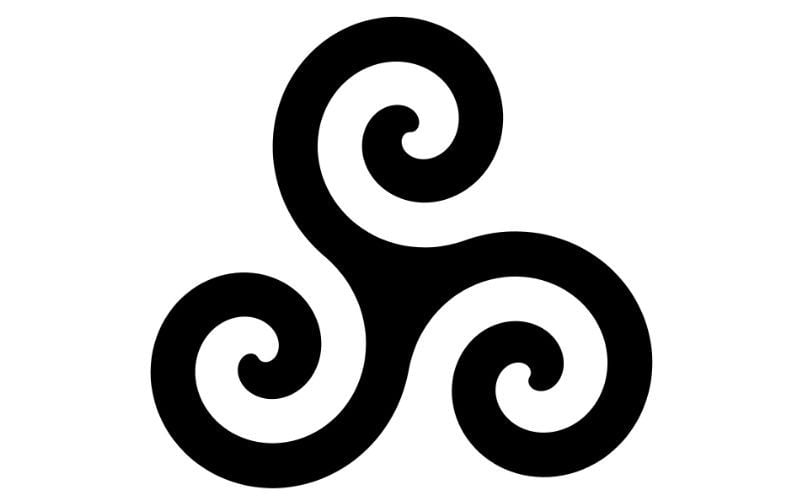
Celtic symbols and their meanings: Triskelion
The Triskelion symbol is made up of three conjoined spirals and rotational symmetry. Nature and the movement of life is the well-known meaning of the symbol, describing the past, present, and future. The symbol also shows strength in Celtic culture, it shows moving forward from adverse conditions.
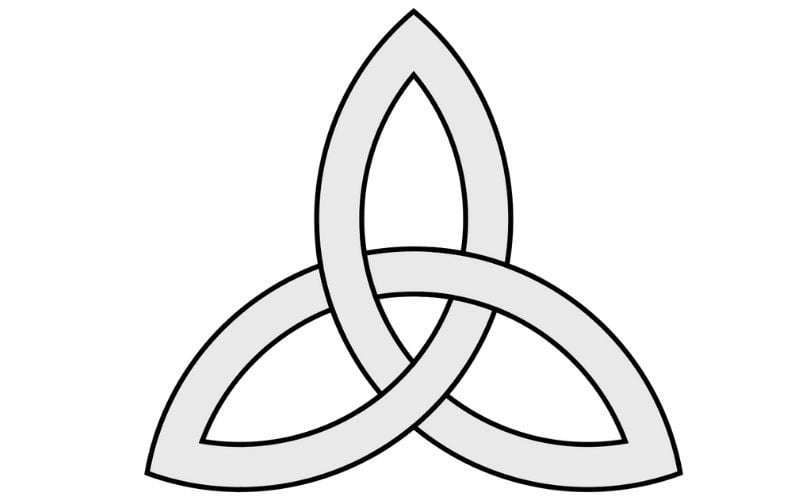
Celtic symbols and their meanings: Triquetra
The Triquetra, the symbol of eternal spiritual life, is one continuous line interweaving around itself which symbolizes eternal spiritual life.
Carolingian Cross
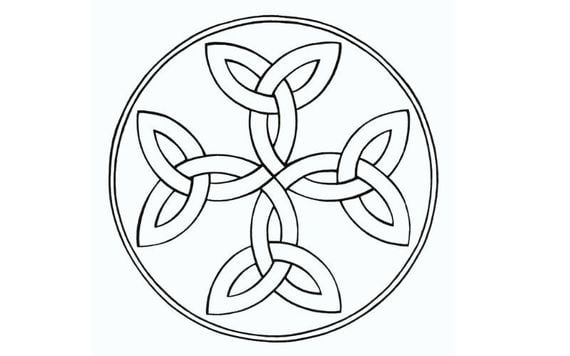
It represents unity, balance, and the eternity of God.
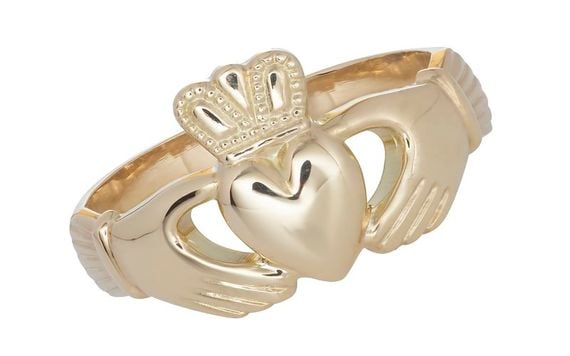
The Claddagh ring is known worldwide and continues to be worn as jewelry because of its meaning. The heart on the ring represents love while the hands represent friendship, and the crown represents loyalty.
Celtic Cross
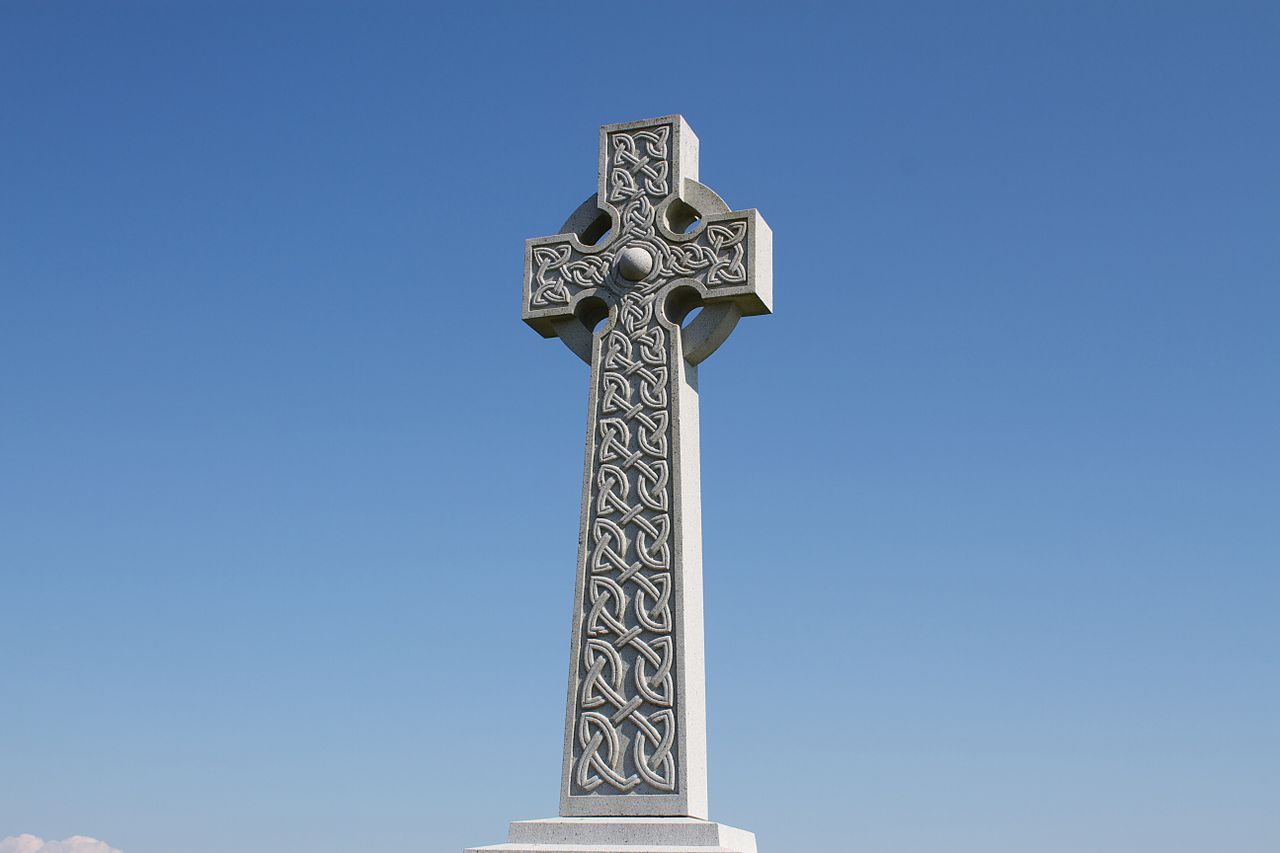
Celtic Cross.
It’s believed that the first Celtic cross was formed by St. Patrick while bringing Christianity to the Druids.
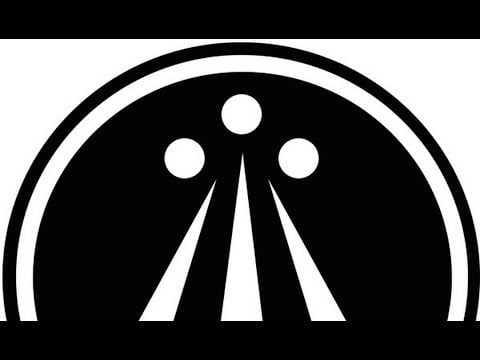
Celtic symbols and their meanings: Awen
The Awen is a Neo-Druid symbol of balance.
* Originally published in August 2017. Updated in 2024.

GOAL USA is inviting you to join the challenge of a lifetime - the Great Ethiopian Run!

How the Mater Hospital has been part of Ireland’s history thanks to caring people like you…
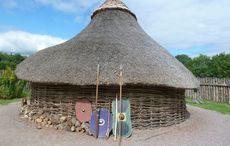
Eating like our Irish Iron Age ancestors

Have your say: Northern Ireland launches public consultation
Myth busting the viral 'Irish castle island'
‘Extraordinary event’ for Garda at Ireland v England football game
“Between the jigs and reels” – what’s behind my Irish Granny’s sayings
Restored creamery in Kerry hits the market at €695k
On This Day: Irish MP Tom Kettle dies during Battle of the Somme
Relax with your loved ones this fall at the Heritage, the ultimate getaway in County Laois
WATCH: A look inside Irish Montessori schools of the 1970s
Study claims that Irishmen descended from Turkish farmers
irish culture and traditions
because being Irish is cool

12 Important Celtic Symbols and Meanings

It shouldn’t come as a surprise that Celtic symbols and the meanings they represent are deeply ingrained in Irish history and culture. The ancient Celts carried several symbols with them to Ireland, including the Celtic Knot and the Celtic Cross. These symbols date back thousands of years. The following list provides explanations of some of the most well-known Celtic symbols .
12 Celtic Symbols
- Celtic Tree of Life
- Celtic Cross
- Celtic Knots
- Trinity Knot
- Celtic Harp
- Claddagh Ring
- Celtic Sisters Knot
- The Celtic Mothers Knot
There are many Irish and Celtic symbols that have been passed down through the generations, but their meanings have never been documented in writing. However, throughout the course of history, several symbols have been given various meanings.
There is an underlying message of love, faithfulness, strength, oneness, and religious conviction included throughout these symbols. The concept that everything of importance can be broken down into three components is reflected in a number of Celtic symbols , many of which are composed of three entwined sections.
These included the Earth, the sky, and the sea as their respective kingdoms. Additionally, the Celts separated the stages of life into three distinct periods: the past, the present, and the future.
The Symbol of the Celtic Tree of Life Meaning
A powerful and earthy Celtic emblem that is often linked with the Druids is the Tree of Life, whose branches and roots are intricately entwined with one another to create a tree shape.
The Tree of Life is a representation of power, longevity, and knowledge in Celtic culture . Strength, longevity, and wisdom were all qualities that were highly valued by the Celts, and the Tree of Life emblem from Celtic culture is a representation of these qualities. The ancient Celts had the belief that the Celtic tree of life represented rebirth in their society.
The Symbol of the Celtic Cross Meaning
The Celtic Cross has been found in Ireland since the early middle ages, and it is often considered to be the most recognized of all the many symbols associated with the Celtic people. Kilkenny and Laois are two counties in Ireland that are home to some of the oldest examples of Celtic Cross designs. These designs date back to the eighth or ninth century and can be seen in both counties.
Originally, these crosses would have been crafted out of wood or metal, and they would have been quite a bit smaller than the stone pillars with carved designs that are still visible in various locations around Ireland. During the Middle Ages, several Celtic Cross symbols were etched into the rock; however, as time progressed, these carvings were refined and eventually created as freestanding stones, also known as monoliths.
There are several interpretations that may be given to the Celtic Cross emblem . There are a lot of different interpretations of the significance of the Celtic Cross. One possible meaning ascribed to the four ‘arms’ of the symbol is that they stand for the four cardinal directions that may be found on earth.
One other meaning that may be attributed to the Celtic Cross is that it is a representation of the four fundamental elements: earth, fire, water, and air. The four quadrants may alternatively be interpreted as representing the four distinct seasons of the year or the morning, afternoon, evening, and midnight hours of the day, respectively.
The Celtic Symbol the Dara Knot Meaning
The Dara Celtic Knot is another of the most well-known symbols that originate from Celtic culture. This emblem has a pattern that is weaved together, and its name originates from the Irish term “Doire,” which may be translated as “oak tree.”
This term is the progenitor of the Dara Knot , which is a symbol that portrays the intricate root structure of a very old oak. The Dara Knot, much like other Celtic knot symbols, consists of lines that are entwined with one another and do not have a beginning or an end.
There is no one specific pattern for the Dara Celtic Knot ; nonetheless, the several variations have the motif of an oak tree and its roots as its focal point. Strength was unequivocally portrayed by the Dara Celtic Knot. When times were difficult, the Celts would go to the symbol to provide them the fortitude and inner insight necessary to get through the ordeal.
The Symbolic Meaning of Celtic Knots
There are many different kinds of Celtic Knots, despite the fact that they are often used as a sign of Celtic culture . Celtic knots may be thought of as intertwined rings and loops that do not have a beginning or an end. The infinity sign and the never-ending circle of life are represented by Celtic knots. The use of Celtic motifs in Celtic Knot Tattoos and Celtic Knot Jewelry has attained widespread popularity in recent years. There are many different connotations associated with the symbolism of Celtic knots . Some of these meanings include family, strength, protection, and love.
Celtic Trinity Knot Meaning
There are many different kinds of Celtic Knots , despite the fact that they are often used as a sign of Celtic culture. Celtic knots may be thought of as intertwined rings and loops that do not have a beginning or an end. The infinity sign and the never-ending circle of life are represented by Celtic knots . The use of Celtic motifs in Celtic Knot Tattoos and Celtic Knot Jewelry has attained widespread popularity in recent years. There are many different connotations associated with the symbolism of Celtic knots . Some of these meanings include family, strength, protection, and love.
It is said that the Triquetra is the earliest emblem of spirituality in existence. It is illustrated in the Book of Kells, which was written in the 9th century, and it also occurs in Norwegian stave churches that were written in the 11th century. The intricate Triquetra, also known as the Trinity Knot or the Celtic Triangle, is one of the most beautiful symbols associated with the Celtic culture. It depicts a circle that has been interlaced with a continuous sign that has three points.
Many people are of the opinion that this sign conveys the Holy Trinity doctrine that was prevalent in early Celtic Christian communities . God the Father, God the Son, and God the Holy Spirit make up what is known as the Holy Trinity.
Meaning of the Celtic Triskelion Symbol
Another of the old Irish and Celtic symbols , the Triskelion is also known by its ancient name, the Triskele. It is believed to have been in use throughout the Neolithic period, which occurred approximately 3,200 years BC. Once again, this spiral symbol recalls the Celtic concept that significant things always occur in threes.
The Triskelion is constructed similarly to the Manx three-legged sign in that it has three clockwise spirals linking from a central center. In point of fact, “three-legged” is what the Greek term “triskele” signifies. The triskelion, which exhibits rotational symmetry and is often used in Celtic art and architecture, is also sometimes referred to by its alternative name, the triple spiral.
It is said that the significance of the Celtic Triskelion is a symbol of both development and power. The Triskelion, which gives the impression that it is moving, is also a symbol of the resolve to advance in life and triumph over challenges.
Celtic Harp Symbol and Meaning
The Irish or Celtic harp, also known as the Irish clairseach and the Scottish Gaelic clarsach, was the traditional harp played in medieval Ireland and Scotland. It was distinguished by its enormous soundbox, which was carved from a single block of wood; its heavy, curved neck; and its deeply out curved fore pillar, a form that was also shared by the medieval Scottish harp.
The harp has been used as a representation of Ireland in the country’s heraldry at least since the 13th century. According to the National Library of Ireland, it was first shown on a backdrop of a dark blue color, which was supposed to symbolize Ireland’s sovereignty in early Irish mythology. This was the original setting for the image.
The Shamrock’s Meaning as a Celtic Symbol
St. Patrick, the patron saint of Ireland, is largely responsible for the deep connection that exists between the shamrock and Celtic Irish culture. There are tales that witness the fact that Saint Patrick explained the secrets of the Holy Trinity to the pagan Celts by employing the three petals of the shamrock. Each individual leaf was a representation of the Holy Trinity: Father, Son, and Holy Spirit.
Shamrocks, like many other Celtic symbols, are composed of three interlinked sections. This configuration is meant to convey the idea that anything of value can be broken down into three components. These included the Earth, the sky, and the sea as their respective kingdoms. Additionally, the Celts separated the stages of life into three distinct periods: the past, the present, and the future.
Claddagh Celtic Symbol Meaning
A true symbol of Celtic love. Claddagh rings are often given to one another not just in Ireland but also in other parts of the world as a sign of undying love and companionship. The design was conceptualized by Richard Joyce in the seaside community of Claddagh, from where the term “Claddagh” gets its name.
Tradition dictates that you should never purchase a Claddagh for yourself; rather, you should give one as a present. Since the Claddagh ring is often worn as a wedding band, this advice makes sense.
Symbolic Celtic Sisters Knot Meaning
The Celtic Sisters Knot heart is a sign of sisterhood and the strong, everlasting relationship that we have with our sisters and friends. It is also a symbol of the Celtic people’s connection to their heritage. The elaborate Celtic knot that represents sisters is a continuous thread that stands for an unending affection for one another. Within the core of the Celtic Sisters Knot is a stylized triquetra, often known as a triple spiral. This sign represents the three phases that a woman goes through. Maid, mother, and wise woman are the three phases of a woman’s development. Where are you and your sisters now located in the circle that is your life? Using the emblem of the Celtic Sisters Knot is a wonderful way to honor sisterhood, which is the strong and enduring link of friendship that exists between women.
Celtic Mothers Knot Meaning
The intricate Mothers Knot is a Celtic sign that represents the connection between a mother and her child, or in Christian parlance, the Madonna and Child. The symbolism of the Celtic Mothers Knot is one of unending love shared between a mother and her child, as well as trust in God and a connection to one’s Celtic background.
A mother’s undying love is represented by this ancient Celtic emblem. This Celtic motherhood sign represents an indestructible, never-ending link between love and life. It doesn’t matter what your particular religion or beliefs are; it still holds true.
In Celtic culture, the Mothers Knot is traditionally shown as two hearts that are intertwined and do not have a beginning or an end. One heart is smaller than the previous one, and children are often represented by a dot, another heart, or some other symbol either within or outside the heart pattern. As the number of children in the family increases, more symbols may be added to symbolize each of them.
Celtic Ogham Symbols and Their Meanings
The Ogham alphabet is one that has been around for a very long time. The word ogma, from which the name ogham is derived, alludes to the Celtic God of Elocution or Eloquence. Ogham is derived from this word. Each group of one to five lines of the Ogham alphabet is positioned vertically above a stem line, and each group of lines represents a different letter in the Ogham alphabet.
The history of the stunning, alluring, and mystical Ogham alphabet is shrouded in mystery due to the passage of time. The Ogham script is the first known written alphabet to have been used in Ireland, although the precise circumstances surrounding its development remain unknown.
Ogham is thought to have been created in the first century A.D. by some specialists, while others put its beginnings in the fourth century. The Ogham alphabet is said to have originated in the southwest of Ireland, most likely in the counties of Cork or Kerry; yet, this mysterious script likes to keep its origins a mystery!
Researchers are only able to say with absolute confidence that it is an old alphabet that was in widespread use from the fourth to the ninth century, mostly for ceremonial writing. It is now able to share this glorious heritage thanks to our magnificent assortment of Ogham jewelry.
Is there a beautiful Celtic sign that represents love?
According to the information presented earlier in this article, the Serch Bythol is the most appropriate representation of love. This emblem is composed of two Celtic knots, often known as triskeles, which stand for a love that is unending.
Are the meanings of Celtic symbols and lore still applicable today?
The connotations that are attached to many Celtic symbols are still widely used in contemporary Irish society and in Celtic jewelry. It should come as no surprise that there are some individuals who have a greater level of interest in them than others. Mainly those of the Celtic nations. The 6 Celtic nations are Brittany in France, the Isle of Man, Ireland, Scotland, Cornwall in England, and Wales.
How to Pour and Drink a Pint of Guinness
Related Posts
- What it Means to be Celtic
- The Meaning of Mac and Mc in Irish Family Names and Their Origins
- A Guide to Celtic Ogham Symbols and Their Meanings
- The Celts – A Guide to Their Culture
Share this:
Published by Kierand LLC
We at The Irish Jewelry Company take pride in making the Irish gift giving experience modern and convenient. The Irish Jewelry Company celebrates their Celtic heritage and a love of Ireland through original Irish Jewelry design. Their beautiful Irish jewelry is steeped in Celtic symbolism and rich in Irish tradition. View all posts by Kierand LLC
Leave a comment Cancel reply

- Already have a WordPress.com account? Log in now.
- Subscribe Subscribed
- Copy shortlink
- Report this content
- View post in Reader
- Manage subscriptions
- Collapse this bar
The Celtic Triskele: History and Meaning
Categories Culture and Food
The Triskele or Triple Spiral is said to be the oldest symbol of spirituality. Its name comes from the Greek words “Tri” and “Skelos” which means “three legs”. It is an ancient symbol that has been associated with Celtic and pre-Celtic cultures, particularly those from the British Isles and parts of Western Europe.
The spiral is said to be an important spiritual marking that dates back to ancient origins in Irish culture .
Made up of 3 joining spirals, the ancient Irish believed that everything happens in batches of 3, or ‘the 3rd times the charm’ – a belief that still exists today.
Things you'll find in this article
Triskele
Triskelion , history of triskele.
- Cycles and Motion
- Spiritual and Mystical Symbolism
- Evolution and Progress
- Celtic Culture
Other Names For Triskele

The spirals are also said to symbolize the inner and outer worlds and the themes of birth, death, and rebirth as well as the unity of mental, physical, and spiritual self.
Is It Called Triskele Or Triskelion?
Both “Triskele” and “Triskelion” refer to similar motifs with three interlocked spirals or three bent legs, and the terminology can sometimes be used interchangeably. However, there are slight differences in how the terms are used in various contexts:
This term is often associated with Celtic culture and symbolism. It typically refers to the motif of three spirals or legs arranged in a specific way, with a more pronounced focus on the Celtic and pre-Celtic interpretations and symbolism.
The Triskele is often considered a symbol of the Celtic tradition and its various meanings.
This term is a more general term and can refer to the same motif of three interlocked spirals or legs but is not limited to Celtic symbolism. It is used in a broader context to describe similar symbols found in other cultures and regions.
The term “triskelion” is often associated with ancient Greek and Sicilian symbolism, for example, where it appears on coins and in various architectural and artistic contexts.
In summary, while the motifs themselves are similar, “Triskele” is often specifically associated with Celtic culture, while “Triskelion” has a broader application and can encompass similar symbols found in various cultures.
The specific interpretation and meaning of these motifs may vary depending on the cultural and historical context in which they are found.
This symbol dates back to the Neolithic era, as evidenced by its presence in the entrance of the 5,000-year-old Newgrange Passage Tomb in Ireland’s Boyne Valley .
Artifacts and markings found in various ancient sites also show that the Triskele became popular within the Celtic culture from 500 B.C. onwards. These artifacts are found in Ireland, as well as Europe and across America.
The triskele was a Celtic symbol that had a variety of meanings for early Pagans.
One interpretation links the triskele to the sun, triadic gods, and the three domains of land, sea, and sky. The triple spiral was believed to also represent the cycles of life (birth, death, rebirth) as well as the Triple Goddess (maiden, mother, and wise woman).
For the Celtic Christians, the symbol was used to represent the Holy Trinity.
The original three spiral design of the triskele has been reinterpreted in different ways by other cultures. One version depicts an image of three human legs around a fixed centerpiece, such as the one in the Sicilian flag.
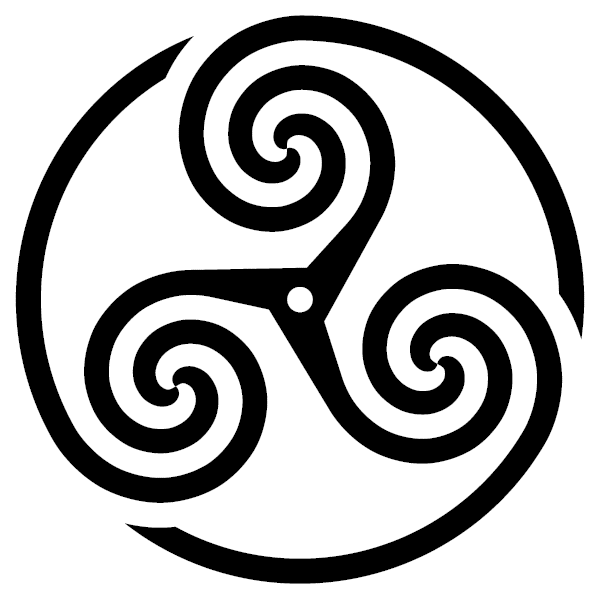
Today, the triskele/triskelion is seen as part of the design of various emblems, logos, and seals. For example, the symbol is featured on the Flag of the Isle of Man and it was also the basis for the Irish Air Corps roundel.
You can see the symbol in the seal of the United States Department of Transportation, and in RCA’s plastic adapter for vinyl records the ‘Spider’.
In popular culture, the triskele is seen in TV shows such as in Marvel’s Agents of S.H.I.E.L.D.
Triskele or Triskelion Meaning and Symbolism
The Triskele or Triskelion is a symbol that consists of three interlocked spirals. It is one of the oldest Irish Celtic symbols in existence, and is best known to represent the three worlds; the celestial, physical, and spiritual.
It is also said to symbolize the connection between the three domains namely the earth, water, and sky.
The Celts associate a variety of meanings to the triskele, with each of them dealing with some aspect of personal growth, human development, and spiritual progress. Examples of these are life-death-rebirth, past-present-future, and creation-protection-destruction.
Many other cultures around the world have adopted the triskele symbol over time because of the versatile meanings and aspects they represent.

Creative Commons via Pixabay | By PlumePluome
An interesting theory regarding the meaning of the Triskele connects it with the concept of reincarnation. This is because the symbol consists of one seemingly continuous line that can be compared to the continuous movement of time.
The triskele is said to symbolize the whole process of always moving forward until one reaches a state of profound enlightenment and understanding.
There is no single meaning or representation of the triskele, and it is interpreted in a variety of ways by the Celts themselves.
This versatility makes this ancient symbol significant not just among the Celts, but in other cultures as well. It is used by organizations in emblems and seals, to complement their core values, mandate and vision.
You can also find the triskele in product logos, to symbolize durability, stability, and strength.
We also see the three spirals in art, decor, woodwork, and a lot of other things we see or use every day. The triskele design serves as both a statement and reminder of aspects that are important to us.
The exact meaning and symbolism of the Triskele have evolved over time and can vary depending on the context and culture in which it is found. Some common interpretations include:
The Triskele often represents triplicity or the concept of three-in-one. It can be associated with various trinities or triads, such as life-death-rebirth, earth-water-sky, or past-present-future. This symbolism reflects the interconnectedness of these aspects of existence.
Cycles and Motion
The spirals in the Triskele may symbolize cycles, movement, and perpetual motion. This can relate to the cycles of nature, the changing seasons, and the eternal flow of time.
Spiritual and Mystical Symbolism
In some contexts, the Triskele has been associated with spiritual and mystical themes, representing the interconnectedness of mind, body, and spirit or the journey of self-discovery and enlightenment.
Evolution and Progress
The Triskele can also be seen as a symbol of personal growth, evolution, and progress. It reflects the idea that life is a continuous journey of learning and development.
Celtic Culture
The Triskele is closely linked to Celtic culture, and its presence can be found in Celtic art, particularly in designs on ancient artifacts, such as the Book of Kells and various stone carvings.
Overall, the Triskele is a versatile symbol that has been embraced by various cultures and movements. Its meaning may vary depending on the specific interpretation and the historical and cultural context in which it is used. It remains a significant and enduring symbol in Celtic and Celtic-inspired art and symbolism.
The Triskele, with its three interlocked spirals or bent legs, is known by various names and may be referred to differently in different cultures or contexts. Some other names for the Triskele or similar symbols include:
- Triple Spiral
- Triple Helix
- Triskelion (as mentioned earlier)
- Triple Horn of Odin – In Norse mythology, this symbol represents Odin’s three draughts from the Well of Wisdom, which gave him knowledge and wisdom.
- Spiral of Life – Referring to the cyclical and interconnected nature of life and existence.
- Threefold Sun – In some contexts, it’s seen as a representation of the sun and its three aspects – sunrise, zenith, and sunset.
- Triple Goddess Symbol – In neopagan and Wiccan traditions, the Triskele can represent the triple aspects of the Goddess (Maiden, Mother, Crone).
These are just a few of the names and interpretations of similar symbols that share the Triskele’s basic motif of three interlocked spirals or legs. The meaning and significance of these symbols may vary depending on the culture, belief system, or historical context in which they are found.
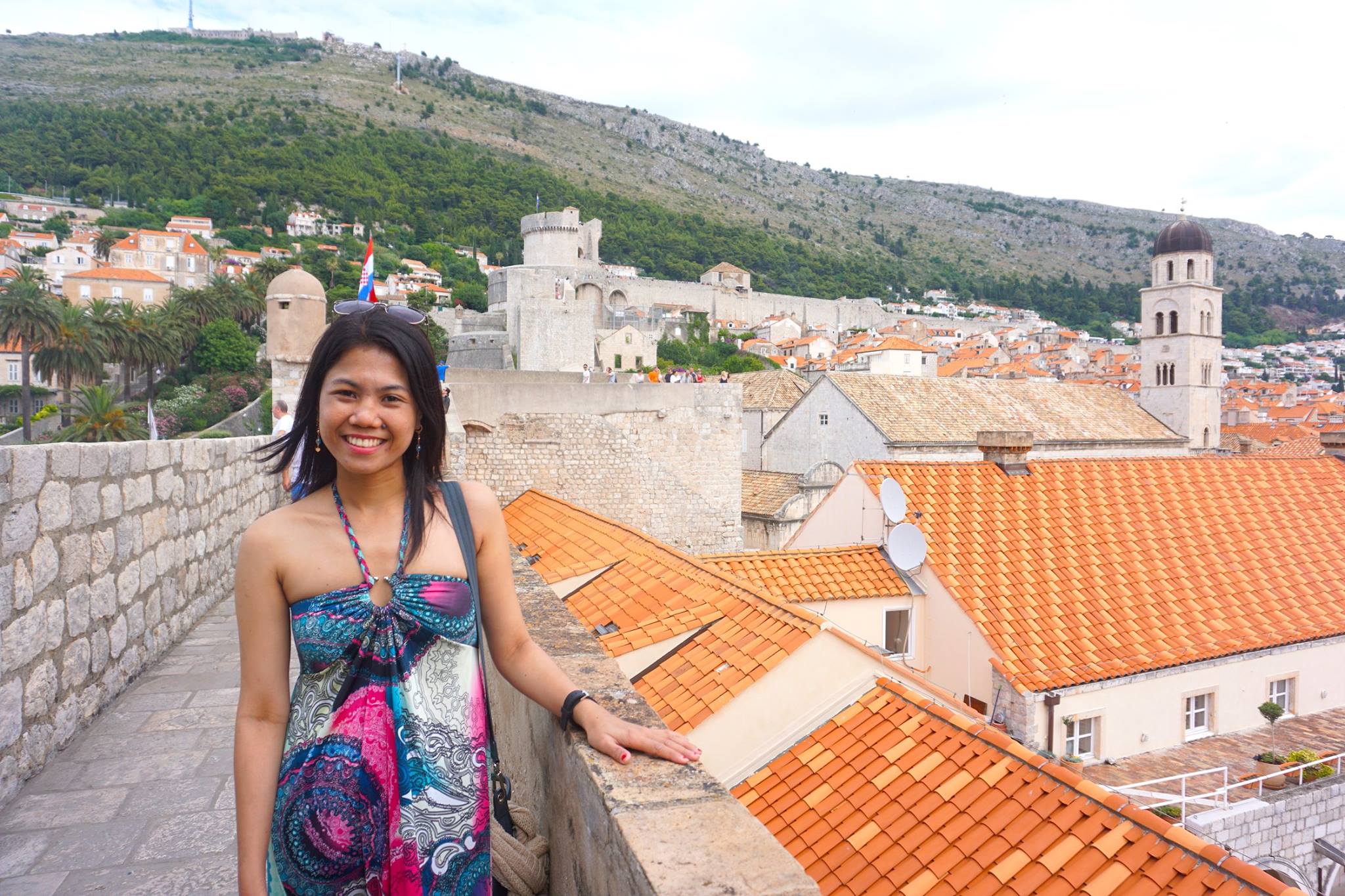
Hi, I’m Christine – a full-time traveler and career woman. Although I’m from the Philippines, my location independent career took me to over 40 countries for the past 8 years. I also lived in 3 continents – from the Caribbean, South East Asia to Africa. But despite living in several countries, my love for Ireland remains the same. A country that had been a part of my life since I was 14 because of my love for Irish music and bands. Ireland Travel Guides was born because of this passion and hopefully, in some little ways, this website will be able to help you on your next trip to Ireland.
10 Beautiful Celtic Earrings For Special Women - Ireland Travel Guides
Tuesday 3rd of August 2021
[…] pair of triquetra earrings is more fun and eccentric than the last pair, and would instantly spice up any […]
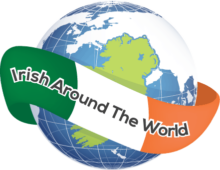
Ancient Celtic Symbols And Their Meanings
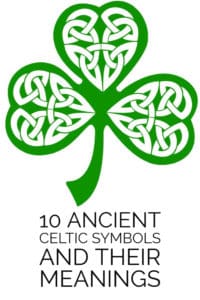
The Celtic version of the symbol features their unique knotwork style which means it is endlessly looping and interweaving.
If you see a triquetra symbol with a circle going through it; it means it is a symbol of eternity. Check out our Trinity Knot Meaning article for more details on this fascinating Celtic symbol.

IMAGES
VIDEO
COMMENTS
The crown stands for loyalty, the heart for love, and the hands for friendship. It's a lovely illustration of the value of these traits in interpersonal interactions. 5. Harp. Featured on Irish coins, the harp is a fascinating symbol that represents Ireland's rich cultural heritage.
15 Celtic Symbols and Meanings (An Irishman's 2024 Guide)
The Irish harp, also known as the Gaelic harp, Celtic harp, or Clarsach, is a lesser-known traditional symbol of Ireland and believed to represent royalty and the immortality of the soul. In ancient times, bards and musicians played the harp for their chieftains and the tradition continued for later kings.
The Celtic Cross predates Christianity and is believed to be a symbolic compass. It represents the four cardinal directions of Earth, Fire, Wind, and Water. It also represents the mind, body, soul, and heart. The Celtic Cross emerged in the Middle Ages, and early examples date to around the 9 th century.
Here are some popular Celtic symbols and their meanings: The Celtic Tree Of Life - Balance, Harmony, and the doorway to the otherworld. The Celtic Shield Knot - Protection and Togetherness. The Dara Knot - Strength, Power, and Wisdom. The Ailm - Strength and Healing.
Thor's Hammer shows the Celtic sign for love and strength. 10. The Triskele - Celtic Symbols. Another Irish symbol embodying the Celtic belief in the triad is the Triskele, also known as the Triskelion. Key Feature: The Triskele, one of the oldest Irish symbols, holds profound significance in Celtic culture.
IB4UD's interesting facts about Celtic symbols: 10. Carolingian Cross - a cross made out of four uniform arms. 9. Claddagh ring - love, loyalty, and friendship. 8. Celtic Tree of Life (Crann Bethadh) - imagination and intuition. 7. The Celtic Cross - light or energy.
The flag of Ireland consists of three vertical bands of green, white and orange. Each color in this flag is uniquely symbolic. Since at least the late 1700s, the color green has been associated with Irish republicanism and thus the largely Roman Catholic population of the south of Ireland.
The Claddagh Ring is another beautiful and iconic Irish emblem, often associated with love and friendship. The design is unmistakable, two open hands encircle a heart, topped with a crown. Contrary to popular belief, it's not a Celtic symbol of love.In fact, its origins are far more recent, dating back to around the 17th century.
Shamrock. The Celtic symbol for luck and the unofficial, yet the most recognizable symbol of Ireland. The shamrock is a single-stemmed plant with three leaves and grows on the hills of Ireland ...
20 Celtic Symbols: Ancient Irish and Druid Meanings
The Triskelion, Triskele or threefold spiral is an ancient symbol which features an interlocked triple spiral. It can appear that the symbol has three legs, which is where the Greek origin of the word "Triskele" stems from. Although the word Triskele is older in origin, the Triskelion is commonly used.
20+ Celtic Symbols: Fully Updated Meanings for 2024. Olympic Skater Riverdance's Across Ice, Brings Entire Stadium To Their Feet. Adele's "Hello" Sung In Irish Is Absolutely Breathtaking (Including Lyrics) Celtic Thunder sings "Amazing Grace," and the crowd rises to their feet in glory. 17 Things That Irish People Say Vs What They Really Mean ...
Triskelion / Triskele Symbol: Meaning, History Celtic Link
7. Celtic symbols and their meanings: Triskelion. The Triskelion symbol is made up of three conjoined spirals and rotational symmetry. Nature and the movement of life is the well-known meaning of ...
The Triskelion (Triskele): symbol meaning and history
It shouldn't come as a surprise that Celtic symbols and the meanings they represent are deeply ingrained in Irish history and culture. The ancient Celts carried several symbols with them to Ireland, including the Celtic Knot and the Celtic Cross. These symbols date back thousands of years. The following list provides explanations of some of the most well-known Celtic symbols.…
One of the most iconic Irish Celtic symbols is the Triskele, also known as the Triple Spiral. This symbol, consisting of three interlocking spirals, is believed to represent the three realms of existence: land, sea and sky. It is also associated with the cycles of life, deathand rebirth. The Triskele is found in various ancient Celtic artifacts ...
The Celtic Cross: This symbol is a fusion of the Christian cross and Celtic knotwork. It represents the union of faith and tradition. The cross represents the Christian faith, while the knotwork represents the Celtic heritage. The Celtic Cross is a popular symbol in Ireland and it can be found on churches, gravestones and other objects.
The Triskele or Triskelion is a symbol that consists of three interlocked spirals. It is one of the oldest Irish Celtic symbols in existence, and is best known to represent the three worlds; the celestial, physical, and spiritual. It is also said to symbolize the connection between the three domains namely the earth, water, and sky.
The claddagh is a traditional Irish ring given as a token of friendship or love or worn as a wedding ring. The design design features two hands clasping a heart, and usually surmounted by a crown. The elements of this symbol are often said to correspond to the qualities of love (the heart), friendship (the hands), and loyalty (the crown).
The Celtic version of the symbol features their unique knotwork style which means it is endlessly looping and interweaving. If you see a triquetra symbol with a circle going through it; it means it is a symbol of eternity. Check out our Trinity Knot Meaning article for more details on this fascinating Celtic symbol. By Irish Around The World.
Trinity Knot - a recognisable Irish Celtic symbol for family. This is one of the Irish Celtic symbols for family, as well as one of the most well-known Celtic representations. The Trinity Knot is also commonly referred to as a triquetra. This, in Latin, means a three-cornered shape. The symbol is made up of a continuous interweaving knot shape.